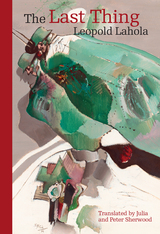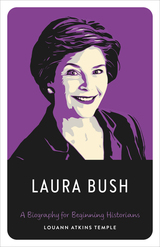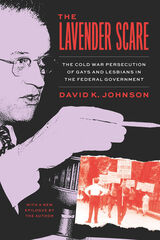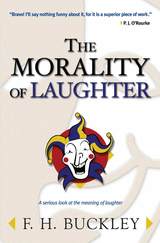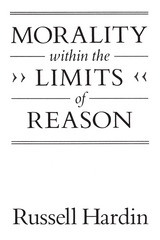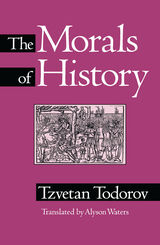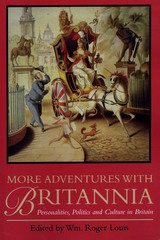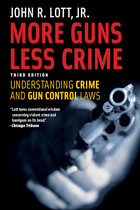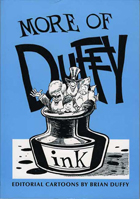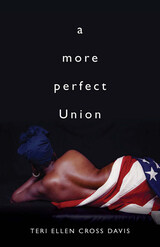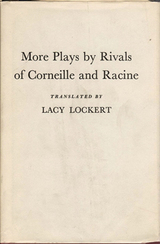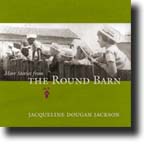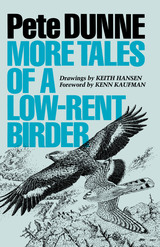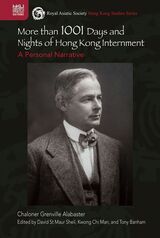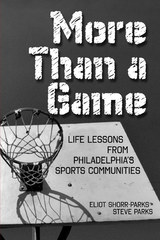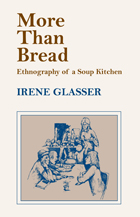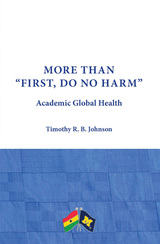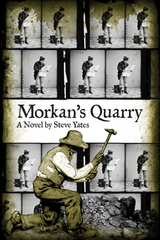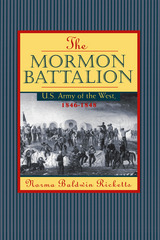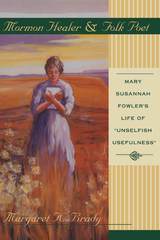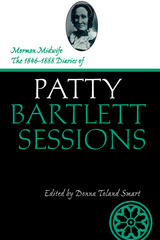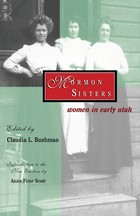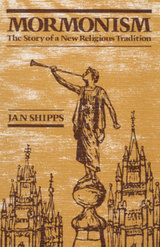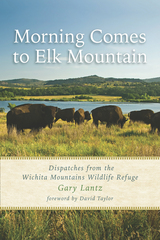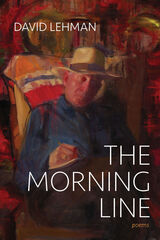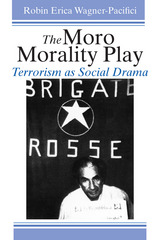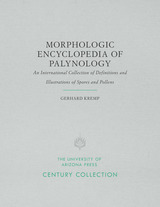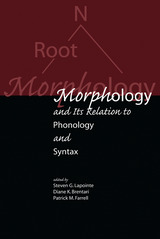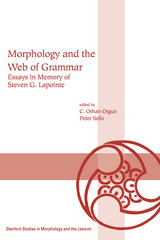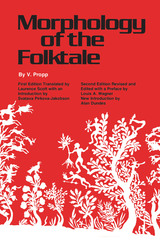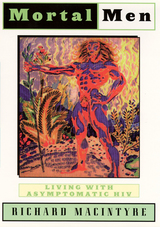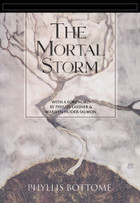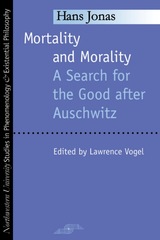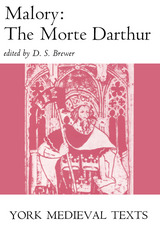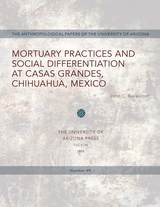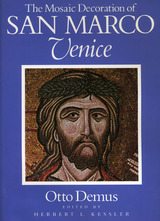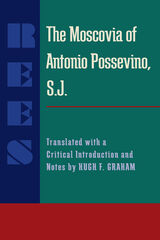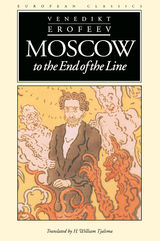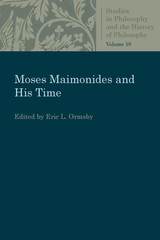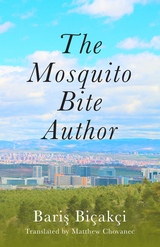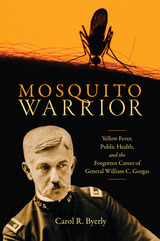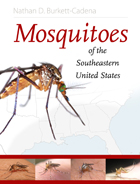The Morality of Laughter
F. H. Buckley
University of Michigan Press, 2005 “Bravo! I’ll say nothing funny about it, for it is a
superior piece of work.”
—P. J. O’Rourke
“F. H. Buckley’s The Morality of Laughter is at once
a humorous look at serious matters and a serious
book about humor.”
—Crisis Magazine
“Buckley has written a . ne and funny book that will
be read with pleasure and instruction.”
—First Things
“. . . written elegantly and often wittily. . . .”
—National Post
“. . . a fascinating philosophical exposition of
laughter. . . .”
—National Review
“. . . at once a wise and highly amusing book.”
—Wall Street Journal Online
“. . . a useful reminder that a cheery society is a
healthy one.”
—Weekly Standard
 The Morality of Mrs. Dulska: A Play by Gabriela Zapolska
Gabriela Zapolska
Intellect Books, 2007 Born during the tumultuous one-hundred-year division of Poland by Austria, Prussia, and Russia, Gabriela Zapolska (1857–1921) was an actor, journalist, and playwright who wrote over thirty plays in her lifetime. In her best-known work, The Morality of Mrs. Dulska, a tyrannical landlady harasses, exploits, and even prostitutes the eccentric cast of tenants who occupy her stone tenement building. The petty-bourgeois tragicomedy that ensues is regarded as a landmark of early modernist Polish drama. A cross between Bertolt Brecht’s Mother Courage and Patricia Routledge’s Hyacinth Bucket, Mrs. Dulska keeps her purse strings tightly drawn and shows no compassion towards the sad plights of her lodgers—until she is forced to come to terms with her own possessive love for her son. Now available for the first time in an English-language edition that firmly situates the play in the context of its performance history, Zapolska’s incisive play is an uncompromising look at gender, class, and relationships in fin-de-siècle Poland. “In her introduction to Zapolska's seminal play, Murjas discusses the many intriguing challenges involved in its cultural transference, combining the perspective of translator with that of theatre practitioner. This book is a rare treat in a much neglected area of modern scholarship.”—Elwira Grossman, University of Glasgow
 The Morality of Revolution: Reeducation Camps and the Politics of Punishment in Socialist Mozambique, 1968–1990
Benedito Luís Machava
Ohio University Press, 2024 The Morality of Revolution offers the first historical examination of urban cleanup campaigns and reeducation camps in socialist Mozambique. The book presents the camps as the template for independent Mozambique’s punitive society under Frelimo. Individuals who transgressed the law and socialist normative codes of behavior were targeted by the revolutionary party, which obsessively pursued putative wrongdoers in an effort to build a new society from the ruins of Portuguese colonialism. Benedito Luís Machava argues that the socialist experiment, while ushering in an era of economic development and social progress, sought also to remake the moral fabric of Mozambican society. At play was the contradictory combination of high modernist, socialist aspirations and conservative anxieties rooted in a moralist reading of society. From its inception in 1974 to its demise in the late 1980s, the reeducation program was a do-it-yourself enterprise. The Frelimo government, unable to finance and support the carceral regime, expected its agents and the detainees to carry out the ambitious project on their own. Without material and human resources to run the program, state officials compelled detainees to build their own detention facilities; to grow their own food; to enforce their own political education; and in many ways, to oversee their own incarceration. The state’s incapacity to translate the salvationist ideas of reeducation into planned action—a general feature of the socialist experiment in Mozambique—produced spaces of social neglect and castigation that negatively affected both the inmates and the personnel tasked with disciplining and reeducating them.
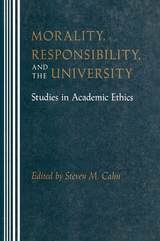 Morality, Responsibility, and the University: Studies in Academic Ethics
edited by Steven M. Cahn
Temple University Press, 1992 "[A] timely and important book.... These thoughtful essays surely will shape the debate about morality in higher education for years to come and provide guidance in the quest to improve the quality of campus Iife."
--Ernest L. Boyer, President, Carnegie Foundation for the Advancement of Teaching
This book, the first of its kind, consists of fourteen original essays by noted American philosophers critically investigating crucial moral issues generated by academic life. The authors ask: What are the standards of conduct appropriate in class-rooms, departmental meetings, and faculty meetings, in grading students, evaluating colleagues, and engaging in research?
"The need for appropriate, sustained, philosophical analyses and examinations of practical ethics dilemmas in academic life undoubtedly is required since the reporting of questionable conduct alone does little to resolve the problem. This book of essays provides a vehicle for beginning this sustained investigation."
--Betty A. Sichel, Long Island University
"The essays address neglected matters which not only should, but I believe will, be of interest to academics...and perhaps a few administrators, which would be a very good thing indeed."
--Hans Oberdiek, Swarthmore College
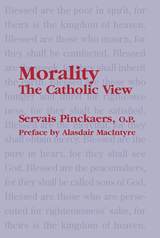 Morality: The Catholic View
Servais O.P. Pinckaers
St. Augustine's Press, 2003 Fr. Servais Pinckaers’s work is well on its way to being accepted as the work on Catholic moral thinking for the coming generation of laymen and students. Pinckaers sharply distinguishes this view of morality from modern “moralities of obligation,” which regard the moral life primarily as obedience to rules that limit human freedom and curb human desires. Pinckaers sees moralities of obligation as the logical outcome of a new understanding of human freedom. Instead of regarding freedom as the capacity to engage in excellent acts of virtue (freedom for excellence), the modern view understands freedom as the radical ability to do good or evil indifferently (freedom of indifference). Pinckaers argues convincingly that this view of freedom and the morality of obligation that flows from it have impoverished the Catholic understanding of the moral life. This work offers the reader a compelling itinerary of moral development, rooted in the theology of St. Paul and the morality of the Gospels. Now, for a new generation of students, the book is made available in an ebook version. In addition, under the direction of Fr. Michael Sherwin, a teacher’s edition of the work is to be published, which will greatly aid the teacher in high school or home school to help his or her students to gain the most from this seminal work. “As Alasdair MacIntyre notes in the preface, the work of Pinckaers attracted strong and fully justified notice in this country with the publication in English of his The Sources of Christian Ethics. As Pinckaers himself notes in the text, excellently translated by Michael Sherwin, the interest should in no way be limited to Roman Catholics. Morality recasts the earlier book in an argument that is both lower and upper case ‘catholic,’ and is accessible to readers and teachers outside the limited circle of moral theologians and academic ethicists. Pinckaers contends that Christian morality is not first of all about obligations but about happiness, understanding that the happiness of union with God is our natural destiny made possible by grace. The Sermon on the Mount is at the center of an approach to morality that turns on the distinction between ‘freedom for excellence’ and ‘freedom of indifference,’ the former understood as human flourishing and the latter as a ‘neutral’ capacity to choose between controversies. The proposal of Morality is thoroughly Christ-centered, humanistic, and faithful to the magisterial teaching of the Church. Warmly recommended.” - First Things “If you want to have the experience of reflecting on Catholic morality as though you were reading about it for the first time, treat yourself to Father Servais Pinckaers’ Morality: The Catholic View. He has recovered the classical view of the moral life as the quest for happiness and has presented it with disarming simplicity. Bringing us back to the Sermon on the Mount and Romans 12–15, the writings of Augustine and Aquinas, and the theme of natural law, he has freed those texts from the layers of legalism which has hidden their liberating, spiritual powers for moral living. By distinguishing freedom of indifference from freedom for excellence, he has restored a wise vision of freedom. No one has shown better the role of virtues as building blocks for morality. Catechists need to read this book.” Rev. Alfred McBride, O.Praem., Professor of Homilectics and Catechetics at Blessed Pope John XXIII Seminary, Weston, Massachusetts
“Father Pinckaers has given us a masterful exposition of Christian living. The clarity and brevity of his presentation – captured well by the translator – make this book ideal for classroom and parish use. “Readers will find the historical and systematic observations very informative.” Romanus Cessario, St. John’s Seminary, Brighton, Massachusetts
 Morality Truly Christian, Truly African: Foundational, Methodological, and Theological Considerations
Paulinus Ikechukwu Odozor, C.S.Sp.
University of Notre Dame Press, 2014 Given the largely Eurocentric nature of moral theology in the history of the Roman Catholic Church, what will it take to invest the theological community in the history and moral challenges of the Church in other parts of the world, especially Africa? What is to be gained for the whole Church when this happens in a deep and lasting way? In this timely and important study, Paulinus Ikechukwu Odozor brings greater theological clarity to the issue of the relationship between Christianity and African tradition in the area of ethical foundations. He also provides a constructive example of what fundamental moral theology done from an African and Christian (especially Catholic) moral theological point of view could look like.
Following a brief history of the development of African Christian theology, Odozor examines responses of African theologians to African tradition and Christian responses to the reality of non-Christian religions. In a context where the African religious experience and heritage are powerful sources of meaning and identity, Christian evangelization raises questions both about the African primal religions and about Christianity itself and its claims. Odozor takes up the subject of moral reasoning in an African Christian theological ethics and concludes with case studies that show how the African Church has tried to inculturate moral discourse on a religiously pluralistic continent and relate the healing gospel message to African situations. Students and scholars of moral theology and ethics and church leaders will profit from the issues raised in Morality Truly Christian, Truly African.
"This is an ambitious book. The scholarship is sound and the author engages a range of authors and their views. Odozor takes seriously the critical and moral demands of Christian theology as well as those of African indigenous religions and their cultures. There is perhaps nothing so thoroughgoing on this topic since Bénézet Bujo’s Foundations of an African Ethic: Beyond the Universal Claims of Western Morality." — M. Shawn Copeland, Boston College
"This work is truly astounding in its breadth and depth, and is bound to become a standard textbook in African moral theology. New is the accent on received Christian tradition as a principal source of such moral theology. Odozor engages in dialogue with various moral theologians (Karl Barth, Paul Tillich, Paul Knitter, and James Gustafson) and theologians of African morality (John Mbiti, Laurenti Magesa, and Elochukwu Uzukwu). The seven guidelines for theological inculturation in Africa are particularly illuminating and may be a good entry point into this work for the nonspecialist." —James Chukwuma Okoye, C.S.Sp., Duquesne University
Morality within the Limits of Reason
Russell Hardin
University of Chicago Press, 1988 This provocative, lucidly written reconstruction of utilitarianism focuses on the practical constraints involved in ethical choice: information may be inadequate, and understanding of causes and effects may be limited. Good decision making may be especially constrained if other people are closely involved in determining an outcome. Hardin demonstrates that many of these structural issues can and should be distinguished from the thornier problems of utilitarian value theory, and he is able to show what kinds of moral conclusions we can reach within the limits of reason.
 The Moralized Ovid
Pierre Bersuire
Harvard University Press, 2023 An influential medieval allegorical interpretation of the Metamorphoses that uncovers the hidden moral truths of Ovid’s stories, translated into English for the first time.
Written in about 1340 in Avignon by the Benedictine preacher Pierre Bersuire, The Moralized Ovid—commonly referred to by its Latin title, Ovidius moralizatus, to distinguish it from the anonymous French vernacular Ovide moralisé—was arguably the most influential interpretation of Ovid’s Metamorphoses in the High Middle Ages. It circulated widely in manuscript form and was frequently printed during the Renaissance. Originally intended as a sourcebook of exempla for preachers’ sermons, The Moralized Ovid provides not only a window into the reception of classical literature in the fourteenth century but also amazingly vivid details of daily life in the Middle Ages across all strata of society.
The work begins with a detailed description of the Greco-Roman gods, inspired in part by Bersuire’s friend and fellow proponent of classical poetry, Francesco Petrarch. It then retells selected major myths from Ovid’s Metamorphoses, each followed by numerous allegorical interpretations that draw from biblical stories, contemporary events, and the natural world.
This edition presents the first full English translation alongside an authoritative Latin text.
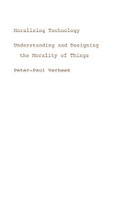 Moralizing Technology: Understanding and Designing the Morality of Things
Peter-Paul Verbeek
University of Chicago Press, 2011 Technology permeates nearly every aspect of our daily lives. Cars enable us to travel long distances, mobile phones help us to communicate, and medical devices make it possible to detect and cure diseases. But these aids to existence are not simply neutral instruments: they give shape to what we do and how we experience the world. And because technology plays such an active role in shaping our daily actions and decisions, it is crucial, Peter-Paul Verbeek argues, that we consider the moral dimension of technology. Moralizing Technology offers exactly that: an in-depth study of the ethical dilemmas and moral issues surrounding the interaction of humans and technology. Drawing from Heidegger and Foucault, as well as from philosophers of technology such as Don Ihde and Bruno Latour, Peter-Paul Verbeek locates morality not just in the human users of technology but in the interaction between us and our machines. Verbeek cites concrete examples, including some from his own life, and compellingly argues for the morality of things. Rich and multifaceted, and sure to be controversial, Moralizing Technology will force us all to consider the virtue of new inventions and to rethink the rightness of the products we use every day.
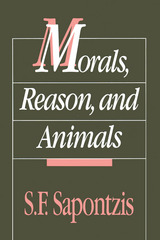 Morals, Reason, and Animals
S. Sapontzis
Temple University Press, 1992 "Direct and highly readable.... Sapontzis tries to show that certain differences between humans and animals, including differences in reason, even if they have moral import, do not make the case against animals that many people think they do and do not underwrite many facets of our present treatment of animals."
--R. G. Frey, Ethics
This book criticizes the common belief that we are entitled to exploit animals for our benefit because they are not as rational as people. After discussing the moral (in)significance of reason in general, the author proceeds to develop a clear, commonsensical conception of what "animal rights" is about and why everyday morality points toward the liberation of animals as the next logical step in Western moral progress. The book evaluates criticisms of animal rights that have appeared in recent philosophical literature and explains the consequences of animal liberation for our diet, science, and treatment of the environment.
The issue of animal rights has become of increasing philosophical and popular importance over the past decade. Morals. Reason, and Animals is the first extensive, second-generation contribution to this debate. Focusing exclusively on the fundamental philosophical issues, Sapontzis both undermines the arguments that have been raised against animal rights and constructs a rebuttal that avoids the pitfalls encountered by earlier defenses.
"In my opinion only five authors have made a significant philosophical contribution to the endeavor of placing animals in ethical theory: Singer, Frey, Regan, Mary Midgley, and S. F. Sapontzis. [Morals, Reason, and Animals is] an excellent, underappreciated work."
--David DeGrazia, Kennedy Institute of Ethics Journal
"Sapontzis presents a strong case for including animals in the moral community, and his work is an important and unique contribution to animal rights literature."
--The Animals' Agenda
"Sapontzis advances a bold and provocative defense for the liberation of animals, arguing that the requirement of rationality--in its morally relevant sense--does not rule out the possibility of extending moral rights to animals.... The views articulated here are original and, at points, controversial...making this an important book. Moreover, the style is extremely clear and readable. Highly recommended."
--Choice
"In this work, Sapontzis provides a philosophically sophisticated and far-ranging contribution to the current debate on animal liberation.... Given the wide range of arguments, authors, and topics discussed, [this] may be the most comprehensive work to date on animal liberation."
--Anthrozois
"This is an excellent contribution to the animal rights movement. The author's clear, simple, readable, and often witty style makes the book quite accessible to anyone with serious interest in the field.... Morals, Reason, and Animals is a highly original, creative, and important book."
--Bernard Rollin, Colorado State University
"This book offers a number of fresh perspectives and stimulating new arguments in a subject area that is dauntingly dense with articles and books [Sapontzis] has managed to present a broad variety of subtle philosophical issues in a clear and forceful manner...."
--Thomas Benson, Academic Dean, St. Andrews Presbyterian College
More Adventures with Britannia: Personalities, Politics and Culture in Britain
Edited by Wm. Roger Louis
University of Texas Press, 1998 Collecting the interpretations of outstanding writers on the literature and history of modern Britain, this book deals with a rich variety of themes, some familiar, many unexpected, taking the reader on a highly engaging excursion through British life and intellectual biography. The scope includes not only the personalities, politics, and culture of England, Wales, Scotland, and Ireland, but also the interaction of British and other societies throughout the world.
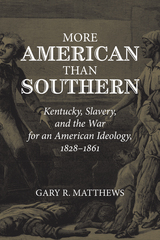 More American than Southern: Kentucky, Slavery, and the War for an American Ideology, 1828-1861
Gary Matthews
University of Tennessee Press, 2014 When Fort Sumter fell to Confederate troops in April 1861, most states quickly declared their allegiances to the North or South. Kentucky, however, assumed an antiwar posture that outlasted Fort Sumter by five months, begrudgingly joining the Union cause only when Confederate troops marched into the state and seized the town of Columbus. With its hesitancy to make an immediate commitment and faced with the conflicting sentiments of its people, Kentucky stood as a microcosm of the nation’s dilemma. In the first comprehensive examination of Kentucky’s secession crisis in nearly ninety years, Gary R. Matthews examines the antebellum social, economic, and political issues that distinguished Kentucky from the rest of the slave and border states, identifying it instead with a national perspective and its own peculiar form of Unionism.
On the eve of the Civil War, Kentucky’s affinity for the South was based on historical and cultural similarities, including the presence of slavery and a powerful “master class.” However, the planter class that dominated early Kentucky was supplanted in the 1830s by an urban middle class that challenged both the need for slavery and the authority of the master class. Matthews analyzes the dichotomy of these two groups, examines emancipation efforts in Kentucky, and explores the intricacies of Whig politics to show how Kentucky differed from the “southern” model in significant ways. He also explains how geographical components, most importantly the southern Appalachian Mountains and the Ohio-Mississippi River system, helped define Kentucky’s singular role in antebellum America.
As Matthews shows, Kentuckians desired both Union and slavery, and saw secession as a threat to both. The state’s unique political and economic identities had been established long before the sectional crisis, and its self-interests could be best served in a national as opposed to a sectional environment. By choosing neutrality and then Unionism, the Kentucky of 1861 proved it was more American than southern.
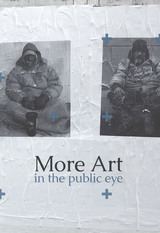 More Art in the Public Eye
Micaela Martegani, Jeff Kaspar, and Emma Drew, editors
Duke University Press, 2019 More Art in the Public Eye offers critical insight into the ever-growing field of socially engaged public art by demonstrating how the committed collaboration of artists, community members, and cultural producers can meaningfully impact our collective futures. Presented through the lens of More Art's fifteen-year history, the public art projects featured in this book expose issues of systemic inequality and injustice, stoke debate, and inspire alternatives. Artists and participants reflect on their works in newly conducted interviews, while essays from thinkers and actors in the field help situate the projects and the mission of socially engaged art in terms of greater cultural and political paradigms. More Art in the Public Eye establishes the framework for the conditions under which organizations like More Art operate, highlights the many meta-questions behind socially engaged public art, and seeks to amplify the wide array of voices that make up a project.
Contributors. Rebecca Amato, Michael Birchall, Ofri Cnaani, Michelle Coffey, Jennifer Dalton, Emma Drew, Pablo Helguera, Mary Jane Jacob, Jessica Lynne, Jeff Kasper, Kimsooja, Micaela Martegani, Andrea Mastrovito, Tony Oursler, William Powhida, Ernesto Pujol, Michael Rakowitz, Kirk Savage, Dread Scott, Andres Serrano, Gregory Sholette, Xaviera Simmons, Krzysztof Wodiczko
 More Bad News From Israel
Greg Philo and Mike Berry
Pluto Press, 2011 Building on rigorous research by the world-renowned Glasgow University Media Group, More Bad News From Israel examines media coverage of the current conflict in the Middle East and the impact it has on public opinion.
The book brings together senior journalists and ordinary viewers to examine how audiences understand the news and how their views are shaped by media reporting. In the largest study ever undertaken in this area, the authors focus on television news. They illustrate major differences in the way Israelis and Palestinians are represented, including how casualties are shown and the presentation of the motives and rationales of both sides. They combine this with extensive audience research involving hundreds of participants from the USA, Britain and Germany. It shows extraordinary differences in levels of knowledge and understanding, especially amongst young people from these countries.
Covering recent developments, including the Israeli attacks on Lebanon and Gaza, this authoritative and up-to-date study will be an invaluable tool for journalists, activists and students and researchers of media studies.
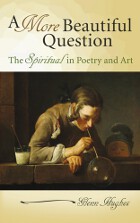 A More Beautiful Question: The Spiritual in Poetry and Art
Glenn Hughes
University of Missouri Press, 2011 As more and more people in North America and Europe have distanced themselves from mainstream religious traditions over the past centuries, a “crisis of faith” has emerged and garnered much attention. But Glenn Hughes, author of A More Beautiful Question: The Spiritual in Poetry and Art, contends that despite the withering popularity of faith-based worldviews, our times do not evince a decline in spirituality. One need only consider the search for “alternative” religious symbolisms, as well as the growth of groups espousing fundamentalist religious viewpoints, to recognize that spiritual concerns remain a vibrant part of life in Western culture.
Hughes offers the idea that the modern “crisis of faith” is not a matter of vanishing spiritual concerns and energy but rather of their disorientation, even as they remain pervasive forces in human affairs. And because art is the most effective medium for spiritually evocation, it is our most significant touchstone for examining this spiritual disorientation, just as it remains a primary source of inspiration for spiritual experience.
A More Beautiful Question is concerned with how art, and especially poetry, functions as a vehicle of spiritual expression in today’s modern cultures. The book considers the meeting points of art, poetry, religion, and philosophy, in part through examining the treatments of consciousness, transcendence, and art in the writings of twentieth-century philosophers Eric Voegelin and Bernard Lonergan. A major portion of A More Beautiful Question is devoted to detailed “case studies” of three influential modern poets: Gerard Manley Hopkins, Emily Dickinson, and T. S. Eliot. In these and its other chapters, the book examines the human need for artistic symbols that evoke the mystery of transcendence, the ways in which poetry and art illuminate the spiritual meanings of freedom, and the benefits of an individual’s loving study of great literature and art.
A More Beautiful Question has a distinctive aim—to clarify the spiritual functions of art and poetry in relation to contemporary confusion about transcendent reality—and it meets that goal in a manner accessible by the layperson as well as the scholar. By examining how the best art and poetry address our need for spiritual orientation, this book makes a valuable contribution to the philosophies of art, literature, and religion, and brings deserved attention to the significance of the “spiritual” in the study of these disciplines.
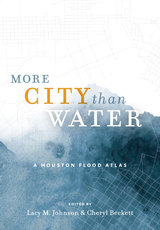 More City than Water: A Houston Flood Atlas
Edited by Lacy M. Johnson and Cheryl Beckett
University of Texas Press, 2022 2022 Art in Service to the Environment Award, Sierra Club Lone Star Chapter
Honorable Mention, 2022 Nonfiction Prize, Writers' League of Texas
Writers explore a city’s relationship with chronic catastrophic flooding.
Shortly after Hurricane Harvey dumped a record 61 inches of rain on Houston in 2017, celebrated writer and Bayou City resident Lacy M. Johnson began collecting flood stories. Although these stories attested to the infinite variety of experience in America’s most diverse city, they also pointed to a consistent question: What does catastrophic flooding reveal about this city, and what does it obscure? More City than Water brings together essays, conversations, and personal narratives from climate scientists, marine ecologists, housing activists, urban planners, artists, poets, and historians as they reflect on the human geography of a region increasingly defined by flooding. Both a literary and a cartographic anthology, More City than Water features striking maps of Houston’s floodplains, waterways, drainage systems, reservoirs, and inundated neighborhoods. Designed by University of Houston seniors from the Graphic Design program, each map, imaginative and precise, shifts our understanding of the flooding, the public’s relationship to it, and the fraught reality of rebuilding. Evocative and unique, this is an atlas that uncovers the changing nature of living where the waters rise.
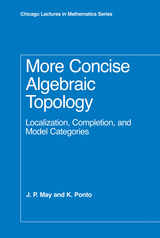 More Concise Algebraic Topology: Localization, Completion, and Model Categories
J. P. May and K. Ponto
University of Chicago Press, 2011 With firm foundations dating only from the 1950s, algebraic topology is a relatively young area of mathematics. There are very few textbooks that treat fundamental topics beyond a first course, and many topics now essential to the field are not treated in any textbook. J. Peter May’s A Concise Course in Algebraic Topology addresses the standard first course material, such as fundamental groups, covering spaces, the basics of homotopy theory, and homology and cohomology. In this sequel, May and his coauthor, Kathleen Ponto, cover topics that are essential for algebraic topologists and others interested in algebraic topology, but that are not treated in standard texts. They focus on the localization and completion of topological spaces, model categories, and Hopf algebras. The first half of the book sets out the basic theory of localization and completion of nilpotent spaces, using the most elementary treatment the authors know of. It makes no use of simplicial techniques or model categories, and it provides full details of other necessary preliminaries. With these topics as motivation, most of the second half of the book sets out the theory of model categories, which is the central organizing framework for homotopical algebra in general. Examples from topology and homological algebra are treated in parallel. A short last part develops the basic theory of bialgebras and Hopf algebras.
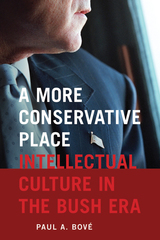 A More Conservative Place: Intellectual Culture in the Bush Era
Paul A. Bové
Dartmouth College Press, 2013 Identifying the historical antecedents of President George W. Bush’s imperial ambitions and the sources of the reactionary thought and politics that underlie them, Paul A. Bové shows how neoconservatism represents a singular danger to democracy. At the same time, he criticizes the equally disheartening inability of the academic Left to oppose neoconservatives and its tendency to mirror their views instead. Divorced from historical knowledge and intellectual rigor, the neocon mindset reflects a cultural and historical amnesia that feeds on ignorance and conformity. Exposing the threats to national survival inherent in the alliance of right-wing politics and academic tribalism, Bové emphasizes the need to reconnect with the powers of imagination and the complexity of human historical experience. With urgency and passion, Bové shows how the neocons have succeeded in cowing or coopting academic intellectuals and how language has been used and abused for the maintenance and extension of an undemocratic regime.
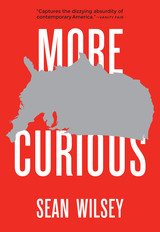 More Curious
By Sean Wilsey
University of Texas Press, 2015 “More Curious begins by making you wonder what kind of book it is, exactly, and ends by reminding you that categories are nonsense when you’re enjoying something this much.”—Jennifer Egan, Pulitzer Prize–winning author of A Visit from the Goon Squad“Mr. Wilsey can write in a range of emotional octaves, moving from the comic to the philosophical to the streetwise with ease, while putting body language on his prose to give the reader an almost synesthetic sense of what he’s saying.”—Michiko Kakutani, New York Times“More Curious captures the dizzying absurdity of contemporary America.”—Vanity Fair“Sean Wilsey’s witty essays from his cross-country adventures form a portrait of the weird side of contemporary America.”—Los Angeles Times“When Wilsey is at his best, and he often is in More Curious, his prose has a barely contained energy that makes his work both informative and entertaining. And often, whether his subject is rats or NASA or skateboarding or soccer, that work is provocative and huge-hearted.”—Alex Lemon, Dallas Morning News“Sometimes he’s funny and self-deprecating and sometimes he’s somber; sometimes his scope is as sweeping as our country, and other times it’s as narrow as Buzz Aldrin’s taste in wristwatches. There’s one through-line from beginning to end, though: those careful, thoughtful, perfect sentences.”—Alison Hallett, Portland Mercury“Generation-defining . . . a welcome chronicle of our age.”—David Kurlander, San Francisco Bay Guardian
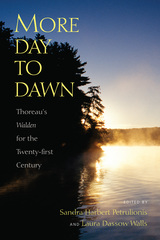 More Day to Dawn: Thoreau's Walden for the Twenty-first Century
Sandra Harbert Petrulionis
University of Massachusetts Press, 2007 Walden is one of the most frequently assigned texts in literature classes across the country, and it might seem that little new could be said about such a popular book. But these essays demonstrate that scholarship on Henry David Thoreau continues to break new ground. Emerging new voices join senior scholars in exploring a range of topics: Walden's climb to fame; modes of representation in the text; the relationship between fact and truth; Thoreau and violence; Thoreau and evolutionary theory; the working community created by Thoreau's reading and labor; how women read Walden; and the relationship between politics, nature writing, and the science of ecology. The volume closes with an afterword suggesting directions for future research.
Thoreau asserted that the leaves of the earth's strata were not page upon page to be studied by geologists and antiquaries chiefly, "but living poetry like the leaves of a tree." The continuing vitality of Walden shows that it, too, is not a fossil but a living book, still putting out green leaves of insight.
Each decade since Walden was published in 1854 has seen the world grow more crowded and less "simple." What, in our consumerist, speed-of-light, hypermediated world would Thoreau have found worth pursuing? How would he structure his life so as to shut out the phones ringing, the cars honking, the litter trashing his beloved haunts? Readers still seek answers to such questions by picking up their dog-eared copy of Walden and immersing themselves yet again in its pages. Students convince us that this book still holds the power to change lives. These essays are written with the expectation that Thoreau in the new century can help us realize that there are more lives to live and more day to dawn—that "the sun is but a morning star."
Contributors include Nina Baym, Robert Cummings, Robert Oscar López, Lance Newman, H. Daniel Peck, Dana Phillips, Larry J. Reynolds, David M. Robinson, William Rossi, Robert Sattelmeyer, Sarah Ann Wider, and Michael G. Ziser.
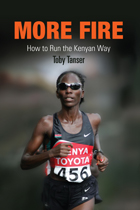 More Fire: How to Run the Kenyan Way
Toby Tanser
Westholme Publishing, 2008 An Essential Book for Runners of All Abilities
All of the Author’s Proceeds Go to Shoes4Africa to Support the Construction of Children’s Hospitals in Kenya
Kenya has produced the greatest concentration of world-class runners, and fellow athletes have long been intrigued by their remarkable success. Toby Tanser has devoted much of his professional career living and training among Kenyan runners in order to better understand the unique status of East African athletes. In More Fire: How to Run the Kenyan Way, the author builds upon the success of his acclaimed Train Hard, Win Easy, the first book to provide insights into the Kenyan "magic" that so many runners and coaches had sought. Instead of special foods or secret techniques, Tanser found that Kenyan runners simply trained incredibly hard, much harder than anyone had realized. By adapting their training regime—which includes three workouts a day—and following their example, runners, whether novices or champions, are able to improve both their performance and enjoyment in running. For those training for a marathon or any other distance race, this book is both practical and inspirational. Divided into four parts, the book begins with a description of running in Kenya, the landscape, the physical conditions, and the people; the second part concentrates on details of Kenyan training camps, training methods, and their typical training diet; the third profiles individual runners and coaches from the past and present, with each explaining their approach to running so that readers can gain further insight into their methods. The book ends with a discussion on how the reader can adapt Kenyan training practices for their own running requirements. More Fire: How to Run the Kenyan Way is essential reading for runners of all levels and experience.
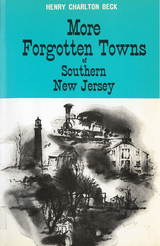 More Forgotten Towns of Southern New Jersey
Henry Beck
Rutgers University Press, 1963 From Colonial days to the early 1900s, iron forges, glass plants, lumber and paper mills flourished in the New Jersey of the Pine Barrens, in old Burlington, Gloucester and Salem Counties. Around the inlets of the Atlantic shore and on Delaware Bay, whaling and shipbuilding were important industries. Times have changed. Many of the old towns have fallen into ruin or disappeared, swallowed up in the abandoned lands of South Jersey or swept away by the unrelenting tides of the Jersey coast.
Henry Charlton Black, raised in Haddonfield for years, shared his endless delight in the land and the lore of South Jersey. He, like a few other devoted Jerseyans, began to hunt out in the 1930s the old sites and to record the stories handed down from generation to generation, clear back to early settlers. In this sequel to Forgotten Towns of Southern New Jersey, his visits to the state's early heritage - churches, villages, and roads - are continued. He explores the routes of old railroads and the tangled wilderness of the Forked River Mountains, and he tells the lost stories of forgotten glass and iron and shipbuilding villages.
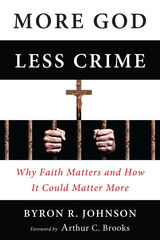 More God, Less Crime: Why Faith Matters and How It Could Matter More
Byron Johnson
Templeton Press, 2012 In More God, Less Crime renowned criminologist Byron R. Johnson proves that religion can be a powerful antidote to crime. The book describes how faith communities, congregations, and faith-based organizations are essential in forming partnerships necessary to provide the human and spiritual capital to effectively address crime, offender rehabilitation, and the substantial aftercare problems facing former prisoners. There is scattered research literature on religion and crime but until now, there has never been one publication that systematically and rigorously analyzes what we know from this largely overlooked body of research in a lay-friendly format. The data shows that when compared to current strategies, faith-based approaches to crime prevention bring added value in targeting those factors known to cause crime: poverty, lack of education, and unemployment. In an age of limited fiscal resources, Americans can’t afford a criminal justice system that turns its nose up at volunteer efforts that could not only work better than the abysmal status quo, but also save billions of dollars at the same time. This book provides readers with practical insights and recommendations for a faith-based response that could do just that.
 More Guns, Less Crime: Understanding Crime and Gun Control Laws, Second Edition
John R. Lott, Jr.
University of Chicago Press, 2000 Does allowing people to own or carry guns deter violent crime? Or does it simply cause more citizens to harm each other? Directly challenging common perceptions about gun control, legal scholar John Lott presents the most rigorously comprehensive data analysis ever done on crime statistics and right-to-carry laws. This timely and provocative work comes to the startling conclusion: more guns mean less crime. In this paperback edition, Lott has expanded the research through 1996, incorporating new data available from states that passed right-to-carry and other gun laws since the book's publication as well as new city-level statistics.
"Lott's pro-gun argument has to be examined on the merits, and its chief merit is lots of data. . . . If you still disagree with Lott, at least you will know what will be required to rebut a case that looks pretty near bulletproof."—Peter Coy, Business Week
"By providing strong empirical evidence that yet another liberal policy is a cause of the very evil it purports to cure, he has permanently changed the terms of debate on gun control. . . . Lott's book could hardly be more timely. . . . A model of the meticulous application of economics and statistics to law and policy."—John O. McGinnis, National Review
"His empirical analysis sets a standard that will be difficult to match. . . . This has got to be the most extensive empirical study of crime deterrence that has been done to date."—Public Choice
"For anyone with an open mind on either side of this subject this book will provide a thorough grounding. It is also likely to be the standard reference on the subject for years to come."—Stan Liebowitz, Dallas Morning News
"A compelling book with enough hard evidence that even politicians may have to stop and pay attention. More Guns, Less Crime is an exhaustive analysis of the effect of gun possession on crime rates."—James Bovard, Wall Street Journal
"John Lott documents how far 'politically correct' vested interests are willing to go to denigrate anyone who dares disagree with them. Lott has done us all a service by his thorough, thoughtful, scholarly approach to a highly controversial issue."—Milton Friedman
More Guns, Less Crime: Understanding Crime and Gun Control Laws, Third Edition
John R. Lott, Jr.
University of Chicago Press, 2010 On its initial publication in 1998, John R. Lott’s More Guns, Less Crime drew both lavish praise and heated criticism. More than a decade later, it continues to play a key role in ongoing arguments over gun-control laws: despite all the attacks by gun-control advocates, no one has ever been able to refute Lott’s simple, startling conclusion that more guns mean less crime. Relying on the most rigorously comprehensive data analysis ever conducted on crime statistics and right-to-carry laws, the book directly challenges common perceptions about the relationship of guns, crime, and violence. For this third edition, Lott draws on an additional ten years of data—including provocative analysis of the effects of gun bans in Chicago and Washington, D.C—that brings the book fully up to date and further bolsters its central contention.
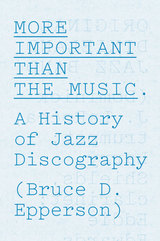 More Important Than the Music: A History of Jazz Discography
Bruce D. Epperson
University of Chicago Press, 2013 Today, jazz is considered high art, America’s national music, and the catalog of its recordings—its discography—is often taken for granted. But behind jazz discography is a fraught and highly colorful history of research, fanaticism, and the intense desire to know who played what, where, and when. This history gets its first full-length treatment in Bruce D. Epperson’s More Important Than the Music. Following the dedicated few who sought to keep jazz’s legacy organized, Epperson tells a fascinating story of archival pursuit in the face of negligence and deception, a tale that saw curses and threats regularly employed, with fisticuffs and lawsuits only slightly rarer.
Epperson examines the documentation of recorded jazz from its casual origins as a novelty in the 1920s and ’30s, through the overwhelming deluge of 12-inch vinyl records in the middle of the twentieth century, to the use of computers by today’s discographers. Though he focuses much of his attention on comprehensive discographies, he also examines the development of a variety of related listings, such as buyer’s guides and library catalogs, and he closes with a look toward discography’s future. From the little black book to the full-featured online database, More Important Than the Music offers a history not just of jazz discography but of the profoundly human desire to preserve history itself.
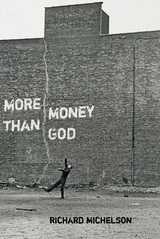 More Money than God
Richard Michelson
University of Pittsburgh Press, 2015 How do we come to terms with loss? How do we find love after tragedy? How can art and language help us to cope with life, and honor the dead? How does one act responsibly in a world that is both beautiful, full of suffering, and balanced precariously on the edge of despair and ruin? With humor, anger and great tenderness, Richard Michelson’s poems explore the boundaries between the personal and the political, and the connections between history and memory. Growing up under the shadow of the Holocaust, in a Brooklyn neighborhood consumed with racial strife, Michelson’s experiences were far from ordinary, yet they remain too much a part of the greater circle of poverty and violence to be dismissed as merely private concerns, safely past. It is Michelson’s sense of humor and acute awareness of Jewish history, with its ancient emphasis on the fundamental worth of human existence that makes this accessible book, finally, celebratory and life-affirming.
 More Nights than Days: A Survey of Writings of Child Genocide Survivors
Yudit Kiss
Central European University Press, 2023 More Nights Than Days is a unique exploration of the experience of children who survived the Holocaust—including Roma and Sinti victims—and the genocides in Cambodia, Rwanda, and Bosnia. Children are among the principal victims of armed conflicts and slaughters; nonetheless, they perceive events through the prism of their unique perspective and have a range of coping techniques adults don't possess.
This overview of writings of ninety-one child survivors bears evidence from a wide range of human ruthlessness. The author presents little-known texts along with famous memoirs and autobiographical fiction, with abundant quotations. Many of these are not only compelling as historical testimony, but poetic and stirringly expressive. Yudit Kiss has not written a historical study or literary criticism of the children’s books. She explores, instead, what the authors went through and what they felt and understood about their experience. An accessible and captivating reading, this volume presents a close-up, human size dimension of the destruction. The books written by child survivors also describe the resources and means that helped them to remain human even in the deepest well of inhumanity, offering precious lessons about resistance and resilience.M
More on Humanism, Volume 14
Elizabeth Weed and Ellen Rooney, eds.
Duke University Press This special issue of differences continues to question the vestiges of humanism. Articles include a study on Kant's "Third Critique"; explorations of the rise of "computationalism" and "the digital" and their effects on humanism; an examination of the myth of equality in early American history; and an illustration of "mourning theory" through an analysis of The Great Gatsby.
More Opera Scenes for Class and Stage: From One Hundred Selected Operas
Mary Elaine Wallace and Robert Wallace
Southern Illinois University Press, 1990 Reviewing the first volume of Opera Scenes for Class and Stage, Walter Ducloux wrote in the Opera Journal: "If you can come up, within five seconds, with an operatic excerpt involving two sopranos, four mezzo-sopranos, two tenors, and a bass, you don't need this book. Otherwise hurry and buy it. I keep it on my night table." In More Opera Scenes, the Wallaces have reviewed 100 additional operas and have chosen over 700 scenes. The popular "Table of Voice Categories" providing more than 300 combinations is also featured in this volume.
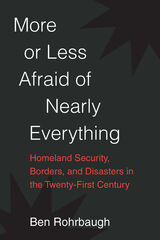 More or Less Afraid of Nearly Everything: Homeland Security, Borders, and Disasters in the Twenty-First Century
Benjamin Rohrbaugh
University of Michigan Press, 2020 Migration, borders, cybersecurity, natural disasters, and terrorism: Homeland security is constantly in the news. Despite ongoing attention, these problems seem to be getting bigger even as the political discussion grows more overheated and misleading. Ben Rohrbaugh, a former border security director at the White House’s National Security Council, cuts through the noise to provide an accessible and novel framework to understand both homeland security and the thinking around how to keep civilians safe.
Throughout the twentieth century, the United States did not experience national security domestically; it defended its borders by conducting military, foreign policy, and intelligence operations internationally, and then separated these activities from domestic law enforcement with bright legal lines. In the twenty-first century, U.S. national security no longer occurs exclusively outside of the nation. The U.S. government is beginning to respond to this change, and the establishment of the Department of Homeland Security is merely the first step in an organizational and strategic realignment that will be a long, difficult, and mistake-filled process. More or Less Afraid of Nearly Everything is an accessible and engaging guide to homeland security, particularly migration and border security, that makes innovative arguments about the American government and keeping citizens safe, and provides practical solutions to real-world problems.
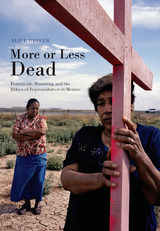 More or Less Dead: Feminicide, Haunting, and the Ethics of Representation in Mexico
Alice Driver
University of Arizona Press, 2015 In Ciudad Juárez, Mexico, people disappear, their bodies dumped in deserted city lots or jettisoned in the unforgiving desert. All too many of them are women.
More or Less Dead analyzes how such violence against women has been represented in news media, books, films, photography, and art. Alice Driver argues that the various cultural reports often express anxiety or criticism about how women traverse and inhabit the geography of Ciudad Juárez and further the idea of the public female body as hypersexualized. Rather than searching for justice, the various media—art, photography, and even graffiti—often reuse victimized bodies in sensationalist, attention-grabbing ways. In order to counteract such views, local activists mark the city with graffiti and memorials that create a living memory of the violence and try to humanize the victims of these crimes.
The phrase “more or less dead” was coined by Chilean author Roberto Bolaño in his novel 2666, a penetrating fictional study of Juárez. Driver explains that victims are “more or less dead” because their bodies are never found or aren’t properly identified, leaving families with an uncertainty lasting for decades—or forever.
The author’s clear, precise journalistic style tackles the ethics of representing feminicide victims in Ciudad Juárez. Making a distinction between the words “femicide” (the murder of girls or women) and “feminicide” (murder as a gender-driven event), one of her interviewees says, “Women are killed for being women, and they are victims of masculine violence because they are women. It is a crime of hate against the female gender. These are crimes of power.”
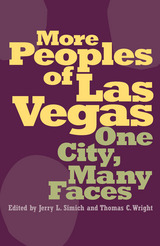 More Peoples of Las Vegas: One City, Many Faces
Jerry L Simich
University of Nevada Press, 2010 The remarkable economic growth of Las Vegas between 1980 and 2007 created a population boom and a major increase in the ethnic and religious diversity of the city. Today, over 21 percent of the city’s population is foreign born, and over 30 percent speak a language other than English at home. The local court system offers interpreters in 82 languages, and in 2005/2006, for example, more than 11,000 people, originating from 138 countries, were naturalized there as American citizens.More Peoples of Las Vegas extends the survey of this city’s cosmopolitan population begun in The Peoples of Las Vegas (University of Nevada Press, 2005). As in the previous book, this volume includes well-established groups like the Irish and Germans, and recently arrived groups like the Ethiopians and Guatemalans. Essays describe the history of each group in Las Vegas and the roles they play in the life and economy of the city. The essays also explore the influence of modern telecommunications and accessible air travel, showing how these factors allow newcomers to create transnational identities and maintain ties with families and culture back home. They also examine the role of local institutions—including clubs, religious organizations, shops, restaurants, and newspapers and other media—in helping immigrants maintain their ethnic and religious identities and in disseminating national and even regional cultures of origin.More Peoples of Las Vegas adds to our awareness of the rich and varied ethnic and religious character of Las Vegans. In a broader context, it offers thoughtful perspectives on the impact of globalization on a major American city and on the realities of immigrant life in the twenty-first century.
A more perfect Union
Teri Ellen Cross Davis
Ohio State University Press, 2021 Finalist, 2022 Hurston/Wright Legacy Award
In the tender, sensual, and bracing poems of a more perfect Union, Teri Ellen Cross Davis reclaims the experience of living and mothering while Black in contemporary America, centering Black women’s pleasure by wresting it away from the relentless commodification of the White gaze. Cross Davis deploys stunning emotional range to uplift the mundane, interrogate the status quo, and ultimately create her own goddesses. Parenting, lust, household chores—all are fair game for Cross Davis’s gimlet eye. Whether honoring her grief for Prince’s passing while examining his role in midwifing her sexual awakening or contemplating travel and the gamble of being Black across this wide world, these poems tirelessly seek a path out of the labyrinth to hope.
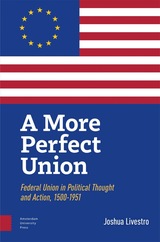 A More Perfect Union: Federal Union in Political Theory and Practice, 1500-1951
Joshua Livestro
Amsterdam University Press, 2024 This book tells the history of the ‘federal union’, a concept that may be traced from the early Renaissance to the establishment of the European Coal and Steel Community (1951) – the predecessor of today’s European Union. It is a story of three federal canons: of greater and lesser thinkers, of utopian peace plans, and of practical experiences with federal unions. Together they shaped the concepts that created the ECSC.
This book unlocks the past of the EU – a union that always thought it didn’t have a past, but was, on the contrary, ‘sui generis’, without examples or predecessors. Although there was nothing inevitable about the founding of the EU, A More Perfect Union shows that it was plausible and perhaps even predictable that such a union would be formed at some point – and that the aftermath of the Second World War was exactly the kind of founding moment about which federal theorists in previous centuries had speculated.
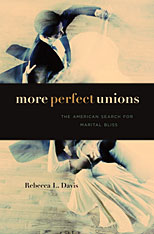 More Perfect Unions: The American Search for Marital Bliss
Rebecca L. Davis
Harvard University Press, 2010 The American fixation with marriage, so prevalent in today's debates over marriage for same-sex couples, owes much of its intensity to a small group of reformers who introduced Americans to marriage counseling in the 1930s. Today, millions of couples seek help to save their marriages each year. Over the intervening decades, marriage counseling has powerfully promoted the idea that successful marriages are essential to both individuals' and the nation's well-being.
Rebecca Davis reveals how couples and counselors transformed the ideal of the perfect marriage as they debated sexuality, childcare, mobility, wage earning, and autonomy, exposing both the fissures and aspirations of American society. From the economic dislocations of the Great Depression, to more recent debates over government-funded "Healthy Marriage" programs, counselors have responded to the shifting needs and goals of American couples. Tensions among personal fulfillment, career aims, religious identity, and socioeconomic status have coursed through the history of marriage and explain why the stakes in the institution are so fraught for the couples involved and for the communities to which they belong.
Americans care deeply about marriages—their own and other people's—because they have made enormous investments of time, money, and emotion to improve their own relationships and because they believe that their personal decisions about whom to marry or whether to divorce extend far beyond themselves. This intriguing book tells the uniquely American story of a culture gripped with the hope that, with enough effort and the right guidance, more perfect marital unions are within our reach.
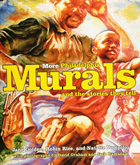 More Philadelphia Murals and the Stories They Tell
Jane Golden
Temple University Press, 2006 More than twenty years ago, a New Jersey artist started a project for the Philadelphia Anti-Graffiti Network that encouraged young people to paint murals on a few buildings around the city. Jane Golden could not have known that the Mural Arts Program (MAP) would become the nation's largest public art program and a model for programs throughout the country. With more than 2600 murals throughout Philadelphia, the program has brightened the lives of countless residents and tourists while providing a creative outlet for an astounding array of artists. MAP now works with more than 3000 students around the city, engaging them in a curriculum that teaches not only artistic skills but civic engagement and personal responsibility. In this sequel to the bestselling Philadelphia Murals and the Stories They Tell, published in 2002, More Philadelphia Murals and the Stories They Tell shares with the earlier work its beautiful color photography, along with profiles of the artists. Featured here is the remarkable story of an unlikely artistic collaboration—between boys who live in a residential facility, a community in the Kensington section of Philadelphia, and men who are incarcerated in a maximum-security state correctional facility. The 1/8 of a mile long mural they created, about balanced and restorative justice, was intended to help the young men give something back to a community they had harmed and help the community wrestle with issues around crime and violence. In the process of creating the mural, it became a life-changing experience for all involved. By recounting this story and the many others behind the works of art, More Philadelphia Murals and the Stories They Tell is as inspirational as it is beautiful.
More Plays by Rivals of Corneille and Racine
Lacy Lockert
Vanderbilt University Press A follow-up to Lacy Lockert’s classic The Chief Rivals of Corneille and Racine (Vanderbilt University Press 1956), More Plays by Rivals of Corneille and Racine consists of more French tragedies of the period—eleven plays from the great age of French drama in the seventeenth century, one play from the prolific pen of Alexandre Hardy, who preceded the great age, and one from the eighteenth century, the aftermath of that age. The volume contains plays Lockert typified as “excellent,” such as Tiridate and Mariamne, Géta, and Ariane, “smash hits” of the time like Timocrate and Astrate, and several other plays Lockert called “minor,” but that he felt would be of interest to scholars.
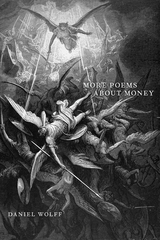 More Poems about Money
Daniel Wolff
Four Way Books, 2022 What do global combat and property ownership have to do with sex and sea turtles? According to Daniel Wolff-as it turns out, everything. More Poems about Money looks at the economic times we live in, from boom to bust, from the suburbs to the warzone, in a voice that ranges from humorous to desperate. Grappling with monetary value and how it infringes on self worth, Wolff asks simultaneously timeless and timely questions-Who has capital, who doesn't, and does that ever change?-in a style both humorous and unflinching, sparing not even himself. "'The market runs on credit," Wolff reminds us, "which romantics call yearning. / A flame. Or a sonnet." Yes, art also participates in capitalism as our lyrics stoke the fire of want, fueling this system and getting snuffed by it. Pivoting from the Great Recession toward today's crisis, this undaunted book illuminates the transactions we aren't supposed to talk about, beckoning us toward the future we can't imagine… yet.
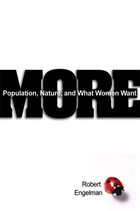 More: Population, Nature, and What Women Want
Robert Engelman
Island Press, 2010 In the capital of Ghana, a teenager nicknamed “Condom Sister” trolls the streets to educate other young people about contraception. Her work and her own aspirations point to a remarkable shift not only in the West African nation, where just a few decades ago women had nearly seven children on average, but around the globe. While world population continues to grow, family size keeps dropping in countries as diverse as Switzerland and South Africa.
The phenomenon has some lamenting the imminent extinction of humanity, while others warn that our numbers will soon outgrow the planet’s resources. Robert Engelman offers a decidedly different vision—one that celebrates women’s widespread desire for smaller families. Mothers aren’t seeking more children, he argues, but more for their children. If they’re able to realize their intentions, we just might suffer less climate change, hunger, and disease, not to mention sky-high housing costs and infuriating traffic jams.
In More, Engelman shows that this three-way dance between population, women’s autonomy, and the natural world is as old as humanity itself. He traces pivotal developments in our history that set population—and society—on its current trajectory, from hominids’ first steps on two feet to the persecution of “witches” in Europe to the creation of modern contraception. Both personal and sweeping, More explores how population growth has shaped modern civilization—and humanity as we know it.
The result is a mind-stretching exploration of parenthood, sex, and culture through the ages. Yet for all its fascinating historical detail, More is primarily about the choices we face today. Whether society supports women to have children when and only when they choose to will not only shape their lives, but the world all our children will inherit.
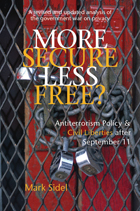 More Secure, Less Free?: Antiterrorism Policy & Civil Liberties after September 11
Mark Sidel
University of Michigan Press, 2010 The first comprehensive analysis of the full range of antiterror initiatives undertaken in the United States after the 2001 terrorist attacks
Unlike earlier books published shortly after the September 11 attacks that focus on the Patriot Act, More Secure, Less Free? covers the Patriot Act but goes well beyond, analyzing Total Information Awareness, Terrorist Information and Prevention System (TIPS), Computer Assisted Passenger Prescreening System II (CAPPS II), and a number of other "second wave" antiterror initiatives.
It's also the first book of its kind to go beyond federal measures to explain the devolution of antiterror policies to the states, and now to the military as well. Author Mark Sidel discusses the continuing debates on antiterror law at the state level, with a focus on the important states of New York, California, and Michigan, and explains how the military-through an informant program known as "Eagle Eyes"-is now taking a direct hand in domestic antiterror efforts.
The volume also discusses and analyzes crucially important aspects of American antiterror policy that have been largely ignored in other volumes and discusses the effects of antiterror policy on the American academic world and the American nonprofit sector, for example. And it provides the first comparative perspectives on U.S. antiterror policy yet published in an American volume, discussing antiterror initiatives in Great Britain, Australia, and India and contrasting those to the American experience.
More Secure, Less Free? is important and essential reading for anyone interested in an analytical perspective on American antiterror policy since September 11 that goes well beyond the Patriot Act. Mark Sidel is Associate Professor of Law at the University of Iowa and a research scholar at the University's Obermann Center for Advanced Studies.
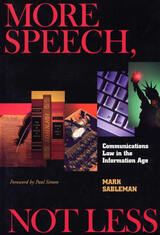 More Speech, Not Less: Communications Law in the Information Age
Mark Sableman. Foreword by Paul Simon
Southern Illinois University Press, 1997
On a daily basis we are confronted with "more speech, not less"—more news reports, more television channels, more publications, more electronic communications. Communications laws have expanded in response to the proliferation of communications, and these laws affect everyone.
Communications lawyer Mark Sableman uses recent case studies, practical examples, and plain language to describe and analyze the broad spectrum of modern communications laws and policies. In these essays, Sableman helps communications professionals as well as informed citizens understand the law.
The constitutional foundation for the information age is settled: radical solutions on either side have been rejected. Neither First Amendment absolutism nor untrammeled content-based censorship will rule in America. But within the remaining middle area, many key policy choices are being made by courts and policy makers. Intricate webs of legal do’s and don’ts, practical pitfalls, and effective safe harbors are being developed across the broad spectrum of communications law.
In this guide to existing law, developing trends, and critical policy determinations, Sableman discusses privacy, Internet communications and policy, censorship, libel and slander, copyright and intellectual property, advertising, broadcasting, and journalistic confidentiality. Through actual cases and practical examples, he examines and explains both the existing rules for communications professionals and the developing policies that deserve the attention and scrutiny of informed citizens. Sableman approaches these subjects as a practicing lawyer experienced in both business and media communications.
The phrase "more speech, not less" describes not only the growing cacophony of the information age, but also one approach to legal policy—Justice Louis D. Brandeis’s preference for "more speech, not enforced silence" in all but the most extreme situations. Drawing from his strong advocacy of free speech, Sableman hopes to stimulate informed debate among all who are concerned about the power of information and the magic of words and images.
More Stories from the Round Barn
Jacqueline Dougan Jackson
Northwestern University Press, 2002 In this much anticipated companion volume to Stories from the Round Barn, Jackson assembles a collection of rich narratives and a cast of inspirational characters to joyously illustrate life. In the tradition of Willa Cather, Jackson writes of innocence, simplicity, and what happens when both are messily shattered by the intrusion of animals, children, war, epidemics, and progress itself. With wit and compassion Jackson recollects the hardships and satisfactions of farm life as lived according to her grandfather's motto: "Life as Well as a Living."
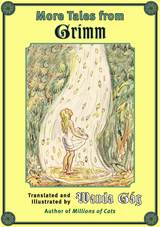 More Tales from Grimm
Wanda Gág
University of Minnesota Press, 2006 Renowned children’s book author Wanda Gág presents these classic Grimm tales, accompanied by whimsical illustrations. Drawing on her peasant heritage and childlike sense of wonder, Gág translated the fairy tales in a uniquely American vernacular tongue. More Tales from Grimm contains over thirty more, including “The Golden Key,” “The Seven Swabians,” and “The Wolf and the Fox,” as well as almost one hundred illustrations. No other editions of Grimm’s fairy tales for children can match Gág’s richness of prose and the humor, beauty, and sheer magic of her pictorial interpretation. Best known for her Newbery Honor winner Millions of Cats, Wanda Gág (1893–1946) was a pioneer in children’s book writing, integrating text and illustration. Born in New Ulm, Minnesota, she rose to international acclaim. In recognition of her artistry, she was posthumously awarded the 1958 Lewis Carroll Shelf Award for Millions of Cats and the 1977 Kerlan Award for her body of work.
More Tales of a Low-Rent Birder
By Pete Dunne
University of Texas Press, 1994 More Tales of a Low-Rent Birder brings together twenty-five essays that originally appeared in major birding publications. In these pieces, Pete Dunne ranges from wildly humorous to sadly elegiac, as he describes everything from the "field plumage" of the dedicated birder to the lingering death of an accidentally injured golden plover. Running like a thread through all the essays is Dunne's love and respect for the birds he watches, his concern over human threats to their survival, and his tolerance, even affection, for the human "odd birds" that birding attracts. Truly, these essays offer something for everyone interested in birds and the natural habitats our species share.
More Tales of the Defective Detective in the Pulps
Gary Hoppenstand, Garyn G. Roberts, and Ray B. Browne
University of Wisconsin Press, 1985 This second collection of defective detective stories features some of the best of the period, including Russell Gray’s gimpy hero Ben Bryn, Edith and Ejler Jacobson’s hemophiliac gum-shoe Nat Perry, John Kobler’s glaucomatous troubleshooter Peter Quest, and Leon Byrne’s deaf detective Dan Holden.
More than 1001 Days and Nights of Hong Kong Internment: A Personal Narrative
Chaloner Grenville Alabaster
Hong Kong University Press, 2022 A diary of life at the Stanley Internment Camp in Hong Kong in the 1940s.
More Than 1001 Days and Nights of Hong Kong Internment is the wartime journal of Sir Chaloner Grenville Alabaster, former attorney-general of Hong Kong and one of the three highest-ranking British officials during the Japanese occupation. He was imprisoned by the Japanese at the Stanley Internment Camp from 1941 to 1945. During his internment, he kept a diary of his life in the camp in small notebooks, hiding them until his release in 1945. He wrote his wartime journal on the basis of these notes. The journal records his day-to-day experiences of the fall of Hong Kong, his time at Stanley, and his eventual release. The book is an important primary source for understanding the daily operation of the Stanley Internment Camp and the period immediately after the fall of Hong Kong.
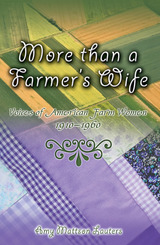 More than a Farmer's Wife: Voices of American Farm Women, 1910-1960
Amy Mattson Lauters
University of Missouri Press, 2009 Farm women have often been seen by their city sisters as victims of patriarchy, overwork, and poverty, aptly depicted by the “Migrant Mother” image from the Great Depression. Amy Mattson Lauters now goes directly to the women themselves to get the other side of the story of American farm life: that many women survived and even thrived on farms through the adversity of the Great Depression and beyond. More than a Farmer’s Wife spans fifty years of farm life to reveal that many women saw farming as an opportunity to be full partners with their husbands and considered themselves businesswomen central to the success of their farms. Lauters shows that the farm woman was fundamental to the farming industry—the backbone of the family business and the manager of the farm home—as she explores the role of media in the farm woman’s everyday life and discusses the construction of the American farm woman in those publications. Lauters combed a half-century of farming, women’s, and mainstream magazines, ranging from The Farmer’s Wife to the Saturday Evening Post and including the journalism of writers such as Laura Ingalls Wilder and Rose Wilder Lane. She also conducted interviews with more than 180 women who were raised on or lived on farms to probe how they felt about their lives and determine how closely their perceptions matched the images found in the media. The period covered here was one of enormous instability and change for American farming: rural and farm families declined by a third as the population shifted from primarily rural to urban/suburban. Lauters examines such changes as increasing industrialization and the rise of consumer culture and also tells how farm women responded to such events as economic depression, world war, and suffrage. And she explores the deepening divide between city and farm women, so that by the end of this period, urban and rural women had virtually no common ground for understanding each other. “It was a hard, but simple life,” one farm woman wrote, “and I feel we had more of a family life than anyone else has today.” That sentiment speaks volumes, and this book uncovers the deep divide between urban and rural cultures that emerged during this period, one that continues to be felt today.
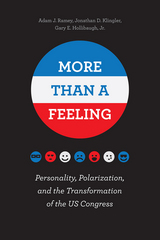 More Than a Feeling: Personality, Polarization, and the Transformation of the US Congress
Adam J. Ramey, Jonathan D. Klingler, and Gary E. Hollibaugh Jr.
University of Chicago Press, 2017 Whatever you think about the widening divide between Democrats and Republicans, ideological differences do not explain why politicians from the same parties, who share the same goals and policy preferences, often argue fiercely about how best to attain them. This perplexing misalignment suggests that we are missing an important piece of the puzzle. Political scientists have increasingly drawn on the relationship between voters’ personalities and political orientation, but there has been little empirically grounded research looking at how legislators’ personalities influence their performance on Capitol Hill.
With More Than a Feeling, Adam J. Ramey, Jonathan D. Klingler, and Gary E. Hollibaugh, Jr. have developed an innovative framework incorporating what are known as the Big Five dimensions of personality—openness to experience, conscientiousness, extraversion, agreeableness, and neuroticism—to improve our understanding of political behavior among members of Congress. To determine how strongly individuals display these traits, the authors identified correlates across a wealth of data, including speeches, campaign contributions and expenditures, committee involvement, willingness to filibuster, and even Twitter feeds. They then show how we might expect to see the influence of these traits across all aspects of Congress members’ political behavior—from the type and quantity of legislation they sponsor and their style of communication to whether they decide to run again or seek a higher office. They also argue convincingly that the types of personalities that have come to dominate Capitol Hill in recent years may be contributing to a lot of the gridlock and frustration plaguing the American political system.
More Than a Game: Life Lessons from Philadelphia's Sports Community
Eliot Shorr-Parks
Temple University Press, 2012 Anyone who has sat at the "Vet," watched a pick-up game, or played catch in the yard, knows that sports is more than a game in Philadelphia—it's a commitment to hard work, a belief in community values, and a tradition of never giving up.
Told through the personal experiences of professional athletes, community leaders, and everyday players, More Than a Game captures how sports build character and communities with each hit of the ball, catch of a touchdown pass, or dunk of the basketball.
Among those featured are Carlos Ruiz, Chris Pronger, Sonny Hill, Angelo Cataldi, Leonard Weaver, Rita Sloan Green, Ruben Amaro, Jr., Joe Banner, Alyson Goodner, Gary Cobb, Jim Ellis, Mayor Michael Nutter, Nicholas Bradley, Governor Edward Rendell, and Rami Ibrahim.
The perfect gift for the aspiring athlete, the community coach, or the supportive parent.
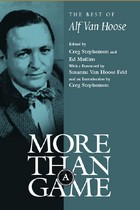 More than a Game: The Best of Alf Van Hoose
Alf Van Hoose
University of Alabama Press, 2009 The best work of one of Alabama's longest-serving and most beloved sports journalists.
Although he spent 43 years at the same job, Alf Van Hoose was not a man limited by the boundaries of his profession. As Birmingham News sports editor for 21 years and a columnist for a decade before that, Van Hoose helped define a city, a state, and a region largely known for sports. He was the writer of record for some of the biggest sporting events and personalities in the state of Alabama in the last half of the 20th Century. Wayne Hester, Van Hoose's successor as sports editor of The News, in 1990, said, "To many sports fans over the years, Alf Van Hoose has been The Birmingham News." But he was also much more than the "sports guy," as older generations of Alabama sports fans who read this book will remember and younger ones will learn. He was a man for all seasons, not just those where balls get kicked, hit, or thrown around.
A native of Cuba, Alabama, and a veteran of the Third Army campaigns in WWII (where he won both the Bronze and Silver Stars), Van Hoose became a sportswriter on The News in 1947. He remained in that role until retirement in 1990, with only short breaks to serve as a Vietnam war correspondent, and to reflect on the lessons learned while serving with George Patton. Van Hoose died in 1997 at the age of 76.
This volume contains 90 of Van Hoose's best columns, selected not only to showcase his characteristic style, but also because of the enduring importance and interest of the topics--football and baseball, of course, but also golf, high school heroics, auto racing, and Van Hoose's special favorites: Rickwood Field and its various tenants, especially the Birmingham Black Barons.
Published with the College of Communication and Information Science, The University of Alabama.
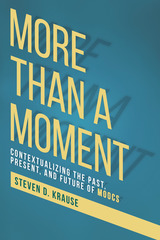 More than a Moment: Contextualizing the Past, Present, and Future
Steven D. Krause
Utah State University Press, 2019 As recently as 2012, massive open online courses (MOOCs) looked poised to revolutionize higher education, but in just a few years their flaws and problems have made them into a less relevant model. In More than a Moment, Steven D. Krause explores MOOCs and their continuing impact on distance learning in higher education, putting them in the context of technical innovations that have come before and those that will be part of the educational future.
Krause writes about his own experiences as a participant in several MOOCs and the experiences of faculty who developed and taught MOOCs. Contrary to many early claims from educational entrepreneurs, they were never entirely “new,” and MOOCs and their aftermath are still at the heart of the tensions between nonprofit universities and for-profit entities, particularly online program management firms, in delivering distance education.
While MOOCs are no longer a threat to education in the United States, they are part of the ongoing corporatization of education and remain part of conversations about experienced-based credit, corporate training, and open education. Presenting historical, student, teacher, and administrative perspectives, More than a Moment is a well-rounded treatment that will be of interest to academics and entrepreneurs interested in distance education, online pedagogy, online program management, and public-private partnerships in higher education.
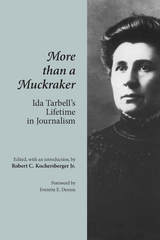 More Than A Muckraker: Ida Tarbell's Lifetime Journalism
Robert C., Jr. Kochersberger
University of Tennessee Press, 1996
“In his fine introduction, Kochersberger provides us with a brief biographical sketch and enlightening overview of Tarbell’s unusual career. The magazine articles, books excerpts, essays, and radio scripts he selected include a lively assortment of profiles of such notables as Lincoln and Empress Josephine, business-related writing including discussions of mine safety and workers’ rights, and pieces on topics such as flying, work, Prohibition (she was opposed), and old age (Tarbell remained active into her eighties).”—Booklist
A pioneer of investigative journalism, Ida Tarbell (1857-1944) brought the rigor of scientific inquiry and a penchant for accuracy to her reporting on such topics as governmental corruption and the excesses of big business. Although she is best known for her journalistic battles with John D. Rockefeller’s Standard Oil and the fight for antitrust legislation, she was also a gifted biographer, a social commentator and speaker, and a women’s rights advocate—of sorts—during a time when most women did not work (or write) outside the home.
In this book, Robert C. Kochersberger has collected the best of Tarbell’s scattered articles, book chapters, speeches, and previously unpublished pieces into a single volume so that her writings may be reexamined in the light of recent scholarship in the fields of journalism, women’s and gender studies, and American history.
Robert C. Kochersberger, Jr., teaches journalism in the Department of English at North Carolina State University in Raleigh.
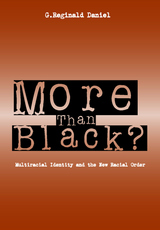 More Than Black: Multiracial Identity & New Racial Order
G. Reginald Daniel
Temple University Press, 2001 In the United States, anyone with even a trace of African American ancestry has been considered black. Even as the twenty-first century opens, a racial hierarchy still prevents people of color, including individuals of mixed race, from enjoying the same privileges as Euro-Americans. In this book, G. Reginald Daniel argues that we are at a cross-roads, with members of a new multiracial movement pointing the way toward equality.
Tracing the centuries-long evolution of Eurocentrism, a concept geared to protecting white racial purity and social privilege, Daniel shows how race has been constructed and regulated in the United States. The so-called one-drop rule (i.e., hypodescent) obligated individuals to identify as black or white, in effect erasing mixed-race individuals from the social landscape. For most of our history, many mixed-race individuals of African American descent have attempted to acquire the socioeconomic benefits of being white by forming separate enclaves or "passing." By the 1990s, however, interracial marriages became increasingly common, and multiracial individuals became increasingly political, demanding institutional changes that would recognize the reality of multiple racial backgrounds and challenging white racial privilege.
More Than Black? regards the crumbling of the old racial order as an opportunity for substantially more than an improvement in U.S. race relations; it offers no less than a radical transformation of the nation's racial consciousness and the practice of democracy.
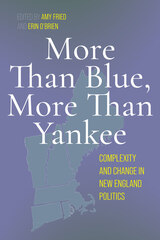 More Than Blue, More Than Yankee: Complexity and Change in New England Politics
Edited by Amy Fried and Erin O’Brien
University of Massachusetts Press, 2024 New England politics can, at first blush, appear monochromatic. After all, only one member of the entire region’s delegation to the US Congress is a Republican, and citizens have elected few Republicans to the US House or Senate in the last decade. But this has not always been the case. In 1948, only two states in the region–Rhode Island and Connecticut–had Democratic senators. Yet a closer examination of the region today reveals fascinating political variation. Liberal policies, greater diversity, and engaged political movements are reshaping stereotypical Yankee tendencies of close-fisted government, whiteness, and laconic discourse.
This collection of new essays captures both the political history and contemporary moment in this region and exposes the surprisingly varied political landscape. It examines historical shifts, regional developments, and the politics of its states to argue that New England has been and continues to be an important part of the national political puzzle, from demonstrating democratic principles in early America to producing major contemporary figures such as Elizabeth Warren, Ayanna Pressley, and Susan Collins. The political shifts at work in New England mirror the South’s transformation, but have received much less attention. This volume corrects that omission by profiling political movements and candidates, political rhetoric from activists to pundits, and demographics and voting in each state as well as the region as a whole.
In addition to material by the editors, this important collection includes contributions from Rachael V. Cobb, Jerold Duquette, Christopher J. Galdieri, Jane JaKyung Han, Douglas B. Harris, Luis Jiménez, Scott McLean, James Melcher, Maureen Moakley, Paul Petterson, and Dante J. Scala.
More Than Bread: Ethnography of a Soup Kitchen
Irene Glasser
University of Alabama Press, 2010 More Than Bread examines life in the dining room of the Tabernacle Soup Kitchen, located in Middle City in a New England state. What happens when one hundred guests, which include single mothers, drug addicts, alcoholics, the mentally ill, and the chronically unemployed, representing diverse age groups and ethnicities, come together in the dining room for several hours each day? Irene Glasser challenges the popular assumption that soup kitchens function primarily to provide food for the hungry by refocusing our attention on the social aspects of the dining room. The soup kitchen offers a model of a de-professionalized, nonclinical, nurturing setting that is in contrast to the traditional human services agency.
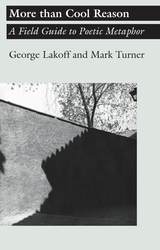 More than Cool Reason: A Field Guide to Poetic Metaphor
George Lakoff and Mark Turner
University of Chicago Press, 1989 A classic account of how metaphor works in literature--and what we can draw from that for everyday life--from two of the leading scholars of language
We usually think of the language of poetry, the metaphors that poets use to express their intentions, as far removed from ordinary life. But in More than Cool Reason, George Lakoff and Mark Turner show how understanding how metaphor works in poetry, the tasks it takes on and the ways it shapes our patterns of thought, can be hugely helpful to seeing and understanding how we think in all manner of other fields and areas of life. Metaphor, they show, is a tool so familiar, so everyday, that we fail to notice it. Lakoff and Turner correct that failure here, helping us see how richly metaphorical our language and thought are, and what that means for not only reading and enjoying poetry and literature, but also for linguistics, philosophy, psychology, anthropology, cognitive science, and more.
More than "First, Do No Harm": Academic Global Health
Timothy R. B. Johnson
Michigan Publishing, 2023 Using personal experience and narrative, as well as the voices of students, trainees, and academic colleagues, this book illustrates how an initiative beginning over thirty years ago to train obstetrician-gynecologists in Ghana can serve as a model for global engagement by universities and learners at many levels. In addition to detailing a proven sustainable model for global health programs, this book highlights the ethical and moral imperatives participants should expect and demand of truly engaged academic global health.
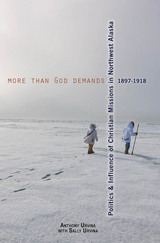 More Than God Demands: Politics and Influence of Christian Missions in Northwest Alaska, 1897-1918
Anthony Urvina with Sally Urvina
University of Alaska Press, 2016 Near the turn of the twentieth century, the territorial government of Alaska put its support behind a project led by Christian missionaries to convert Alaska Native peoples—and, along the way, bring them into “civilized” American citizenship. Establishing missions in a number of areas inhabited by Alaska Natives, the program was an explicit attempt to erase ten thousand years of Native culture and replace it with Christianity and an American frontier ethic.
Anthony Urvina, whose mother was an orphan raised at one of the missions established as part of this program, draws on details from her life in order to present the first full history of this missionary effort. Smoothly combining personal and regional history, he tells the story of his mother’s experience amid a fascinating account of Alaska Native life and of the men and women who came to Alaska to spread the word of Christ, confident in their belief and unable to see the power of the ancient traditions they aimed to supplant.
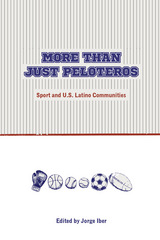 More Than Just Peloteros: Sport and U.S. Latino Communities
Jorge Iber
Texas Tech University Press, 2015 A microcosm of the significance of sport to community history anywhere
Although the Latino/a population of the United States has exploded since the 1960s, an analysis of its place in the history of American sport has, until recently, been sorely underrepresented. The thoughtful and coherent essays in More Than Just Peloteros demonstrate that participation in sport and recreation develops identity and involvement in the lives of Spanish-speaking people throughout what is now the United States. The articles feature accounts of eras and events as varied as the Latino experience itself, including horse racing in colonial San Antonio, boxing in New York City, baseball in the barrios of 1930s Chicago, basketball in a 1950s Arizona mining town, and, of course, high school football in South Texas.
As the nation’s demographics continue to change, more and more Latinos/as will, undoubtedly, leave their marks on the fields of athletic competition at levels ranging from the local to the professional, the business offices of franchises and colleges, and as general consumers of American sporting events and goods. This volume recognizes and encourages the role that sport and recreation play in the day-to-day existence of Spanish speakers in the United States.
 More than Kin and Less than Kind: The Evolution of Family Conflict
Douglas W. Mock
Harvard University Press, 2004 Sibling rivalry and intergenerational conflict are not limited to human beings. Among seals and piglets, storks and burying beetles, in bird nests and beehives, from apples to humans, family conflicts can be deadly serious, determining who will survive and who will perish. When offspring compete for scarce resources, sibling rivalry kicks in automatically. Parents sometime play favorites or even kill their young. In More than Kin and Less than Kind, Douglas Mock tells us what scientists have discovered about this disturbing side of family dynamics in the natural world.
Natural selection operates primarily for the benefit of individuals (and their genes). Thus a family member may profit directly, by producing its own offspring, or indirectly, by helping close kin to reproduce. Much of the biology of family behavior rests on a simple mathematical relationship called Hamilton’s rule, which links the benefits and costs of seemingly altruistic or selfish behavior to the degree of relatedness between individuals.
Blending natural history and theoretical biology, Mock shows how Hamilton’s rule illuminates the study of family strife by throwing a spotlight on the two powerful forces—cooperation and competition—that shape all interaction in the family arena. In More than Kin and Less than Kind, he offers a rare perspective on the family as testing ground for the evolutionary limits of selfishness. When budgets are tight, close kin are often deadly rivals.
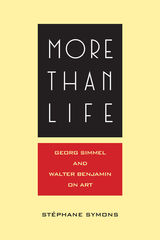 More Than Life: Georg Simmel and Walter Benjamin on Art
Stéphane Symons
Northwestern University Press, 2017 More Than Life: Georg Simmel and Walter Benjamin on Art is the first book to trace the philosophical relation between Georg Simmel and his one-time student Walter Benjamin, two of the most influential German thinkers of the twentieth century.
Reading Simmel’s work, particularly his essays on Michelangelo, Rembrandt, and Rodin, alongside Benjamin’s concept of Unscheinbarkeit (inconspicuousness) and his writings on Charlie Chaplin, More Than Life demonstrates that both Simmel and Benjamin conceive of art as the creation of something entirely new rather than as a mimetic reproduction of a given. The two thinkers diverge in that Simmel emphasizes the presence of a continuous movement of life, whereas Benjamin highlights the priority of discontinuous, interruptive moments.
With the aim of further elucidating Simmel and Benjamin’s ideas on art, Stéphane Symons presents a number of in-depth analyses of specific artworks that were not discussed by these authors. Through an insightful examination of both the conceptual affinities and the philosophical differences between Simmel and Benjamin , Symons reconstructs a crucial episode in twentieth-century debates on art and aesthetics.
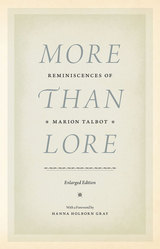 More than Lore: Reminiscences of Marion Talbot
Marion Talbot
University of Chicago Press, 2015 The founding articles of the University of Chicago contained what was for the era a shocking declaration: “To provide, impart, and furnish opportunities for all departments of higher education to persons of both sexes on equal terms.” In a time when many still scoffed at educating women, the university was firmly co-ed from the very start. One of its first hires was Marion Talbot. Ready for the adventure of a lifetime, she set her sights on Chicago at a time when the city was still considered all but the Wild West. Talbot eventually became the University of Chicago’s first Dean of Women, influencing a generation of female students.
Originally published in 1936, More than Lore is a unique firsthand account of the early days of the university, capturing the excitement and travails of life on an academic frontier. Talbot shares gossip from the faculty lounge, relays student antics in the dorms, and tells stories from the living rooms of Hyde Park. It’s also a fascinating look at life as an early twentieth-century college woman, with scandals over improper party invitations and underground sororities, petitions calling for more female professors, and campaigns to have students be known as “university women” instead of “college girls.” With Talbot as our guide, we reenter a lost world where simply to be a woman was to be a pioneer and where the foundations of the modern undergrad experience were being established.
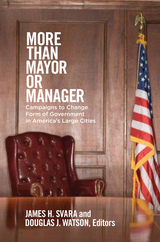 More than Mayor or Manager: Campaigns to Change Form of Government in America's Large Cities
James H. Svara and Douglas J. Watson, Editors
Georgetown University Press, 2010 Different forms of city government are in widespread use across the United States. The two most common structures are the mayor-council form and the council-manager form. In many large U.S. cities, there have been passionate movements to change the structure of city governments and equally intense efforts to defend an existing structure. Charter change (or preservation) is supported to solve problems such as legislative gridlock, corruption, weak executive leadership, short-range policies, or ineffective delivery of services. Some of these cities changed their form of government through referendum while other cities chose to retain the form in use. More than Mayor or Manager offers in-depth case studies of fourteen large U.S. cities that have considered changing their form of government over the past two decades: St. Petersburg, Florida; Spokane, Washington; Hartford, Connecticut; Richmond, Virginia; San Diego, California; Oakland, California; Kansas City, Missouri; Grand Rapids, Michigan; Dallas, Texas; Cincinnati, Ohio; El Paso, Texas; Topeka, Kansas; St. Louis, Missouri; and Portland, Oregon.
The case studies shed light on what these constitutional contests teach us about different forms of government—the causes that support movements for change, what the advocates of change promised, what is at stake for the nature of elected and professional leadership and the relationship between leaders, and why some referendums succeeded while others failed. This insightful volume will be of special interest to leaders and interest groups currently considering or facing efforts to change the form of government as well as scholars in the field of urban studies.
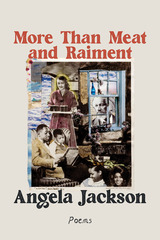 More Than Meat and Raiment: Poems
Angela Jackson
Northwestern University Press, 2022 Angela Jackson returns with a poetic collage that draws on imagery from the African American South and the South Side of Chicago, storytelling, the Black Arts Movement, and Hausa folklore. Deftly intertwining narrative and free verse, she expresses the complexities, beauty, and haunts of the multilayered Black voice. Jackson offers a stirring mixture of the music, food, and soul that have come to characterize her lyrical work.
The speakers of these poems reflect on memory and saga, history and legend. Voices recall evenings spent catching fireflies with a younger sister, the aroma of homemade rolls, the father who squeezes papers into his wallet alongside bills in order to appear wealthy (“a flock of green birds rustling inside / to get out for some extravagance”). A Black girl watches TV and dreams of the perfect partner. A citizen contends with the unrelenting devastation of police violence in a work reminiscent of Gwendolyn Brooks’s “verse journalism.” A mother loses her daughter only to witness her rebirth: “Praise be / the human being / that is being.”
In “For Our People,” an homage to Margaret Walker, Jackson summons the resilience and imagination of African Americans, celebrating “each of us injured or exalted, betrayer or betrayed, muted / and declamatory, all one, each of us all of us, each a private star beloved in the universe.” Lauded as one of American poetry’s most vivid voices, Jackson continues her reign among the country’s foremost wordsmiths. This sublime collection delves deep into the porch stories and folktales that have carried the Black voice through all its histories.
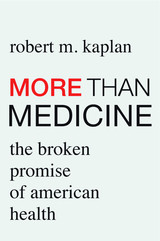 More than Medicine: The Broken Promise of American Health
Robert M. Kaplan
Harvard University Press, 2019 Stanford’s pioneering behavioral scientist draws on a lifetime of research and experience guiding the NIH to make the case that America needs to radically rethink its approach to health care if it wants to stop overspending and overprescribing and improve people’s lives.
American science produces the best—and most expensive—medical treatments in the world. Yet U.S. citizens lag behind their global peers in life expectancy and quality of life. Robert Kaplan brings together extensive data to make the case that health care priorities in the United States are sorely misplaced. America’s medical system is invested in attacking disease, but not in addressing the social, behavioral, and environmental problems that engender disease in the first place. Medicine is important, but many Americans act as though it were all important.
The United States stakes much of its health funding on the promise of high-tech diagnostics and miracle treatments, while ignoring strong evidence that many of the most significant pathways to health are nonmedical. Americans spend millions on drugs for high cholesterol, which increase life expectancy by only six to eight months on average. But they underfund education, which might extend life expectancy by as much as twelve years. Wars on infectious disease have paid off, but clinical trials for chronic conditions—costing billions—rarely confirm that new treatments extend life. Meanwhile, the National Institutes of Health spends just 3 percent of its budget on research on the social and behavioral determinants of health, even though these factors account for 50 percent of premature deaths.
America’s failure to take prevention seriously costs lives. More than Medicine argues that we need a shakeup in how we invest resources, and it offers a bold new vision for longer, healthier living.
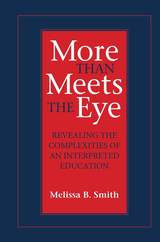 More Than Meets the Eye: Revealing the Complexities of an Interpreted Education
Melissa B. Smith
Gallaudet University Press, 2013 Sign language interpreters often offer the primary avenue of access for deaf and hard of hearing students in public schools. More than 80% of all deaf children today are mainstreamed, and few of their teachers sign well enough to provide them with full access. As a result, many K-12 interpreters perform multiple roles beyond interpreting. Yet, very little is known about what they actually do and what factors inform their moment-to-moment decisions. This volume presents the range of activities and responsibilities performed by educational interpreters, and illuminates what they consider when making decisions.
To learn about the roles of K-12 interpreters, author Melissa B. Smith conducted in-depth analyses at three different schools. She learned that in response to what interpreters feel that their deaf students need, many focus on three key areas: 1) visual access, 2) language and learning, and 3) social and academic participation/inclusion. To best serve their deaf students in these contexts, they perform five critical functions: they assess and respond to the needs and abilities of deaf students; they interpret with or without modification as they deem appropriate; they capitalize on available resources; they rely on interactions with teachers and students to inform their choices; and they take on additional responsibilities as the need arises.
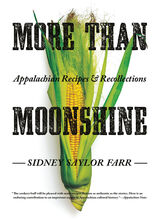 More than Moonshine
Sidney Saylor Farr
University of Pittsburgh Press, 1983
Sydney Saylor Farr is a woman who knows Appalachia well. Born on Stoney Fork in southeastern Kentucky, she has lived much of her life close to the mountains, among people whose roots are deep in the soil and who pass on to their children a love for the land, a strong sense of belonging and of place.
Mountain food and how it is cooked is very much a part of this sense of place. Ask any displaced Appalachians what they miss most and they will probably talk about soup beans, country ham, and homemade buscuits. They may also remember the kitchens at home, the warmth from the wood-burning stove, the smell of coffee, and the family gathered around the kitchen table to eat and talk.
More than Moonshine is both a cookbook and a narrative that recounts the way of life of southern Appalachia from the 1940s to 1983. The women of Stoney Fork rarely had cash to spend, so they depended upon the free products of nature - their cookery used every nutritious, edible thing they could scour from the gardens and hillsides. These survival skills are recounted in the pages of More than Moonshine, with instructions for making moonshine whiskey, for fixing baked groundhog with sweet potatoes, for making turnip kraut, craklin’ bread, egg pie, apple stackcake, and other traditional dishes.
More than Moonshine is more than a cookbook. It evokes a way of life in the mid-twentieth century not unlike that of pioneer days.
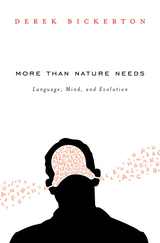 More than Nature Needs: Language, Mind, and Evolution
Derek Bickerton
Harvard University Press, 2014 The human mind is an unlikely evolutionary adaptation. How did humans acquire cognitive capacities far more powerful than anything a hunting-and-gathering primate needed to survive? Alfred Russel Wallace, co-founder with Darwin of evolutionary theory, saw humans as "divine exceptions" to natural selection. Darwin thought use of language might have shaped our sophisticated brains, but his hypothesis remained an intriguing guess--until now. Combining state-of-the-art research with forty years of writing and thinking about language evolution, Derek Bickerton convincingly resolves a crucial problem that both biology and the cognitive sciences have hitherto ignored or evaded.
What evolved first was neither language nor intelligence--merely normal animal communication plus displacement. That was enough to break restrictions on both thought and communication that bound all other animals. The brain self-organized to store and automatically process its new input, words. But words, which are inextricably linked to the concepts they represent, had to be accessible to consciousness. The inevitable consequence was a cognitive engine able to voluntarily merge both thoughts and words into meaningful combinations. Only in a third phase could language emerge, as humans began to tinker with a medium that, when used for communication, was adequate for speakers but suboptimal for hearers.
Starting from humankind's remotest past, More than Nature Needs transcends nativist thesis and empiricist antithesis by presenting a revolutionary synthesis--one that instead of merely repeating "nature and nurture" clichés shows specifically and in a principled manner how and why the synthesis came about.
 More Than Pretty Boxes: How the Rise of Professional Organizing Shows Us the Way We Work Isn’t Working
Carrie M. Lane
University of Chicago Press, 2024 This study of organizing and decluttering professionals helps us understand—and perhaps alleviate—the overwhelming demands society places on our time and energy.
For a widely dreaded, often mundane task, organizing one’s possessions has taken a surprising hold on our cultural imagination. Today, those with the means can hire professionals to help sort and declutter their homes. In More Than Pretty Boxes, Carrie M. Lane introduces us to this world of professional organizers and offers new insight into the domains of work and home, which are forever entangled—especially for women.
The female-dominated organizing profession didn’t have a name until the 1980s, but it is now the subject of countless reality shows, podcasts, and magazines. Lane draws on interviews with organizers, including many of the field’s founders, to trace the profession’s history and uncover its enduring appeal to those seeking meaningful, flexible, self-directed work. Taking readers behind the scenes of real-life organizing sessions, More Than Pretty Boxes details the strategies organizers use to help people part with their belongings, and it also explores the intimate, empathetic relationships that can form between clients and organizers.
But perhaps most importantly, More Than Pretty Boxes helps us think through an interconnected set of questions around neoliberal work arrangements, overconsumption, emotional connection, and the deeply gendered nature of paid and unpaid work. Ultimately, Lane situates organizing at the center of contemporary conversations around how work isn’t working anymore and makes a case for organizing’s radical potential to push back against the overwhelming demands of work and the home, too often placed on women’s shoulders. Organizers aren’t the sole answer to this crisis, but their work can help us better understand both the nature of the problem and the sorts of solace, support, and solutions that might help ease it.
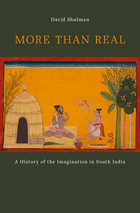 More than Real: A History of the Imagination in South India
David Shulman
Harvard University Press, 2012 From the fifteenth to the eighteenth centuries, the major cultures of southern India underwent a revolution in sensibility reminiscent of what had occurred in Renaissance Italy. During this time, the imagination came to be recognized as the defining feature of human beings. More than Real draws our attention to a period in Indian history that signified major civilizational change and the emergence of a new, proto-modern vision.
In general, India conceived of the imagination as a causative agent: things we perceive are real because we imagine them. David Shulman illuminates this distinctiveness and shows how it differed radically from Western notions of reality and models of the mind. Shulman's explication offers insightful points of comparison with ancient Greek, medieval Islamic, and early modern European theories of mind, and returns Indology to its rightful position of intellectual relevance in the humanities.
At a time when contemporary ideologies and language wars threaten to segregate the study of pre-modern India into linguistic silos, Shulman demonstrates through his virtuoso readings of important literary works—works translated lyrically by the author from Sanskrit, Tamil, Telugu, and Malayalam—that Sanskrit and the classical languages of southern India have been intimately interwoven for centuries.
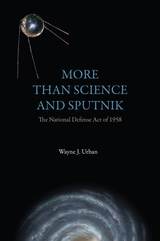 More Than Science and Sputnik: The National Defense Education Act of 1958
Wayne J. Urban
University of Alabama Press, 2010 A behind-the-scenes look at the creation of the National Defense Education Act.
Sparked by dramatic Soviet achievements, particularly in nuclear technology and the development of the Sputnik space orbiter, the United States responded in the late 1950s with an extraordinary federal investment in education. Designed to overcome a perceived national failure to produce enough qualified scientists, engineers, and mathematicians to compete with the Communist bloc, the effort resulted in the National Defense Education Act of 1958 (NDEA). Representative Carl Elliott and Senator Lister Hill both from Alabama, and then Assistant Secretary of Health, Education, and Welfare, Elliot Richardson were the prime movers in shaping of this landmark legislation.
More than Science and Sputnik analyzes primary documents of the three leaders to describe the political process that established the NDEA. The book illustrates what the assumptions of the key players were, and why they believed the act was needed.
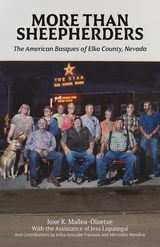 More Than Sheepherders: The American Basques of Elko County, Nevada
Joxe K. Mallea-Olaetxe
University of Nevada Press, 2025 In the remote community of Elko, Nevada, the Altube brothers and the Garats started fabled ranches in the early 1870s. These hardy citizens created the foundation of a community that still exists today, rooted in the traditions and cultures of American Basque families.
Joxe K. Mallea-Olaetxe presents a modern study focused on the post-1970s, when the retired Basque sheepherders and their families became the dominant Americanized minority in the area. During this time, the Fourth of July National Basque Festival began to attract thousands of visitors from as far away as Europe to the small Nevada community and brought to light the vibrant customs of these Nevadans.
This book explores the American Basques’ present-day place in the West, bolstered by the collaborative efforts of four contributors, including two women—all who have been residents of Elko. The writers offer firsthand knowledge of their heritage through numerous vignettes, and these deeply personal perspectives will entice readers into Mallea-Olaetxe’s singular and entertaining historical account.
 More than They Bargained For: Scott Walker, Unions, and the Fight for Wisconsin
Jason Stein and Patrick Marley
University of Wisconsin Press, 2013 When Wisconsin became the first state in the nation in 1959 to let public employees bargain with their employers, the legislation catalyzed changes to labor laws across the country. In March 2011, when newly elected governor Scott Walker repealed most of that labor law and subsequent ones—and then became the first governor in the nation to survive a recall election fifteen months later—it sent a different message. Both times, Wisconsin took the lead, first empowering public unions and then weakening them. This book recounts the battle between the Republican governor and the unions. The struggle drew the attention of the country and the notice of the world, launching Walker as a national star for the Republican Party and simultaneously energizing and damaging the American labor movement. Madison was the site of one unprecedented spectacle after another: 1:00 a.m. parliamentary maneuvers, a camel slipping on icy Madison streets as union firefighters rushed to assist, massive nonviolent street protests, and a weeks-long occupation that blocked the marble halls of the Capitol and made its rotunda ring. Jason Stein and Patrick Marley, award-winning journalists for the Milwaukee Journal Sentinel, covered the fight firsthand. They center their account on the frantic efforts of state officials meeting openly and in the Capitol's elegant backrooms as protesters demonstrated outside. Conducting new in-depth interviews with elected officials, labor leaders, police officers, protestors, and other key figures, and drawing on new documents and their own years of experience as statehouse reporters, Stein and Marley have written a gripping account of the wildest sixteen months in Wisconsin politics since the era of Joe McCarthy. They offer new insights on the origins of Walker's wide-ranging budget-repair bill, which included the provision to end public-sector collective bargaining; the Senate Democrats' decision to leave the state to try to block the bill; Democrats' talks with both union leaders and Republicans while in Illinois; and the reasons why compromise has become, as one Republican dissenter put it, a "dirty word" in politics today. “Stein and Marley, veteran reporters with enviable access, have penned the definitive journalistic account of the Wisconsin uprising, especially as it played out in the state Legislature. They make it a story about individuals, not titanic forces.”—Wisconsin Watch “Stein and Marley deliver an impressively objective account of the struggle, ably describing the objectives and tactics of each side in a confident and engaging style.”— Kirkus Reviews “Stein and Marley deliver a swashbuckling tale of Wisconsin's Republican Governor Scott Walker's election and tumultuous first year in office. . . . Instead of an expected dry read, the authors' lively, economical prose, supplemented by snippets of social media reporting in real time, place readers in the crowded Capitol building stairwells, or in the midst of Wisconsin's largest sustained demonstration since Vietnam protests rocked the University of Wisconsin campus.”— Publishers Weekly “This book is a political thriller, an activists’ handbook (for the Left on how to organize mass protests, and for the Right on how to effectively fight public employee unions), and a work of investigative journalism all rolled into one. Social scientists, political junkies, and anyone interested in public affairs will devour it.”— Library Journal “Not only have Stein and Marley organized this mass of material into a coherent whole, but they also write well, ensuring that even the drier parts of their narrative are clear as well as fair. Their book provides plenty of ammunition for both sides. But it also offers something far better: the basis for an adult conversation about what actually happened.”— Milwaukee Journal Sentinel “This timely account covers the ethics investigations, public demonstrations, runaway legislators, recalls, and physical confrontation between two state Supreme Court justices. . . . This book is written in a concise, unbiased manner and includes complete details. In a greater sense, it explores the drastic polarization endemic in American society today.”— Choice “A testament to the information-gathering powers of good beat reporters. In Bob Woodward style, they reconstruct the backroom meetings that ushered Gov. Scott Walker’s Act 10 legislation through the protester-crammed halls of the Wisconsin State Capitol.”— Milwaukee Magazine “Stein and Marley have managed to produce a very readable, well-researched, and thoroughly interesting narrative without any notable bias—a major accomplishment.”— Wisconsin People & Ideas Magazine
 More Than Two to Tango: Argentine Tango Immigrants in New York City
Anahí Viladrich
University of Arizona Press, 2013 The world of Argentine tango presents a glamorous façade of music and movement. Yet the immigrant artists whose livelihoods depend on the US tango industry receive little attention beyond their enigmatic public personas. More Than Two to Tango offers a detailed portrait of Argentine immigrants for whom tango is both an art form and a means of survival.
Based on a highly visible group of performers within the almost hidden population of Argentines in the United States, More than Two to Tango addresses broader questions on the understudied role of informal webs in the entertainment field. Through the voices of both early generations of immigrants and the latest wave of newcomers, Anahí Viladrich explores how the dancers, musicians, and singers utilize their complex social networks to survive as artists and immigrants. She reveals a diverse community navigating issues of identity, class, and race as they struggle with practical concerns, such as the high cost of living in New York City and affordable health care.
Argentina’s social history serves as the compelling backdrop for understanding the trajectory of tango performers, and Viladrich uses these foundations to explore their current unified front to keep tango as their own “authentic” expression. Yet social ties are no panacea for struggling immigrants. Even as More Than Two to Tango offers the notion that each person is truly conceived and transformed by their journeys around the globe, it challenges rosy portraits of Argentine tango artists by uncovering how their glamorous representations veil their difficulties to make ends meet in the global entertainment industry. In the end, the portrait of Argentine tango performers’ diverse career paths contributes to our larger understanding of who may attain the “American Dream,” and redefines what that means for tango artists.
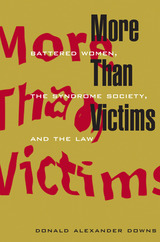 More Than Victims: Battered Women, the Syndrome Society, and the Law
Donald Alexander Downs
University of Chicago Press, 1996 In More Than Victims, Donald Downs offers a sympathetic and powerful analysis of the problems attending the use of battered-woman syndrome as a legal defense, ultimately revealing how the syndrome's logic actually harms those it is trying to protect. A persuasive account of how constitutional freedom and individual justice can be threatened by current legal standards, this thorough yet accessible work presents a dramatic rethinking of the criminal justice system.
"More Than Victims is a powerful step in the right direction. Women as well as men need to be protected from violence, and women, in particular, require better understanding of their sometimes oppressive situations. But they also need to be able to participate fully in the discourse of politics and citizenship. Downs offers a solution that helps to make both possible."—Teresa Godwin Phelps, Review of Politics
"Downs has written an important book on a subject that deserves more of our attention."— Susan Mezey, Law and Politics Book Review
"Comprehensive and compelling. [Downs] demonstrates a masterful grasp of the complex legal and philosophical issues implicated in domestic violence cases."—Annette DeMichele, New York Law Journal
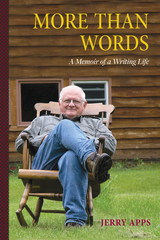 More Than Words: A Memoir of a Writing Life
Jerry Apps
Wisconsin Historical Society Press, 2022 In this combination memoir and craft book, award-winning author Jerry Apps shares the next phase in his life story begun in Limping through Life and Once a Professor. Beginning with a boyhood surrounded by storytellers, Jerry takes readers along on his path to becoming one of the Midwest’s best-known and most revered writers. In characteristic no-nonsense style, he shares the joys, disappointments, and frustrations of the writing life and describes the genesis and creation of many of his best-known books. In recounting his nearly six-decade writing career, Jerry provides an insider’s view into the creative process, delving into sources for ideas, research strategies, and guidelines and essential tools for writing. Along the way he recalls his relationships with publishers, editors, TV producers, librarians, booksellers, and others and shares a scrapbook’s worth of stories—some funny, some heartwarming, a few of them harrowing—from the road. A book for book lovers!
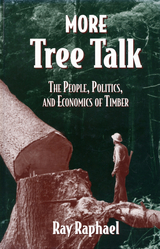 More Tree Talk: The People, Politics, and Economics of Timber
Ray Raphael
Island Press, 1994 More Tree Talk is an insightful and compelling look at the human dimension of the challenges facing forestry. First published in 1981, Tree Talk was widely hailed as the most even-handed and well-written introduction to forestry issues available. More Tree Talk is an entirely revised edition of that classic volume that brings the book up-to-date with the current situation. Like the original, More Tree Talk features a running narrative punctuated by individual portraits that personalize the issues. It translates political and academic aspects of forestry into human terms, focusing on those whose lives and livelihoods depend on the outcome of the debates currently raging -- old-time woodsmen, loggers, naturalists, restoration workers, timber company executives. Ray Raphael explores the new forestry practices, theories, and controversies that have emerged in the past decade as he addresses problems of a declining resource base and increasing regulatory policies. He examines the impact of ecological and economic concerns on rural communities, and considers the possibility of large structural changes in the ways in which timber companies operate. Throughout, he emphasizes that without an understanding of the economic and political factors that interfere with good forest management, all the scientific knowledge -- and all the best intentions of on-site workers -- will come to no avail.
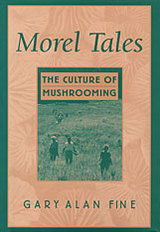 Morel Tales: The Culture of Mushrooming
Gary Alan Fine
Harvard University Press, 1998 In this thoughtful book, Gary Fine explores how Americans attempt to give meaning to the natural world that surrounds them. Although "nature" has often been treated as an unproblematic reality, Fine suggests that the meanings we assign to the natural environment are culturally grounded. In other words, there is no nature separate from culture. He calls this process of cultural construction and interpretation, "naturework." Of course, there is no denying the biological reality of trees, mountains, earthquakes, and hurricanes, but, he argues, they must be interpreted to be made meaningful. Fine supports this claim by examining the fascinating world of mushrooming.
Based on three years of field research with mushroomers at local and national forays, Morel Tales highlights the extensive range of meanings that mushrooms have for mushroomers. Fine details how mushroomers talk about their finds--turning their experiences into "fish stories" (the one that got away), war stories, and treasure tales; how mushroomers routinely joke about dying from or killing others with misidentified mushrooms, and how this dark humor contributes to the sense of community among collectors. He also describes the sometimes friendly, sometimes tense relations between amateur mushroom collectors and professional mycologists. Fine extends his argument to show that the elaboration of cultural meanings found among mushroom collectors is equally applicable to birders, butterfly collectors, rock hounds, and other naturalists.
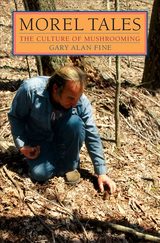 Morel Tales: THE CULTURE OF MUSHROOMING
Gary Alan Fine
University of Illinois Press, 2003 Drawing on the observations of three years spent in the company of dedicated amateur mushroomers and professional mycologists, Gary Alan Fine explores the ways in which Americans attempt to give meaning to the natural world, while providing an eye-opening look inside the cultures they construct around its study and appreciation.
A landmark work of environmental sociology, Morel Tales is an engaging and instructive examination of a thriving community, one with its own language, ceremonies, jokes, narratives, rivalries, and social codes. Fine also provides a detailed discussion of the American phenomenon he calls “naturework” -- that is, culturally constructing one’s own place in the natural environment through communities with shared systems of assigned meaning.
“Naturework,” Fine observes, is something we all do on some level -- not only birders, butterfly collectors, rock hounds, hunters, hikers, campers, and outdoor enthusiasts, but all of us who construct community through narrative and nature through culture.
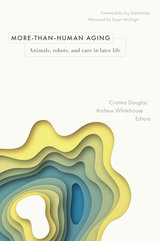 More-than-Human Aging: Animals, Robots, and Care in Later Life
Cristina Douglas
Rutgers University Press, 2025 What does later life look like when it is lived in the companionship of other species? Similarly, how do other species age (or not) with humans, and what sort of (a)symmetries, if any, are brought to light around how we understand and think about aging? So far, aging has been investigated in the social sciences in purely human terms. This is the first collection of original work that considers aging as taking place in relation to other species. This volume aims to start a conversation about aging by taking its more-than-human participants seriously—that is, not only as a support for or context of human aging but also, more symmetrically, as agents and subjects in the process of aging. The contributors draw upon richly descriptive ethnographic accounts, including moments of connection between seniors and dogs in a long-term care facility, human care for aging laboratory animals, and robotic companionship in later life. The ethnographies in this volume not only enrich our understanding of more-than-human companionship during the human aging process but also challenge and urge us to rethink what it means to live later in life in ecologically entangled social and moral worlds.
 More-than-Human Histories of Latin America and the Caribbean: Decentring the Human in Environmental History
Edited by Diogo de Carvalho Cabral
University of London Press, 2024 A consideration of other-than-human elements defining history in Latin America and the Caribbean.
The Latin American and Caribbean regions’ historical trajectories have been shaped by complex human-nonhuman interactions. In these histories, people are important, even crucial, actors, but not the only ones. Offering a novel approach to the writing of Latin American history, this book brings eight thought-provoking chapters together with a historiographical introduction and critical afterword to center nonhuman beings and things. The oscillating glare of the sun, the allure and resourcefulness of animals, the reluctant genetic malleability of plant seeds, and the life-giving and intractable impassivity of rivers are some of the other-than-human agents driving history in the volume’s chapters.
This book problematizes Latin American(ist) historiography’s tendency to frame “nature” as a separate ontological domain that is only acted upon—conquered, manipulated, devastated—lacking the self-propelled dynamics capable of shaping the course of events. With broad regional and temporal coverage across Latin America and the Caribbean from the pre-colonial period to the present day, More-than-Human Histories of Latin America and the Caribbean responds to environmental history’s call to write biophysical environments into the human past—a reconsideration of historical agency that, in this era of climate change, is more necessary than ever.
 Morgan Park: Duluth, U.S. Steel, and the Forging of a Company Town
Arnold R. Alanen
University of Minnesota Press, 2008 From 1915 to 1971 the large U.S. Steel plant was a major part of Duluth’s landscape and life. Just as important was Morgan Park—an innovatively planned and close-knit community constructed for the plant’s employees and their families. In this new book Arnold R. Alanen brings to life Morgan Park, the formerly company-controlled town that now stands as a city neighborhood, and the U.S. Steel plant for which it was built. Planned by renowned landscape architects, architects, and engineers, and provided with schools, churches, and recreational and medical services by U.S. Steel, Morgan Park is an iconic example—like Lowell, Massachusetts, and Pullman, Illinois—of a twentieth-century company town, as well as a window into northeastern Minnesota’s industrial roots. Starting with the intense political debates that preceded U.S. Steel’s decision to build a plant in Duluth, Morgan Park follows the town and its residents through the boom years to the closing of the outmoded facility—an event that foreshadowed industrial shutdowns elsewhere in the United States—and up to today, as current residents work to preserve the community’s historic character. Through compelling archival and contemporary photographs and vibrant stories of a community built of concrete and strong as steel, Alanen shows the impact both the plant and Morgan Park have had on life in Duluth. Arnold R. Alanen is professor of landscape architecture at the University of Wisconsin–Madison. His previous books include Main Street Ready-Made: The New Deal Community of Greendale, Wisconsin and Preserving Cultural Landscapes in America.
 The Morgans: Private International Bankers, 1854–1913
Vincent P. Carosso
Harvard University Press, 1987 The House of Morgan was the personification of economic power and the symbol of capitalism in the late nineteenth and early twentieth centuries. Other entrepreneurs were wealthier—industrialists like Rockefeller, Carnegie, and Duke—but none was relied upon more by business and government or better known in the world of high finance. Vincent Carosso, using for the first time the large collections that constitute the Morgans’ own business records, as well as other private papers and public archives, has constructed an in-depth account of the evolution, operations, and internal management of the Morgan banks at London, New York, Philadelphia, and Paris, from the time Junius Spencer Morgan left his Boston business to become a London banker to the death of his son and successor, John Pierpont Morgan.
The new data throw light on the Morgans’ business strategies, policies, and practices in financing such vast American enterprises as railroads, steel, farm equipment, communications, and the electrical industry. They also reveal the Morgan firms’ dealings in the political arena in their role as financiers of the United States government—Morgan banks funded the Civil War debt, met the Army payroll in 1877, stopped disastrous outflows of U.S. gold in 1894 and 1895, and acted as the country’s central bank in the panic of 1907—and as bankers for Mexico, Argentina, and many other governments.
This intricate and comprehensive history of the mechanisms of international finance, the waning of private banking houses and the evolution of commercial and investment banking, the risks and profits of high finance will interest historians of business, economics, the United States, and the modern world.
Mori Arinori
Ivan Parker Hall
Harvard University Press, 1973
 Moritz Gottlieb Saphir: Nineteenth-Century Pioneer of Journalism and Food Writing
András Koerner
Central European University Press, 2025 The writer and journalist Moritz Gottlieb Saphir (1795–1858) was born to an Orthodox Jewish family in a Hungarian village and studied in a yeshiva but spent his professional life in the cities of Germany and Austria. He was one of the most popular authors and cultural figures in Central and Western Europe in the 19th century, which can be also seen from the fact that Alexandre Dumas, Sr. published a collection of his writings in French complete with a long essay expressing his admiration for Saphir. Together with his friends Heinrich Heine and Ludwig Börne, Saphir was the first Jewish author to achieve international fame. Like them, he converted to the Lutheran faith, but he never denied his Jewish origins and wrote appreciatively of Jewish food traditions. His literary and journalistic innovations included publishing the first modern newspapers in Berlin, Munich and Vienna, developing a new style of humorous writing, introducing the journalistic genre of the feuilleton to Austria, authoring the first extended prose poem in the German language and writing the first study of vernacular Ashkenazi Jewish cuisine, as well as the first review of a Jewish cookbook and restaurant. Although due to censorship he had to largely eschew political subjects, he courageously fought for press freedom and against anti-Jewish prejudice. Although perhaps not a great writer, he was an important and intriguing figure of European cultural history who certainly doesn’t deserve the neglect his work has suffered since the early 20th century. András Koerner’s book is the first modern monograph of him, which in addition to a detailed presentation of his eventful, interesting life and an examination of his personality, identity and work also includes the first-ever extensive annotated anthology of him in English.
Morkan's Quarry: A Novel
Steve Yates
Moon City, 2010 In 1861, the Civil War severs Michael Morkan from everything he loves and all that defines him--from his son, Leighton; from his love, Cora Slade; and from the quarry he owns in Springfield, Missouri. Forced to give his black powder to the Missouri State Guard, he finds himself indelibly labeled a rebel traitor and is imprisoned in St. Louis. Back in the Ozarks, Leighton joins the Federal Home Guards in hopes of paroling his father. When Leighton finally frees him, the two are pitched in a last gambit for their quarry and for the legacy of the name Morkan.
Mormon Battalion: United States Army of the West, 1846-1848
Norma Baldwin Ricketts
Utah State University Press, 1997 Few events in the history of the American Far West from 1846 to 1849 did not involve the Mormon Battalion. The Battalion participated in the United States conquest of California and in the discovery of gold, opened four major wagon trails, and carried the news of gold east to an eager American public. Yet, the battalion is little known beyond Mormon history. This first complete history of the wide-ranging army unit restores it to its central place in Western history, and provides descendants a complete roster of the Battalion's members.
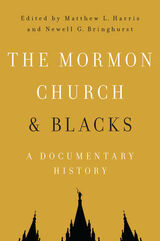 The Mormon Church and Blacks: A Documentary History
Edited by Matthew L. Harris and Newell G. Bringhurst
University of Illinois Press, 2015 The year 1978 marked a watershed year in the history of The Church of Jesus Christ of Latter-day Saints as it lifted a 126-year ban on ordaining black males for the priesthood. This departure from past practice focused new attention on Brigham Young's decision to abandon Joseph Smith's more inclusive original teachings. The Mormon Church and Blacks presents thirty official or authoritative Church statements on the status of African Americans in the Mormon Church. Matthew L. Harris and Newell G. Bringhurst comment on the individual documents, analyzing how they reflected uniquely Mormon characteristics and contextualizing each within the larger scope of the history of race and religion in the United States. Their analyses consider how lifting the ban shifted the status of African Americans within Mormonism, including the fact that African Americans, once denied access to certain temple rituals considered essential for Mormon salvation, could finally be considered full-fledged Latter-day Saints in both this world and the next. Throughout, Harris and Bringhurst offer an informed view of behind-the-scenes Church politicking before and after the ban. The result is an essential resource for experts and laymen alike on a much-misunderstood aspect of Mormon history and belief.
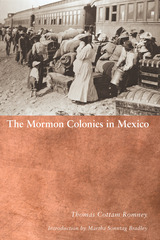 Mormon Colonies in Mexico
Thomas Cottam Romney
University of Utah Press, 2005 "Romney’s unique vantage point is the strongest draw of this narrative: Romney and his family lived much of their life in the Mexican Mormon colonies. But the narrative’s value is much broader and deeper than just that. Romney’s insights into Mexican politics and personalities, and his view of the course of history from inside rather than from outside, are fascinating, colorful and opinionated. He was clear about who he admired and why, and who he did not."
—from the Foreword
In the 1880s, as a precondition to granting Utah statehood, the United States government enacted laws to put a stop to the Mormon practice of polygamy. Those who continued to practice this principle were forced underground as federal marshals roamed the territory searching for "polygs." In response, the Church of Jesus Christ of Latter-day Saints looked for safe places to send its members; many found refuge across the border in Mexico.
Unavailable since its original publication in 1938, this important document of a little-known chapter in Mormon history is now reprinted with a foreword by Martha Sonntag Bradley. Romney was raised and spent much of his life in the colonies, making this book a significant contribution to LDS history. It chronicles a new kind of Mormon pioneer facing the hardships of an unfamiliar land, a tenuous relationship with the government, and the necessary fortitude to hold fast to one’s belief in the face of difficulty and trial.
Mormon Enigma: Emma Hale Smith
Linda King Newell and Valeen Tippetts Avery
University of Illinois Press, 1994 Winner of the Evans Biography Award, the Mormon History Association Best Book Award, and the John Whitmer Association (RLDS) Best Book Award. Mormon Enigma is the bestselling biography of Emma Hale Smith, wife of the Mormon prophet Joseph Smith. It was Joseph Smith who announced that an angel of the Lord had commanded him to introduce a 'new order of marriage.' And it was Emma Hale Smith who confronted the practice of polygamy head on. As the authors note in their introduction, "Early leaders in Utah castigated Emma from their pulpits for opposing Brigham Young and the practice of polygamy, and for lending support to the Reorganization. As these attitudes filtered down through the years, Emma was virtually written out of official Utah histories. In this biography, we have attempted to reconstruct the full story of this remarkable and much misunderstood woman's experiences.
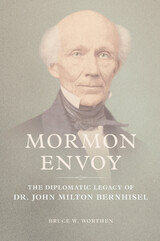 Mormon Envoy: The Diplomatic Legacy of Dr. John Milton Bernhisel
Bruce W. Worthen
University of Illinois Press, 2023 For more than twenty years, John Milton Bernhisel negotiated with the federal government on behalf of the Church of Jesus Christ of Latter-day Saints. Bruce W. Worthen illuminates the life and work of the man whose diplomacy steered the Church’s relationship with Washington, D.C. from its early period of dangerous conflict to a peaceful and pragmatic coexistence. Having risen from a Pennsylvania backcountry upbringing to become a respected member of the upper class, Bernhisel possessed a personal history that allowed him to reach common ground with politicians and other outsiders. He negotiated for Joseph Smith’s life and, after the Church’s relocation to the Utah Territory, took on the task of rehabilitating the public image of the Latter-day Saints. Brigham Young’s defiance of the government undermined Bernhisel’s work, but their close if sometimes turbulent relationship ultimately allowed Bernhisel to make peace with Washington, secure a presidential pardon for Young, and put Utah and the Latter-day Saints on the road to formally joining the United States.
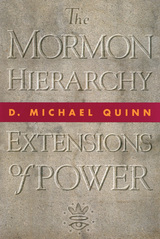 The Mormon Hierarchy: Extensions of Power
D. Michael Quinn
Signature Books, 1997 The Mormon church today is led by an elite group of older men, nearly three-quarters of whom are related to current or past general church authorities. This dynastic hierarchy meets in private; neither its minutes nor the church’s finances are available for public review. Members are reassured by public relations spokesmen that all is well and that harmony prevails among these brethren. But by interviewing former church aides, examining hundreds of diaries, and drawing from his own past experience as an insider within the Latter-day Saint historical department, D. Michael Quinn presents a fuller view. His extensive research documents how the governing apostles, seventies, and presiding bishops are likely to be at loggerheads, as much as united. These strong-willed, independent men–like directors of a large corporation or supreme court justices–lobby among their colleagues, forge alliances, out-maneuver opponents, and broker compromises. There is more: clandestine political activities, investigative and punitive actions by church security forces, personal “loans” from church coffers (later written off as bad debts), and other privileged power-vested activities. Quinn considers the changing role and attitude of the leadership toward visionary experiences, the momentous events which have shaped quorum protocol and doctrine, and day-to-day bureaucratic intrigue from the time of Brigham Young to the dawn of the twenty-first century. The hierarchy seems at root well-intentioned and even at times aggressive in fulfilling its stated responsibility, which is to expedite the Second Coming. Where they have become convinced that God has spoken, they have set aside personal differences, offered unqualified support, and spoken with a unified voice. This potential for change, when coupled with the tempering effect of competing viewpoints, is something Quinn finds encouraging about Mormonism. But one should not assume that these men are infallible or work in anything approaching uninterrupted unanimity.
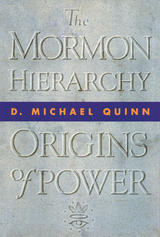 The Mormon Hierarchy: Origins of Power
D. Michael Quinn
Signature Books, 1994 Converts to Joseph Smith’s 1828 restoration of primitive Christianity were attracted to the non-hierarchical nature of the movement. It was precisely because there were no priests, ordinances, or dogma that people joined in such numbers. Smith intended everyone to be a prophet, and anyone who felt called was invited to minister freely without formal office. Not until seven years later did Mormons first learn that authority had been restored by angels or of the need for a hierarchy mirroring the Pauline model. That same year (1835) a Quorum of Twelve Apostles was organized, but their jurisdiction was limited to areas outside established stakes (dioceses). Stakes were led by a president, who oversaw spiritual development, and by a bishop, who supervised temporal needs. At Smith’s martyrdom in 1844, the church had five leading quorums of authority. The most obvious successor to Smith, Illinois stake president William Marks, opposed the secret rites of polygamy, anointing, endowments, and the clandestine political activity that had characterized the church in Illinois. The secret Council of Fifty had recently ordained Smith as King on Earth and sent ambassadors abroad to form alliances against the United States. The majority of church members knew nothing of these developments, but they followed Brigham Young, head of the Quorum of the Twelve, who spoke forcefully and moved decisively to eliminate contenders for the presidency. He continued to build on Smith’s political and doctrinal innovations and social stratification. Young’s twentieth-century legacy is a well-defined structure without the charismatic spontaneity or egalitarian chaos of the early church. Historian D. Michael Quinn examines the contradictions and confusion of the first two tumultuous decades of LDS history. He demonstrates how events and doctrines were silently, retroactively inserted into the published form of scriptures and records to smooth out the stormy, haphazard development. The bureaucratization of Mormonism was inevitable, but the manner in which it occurred was unpredictable and will be, for readers, fascinating.
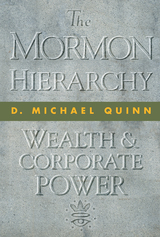 The Mormon Hierarchy: Wealth and Corporate Power
D. Michael Quinn
Signature Books, 2017 Early in the twentieth century, it was possible for Latter-day Saints to have lifelong associations with businesses managed by their leaders or owned and controlled by the church itself. For example, one could purchase engagement rings from Daynes Jewelry, honeymoon at the Hotel Utah, and venture off on the Union Pacific Railroad, all partially owned and run by church apostles. Families could buy clothes at Knight Woolen Mills. The husband might work at Big Indian Copper or Bullion-Beck, Gold Chain, or Iron King mining companies. The wife could shop at Utah Cereal Food and buy sugar supplied by Amalgamated or U and I Sugar, beef from Nevada Land and Livestock, and vegetables from the Growers Market. They might take their groceries home in parcels from Utah Bag Co. They probably read the Deseret News at home under a lamp plugged into a Utah Power and Light circuit. They could take out a loan from Zion’s Co-operative and insurance from Utah Home and Fire. The apostles had a long history of community involvement in financial enterprises to the benefit of the general membership and their own economic advantage. This volume is the result of the author’s years of research into LDS financial dominance from 1830 to 2010.
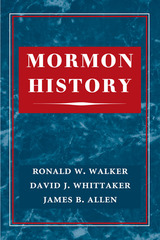 Mormon History
Ronald W. Walker, David J. Whittaker, James B. Allen
University of Illinois Press, 2010 A companion volume to their massive bibliography Studies in Mormon History, 1830–1997, this descriptive history by a team of top Mormon scholars provides a comprehensive view of how the writing of Mormon history has evolved since the establishment of the church. Mormon History offers an interpretive survey of Mormon historical writings, from the partisan and often ephemeral history of the nineteenth century through the shift in the twentieth toward a more balanced and professional approach and an emphasis on how the Mormons helped settle the American West. The authors examine Mormon biography and autobiography and discuss social science literature on the Mormons, including studies of social geography, rural sociology, and agricultural economics. Two valuable appendices round out this volume, one on the development and nature of Mormon imprints, the other on conducting historical research in Mormon sources.
 The Mormon History Association’s Tanner Lectures: The First Twenty Years
Edited by Dean L. May and Reid L. Neilsonwith Richard Lyman Bushman, Jan Shipps, and Thomas G. Alexander
University of Illinois Press, 2000 The Tanner lectures, now firmly entrenched as an institution at the annual Mormon History Association meetings, were established in 1980 as a means of providing scholars of Mormonism with a valuable new perspective for their historical record. All twenty-one lectures are presented by well-known non-Mormon scholars that were invited to prepare presentations in their own specialties that also encompass some aspect of Mormon history. In the course of preparing their talks, the presenters are expected to immerse themselves for a year in current historical writings on Mormons and Mormonism. As this collection amply demonstrates, when these scholars do their homework, the results are enlightening. This volume includes the Tanner lectures for the last two decades of the twentieth century, a general introduction, and specialized introductions to each individual lecture.
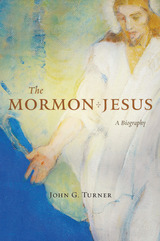 The Mormon Jesus: A Biography
John G. Turner
Harvard University Press, 2016 The nineteenth-century Mormon prophet Joseph Smith published a new scripture dominated by the figure of Jesus Christ, dictated revelations presented as the words of the Christian savior, spoke of encountering Jesus in visions, and told his followers that their messiah and king would soon return to the earth. From the author of the definitive life of Brigham Young comes a biography of the Mormon Jesus that revises and enriches our understanding of The Church of Jesus Christ of Latter-day Saints.
Over the past two hundred years, Jesus has connected the Latter-day Saints to broader currents of Christianity, even while particular Mormon beliefs and practices have been points of differentiation and conflict. The Latter-day Saints came to understand Jesus Christ as the literal son of his father, the exalted brother of God’s other spirit children, who should aspire to become like him. They gave new meaning to many titles for Jesus Christ: Father, Son of God, Lord, Savior, Firstborn, Elder Brother, Bridegroom, and Jehovah.
While some early beliefs became canonized and others were discarded, Jesus Christ remains central to Latter-day Saint scripture, doctrine, and religious experience. Contemporary Mormon leaders miss no opportunity to proclaim their church’s devotion to the Christian savior, in part because evangelical Protestants denounce Mormonism as a non-Christian cult. This tension between Mormonism's distinctive claims and the church’s desire to be accepted as Christian, John G. Turner argues, continues to shape Mormon identity and attract new members to the church.
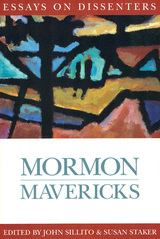 Mormon Mavericks: Essays on Dissenters
John Sillito
Signature Books, 2002 Some left, some stayed. Each one found some aspect of their church’s history, doctrine, policies, or politics that they could not reconcile with their own personal ethics. Some felt burdened by the conflict, while others embraced it. A few were reticent, even apologetic about their disagreements. Others were barnstormers. Each possessed some quality that destined him or her to ride at the fringes rather than at the center.
Mormon Mavericks summarizes a few famous flashpoints in Mormon history; more importantly, it provides a telling study in human nature. Each contributor is an expert in his or her discipline, and all approach their topic with equal doses of sympathy and objectivity.
The following mavericks are featured in this collection of biographical essays:
Fawn McKay Brodie
Juanita Brooks
Thomas Stuart Ferguson
Amasa Mason Lyman
Sterling M. McMurrin
John E. Page
Sarah M. Pratt D. Michael Quinn
William Smith
Fanny Stenhouse
T. B. H. Stenhouse
James Strang
Samuel Woolley Taylor
Moses Thatcher
Mormon Midwife
edited by Donna Toland Smart
Utah State University Press, 1999 Patty Session's 1847 Mormon Trail diary has been widely quoted and excerpted, but her complete diaries chronicling the first decades of Mormon settlement at Salt Lake City have never before been published. They provide a detailed record of early Mormon community life from Illinois to Utah through the eyes of Mormondom's most famous midwife. They also recount her important role in women's social networks and her contributions to community health and Utah's economy, to pioneer education and horticulture. Patty Sessions assisted at the births of humdreds of early Mormons and first-generation Utahns, meticulously recording the events. Shed had an active role in the founding of the Relief Society and health organizations. She spoke in tongues and administered spiritually as well as medically to the ill. Her diaries are a rich resource for early Mormon and Utah history.
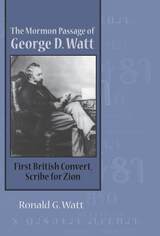 Mormon Passage of George D. Watt: First British Convert, Scribe for Zion
Ronald G. Watt
Utah State University Press, 2009 Nineteenth century Mormonism was a frontier religion with roots so entangled with the American experience as to be seen by some scholars as the most American of religions and by others as a direct critique of that experience. Yet it also was a missionary religion that through proselytizing quickly gained an international, if initially mostly Northern European, makeup. This mix brought it a roster of interesting characters: frontiersmen and hardscrabble farmers; preachers and theologians; dreamers and idealists; craftsmen and social engineers. Althoughthe Mormon elite soon took on, as elites do, a rather fixed, dynastic character, the social origins of its first-generation members were quite diverse. The Mormon Church at its beginning provided a good study in upward mobility. George D. Watt, for instance, was a self-educated convert with both unusual, for the time and place of frontier Utah, clerical skills and ambitions to improve his status. A man with intellectual pretensions, he had little formal training but a strong will, avid curiosity, and appetite for knowledge. Those traits made up for what he lacked in schooling and drew him into what served as intellectual circles among the Mormon elite and, later, on the church’s disenchanted fringe. They also made him for a time essential to Brigham Young as a clerk and reporter but sent him into religious and social exile, due to a contest of wills with his employer that Watt had no chance of winning,. Reputed to have been the first of the many English converts to the LDS church, Watt’s repeatedly demonstrated ability to learn quickly made him an early master of Pitman shorthand, just then coming into use. Employing this skill, he made two important contributions to Mormon literature: First, he more than anyone created, based on that shorthand, the Deseret Alphabet, which now is a curiosity but then was an innovation that, intended to create a unique Mormon orthography and pedagogy, stands well for the broad attempt to build in Utah the wholly self-sufficient culture of the Kingdom of God. Second, his efficient note taking allowed him to take down the sermons of Young and other church leaders and publish them in the Journal of Discourses, an indispensible historical record. In addition Watt learned, thought, and wrote about a variety of subjects, from horticulture to spiritualism, which helped define him as a resident Utah intellectual. He eventually left the Mormon Church, but the records of his domestic life before and after that decision provide a rich portrait of the working of polygamous households, particularly complicated ones in his case. Despite his accomplishments, because of his potential, George Watt’s story is at heart a tragedy. His breach with Young resulted in social isolation, poverty, and rejection by friends and associates. He never, though, lost his sense of independence or his avid mind. Whether facing an economic affront or pressing, in writing, his own conclusions about life and God, he engaged the challenge where he found it.
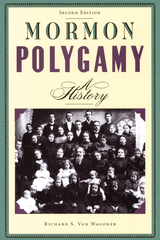 Mormon Polygamy: A History
Richard S. Van Wagoner
Signature Books, 1989 In this comprehensive survey of Mormon Polygamy, Richard Van Wagoner details, with precision and detachment, the tumultuous reaction among insiders and outsiders to plural marriage. In an honest, methodical way, he traces the origins, the peculiarities common to the midwestern and later Utah periods, and post-1890 new marriages. Drawing heavily on first-hand accounts, he outlines the theological underpinnings and the personal trauma associated with this lifestyle. What emerges is a portrait that neither discounts nor exaggerates the historical evidence. He presents polygamy in context, neither condemning nor defending, while relevant contemporary accounts are treated sympathetically but interpreted critically. No period of Mormon history is emphasized over another. The result is a systematic view that is unavailable in studies of isolated periods or in the repetitions of folklore that only disguise the reality of what polygamy was. Scattered throughout the western United States today are an estimated 30,000 fundamentalist Mormons who still live “the principle.” They, too, are a part of Joseph Smith’s legacy and are included in this study.
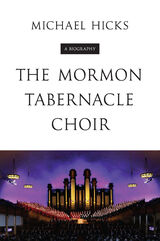 The Mormon Tabernacle Choir: A Biography
Michael Hicks
University of Illinois Press, 2015 A first-of-its-kind history, The Mormon Tabernacle Choir tells the epic story of how an all-volunteer group founded by persecuted religious outcasts grew into a multimedia powerhouse synonymous with the mainstream and with Mormonism itself.
Drawing on decades of work observing and researching the Mormon Tabernacle Choir, Michael Hicks examines the personalities, decisions, and controversies that shaped "America's choir." Here is the miraculous story behind the Tabernacle's world-famous acoustics, the anti-Mormonism that greeted early tours, the clashes with Church leaders over repertoire and presentation, the radio-driven boom in popularity, the competing visions of rival conductors, and the Choir's aspiration to be accepted within classical music even as Mormons sought acceptance within American culture at large. Everything from Billboard hits to TV appearances to White House performances paved the way for Mormonism's crossover triumph. Yet, as Hicks shows, such success raised fundamental concerns regarding the Choir's mission, functions, and image.
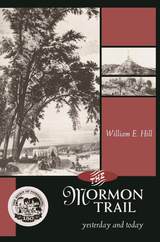 The Mormon Trail: Yesterday and Today
William E. Hill
Utah State University Press, 1996 Back in print, this essential reference for readers interested in the Mormon Trail is part history, part resource book, part guide and photographic essay. Driven from their home in Nauvoo, Illinois, Mormons led by Brigham Young began in 1846 to journey west to an expected haven in the Great Salt Lake Valley. The first party arrived there in July 1847. Thousands of members and converts later followed the Mormon Trail, which for much of its way traced the route of the Oregon Trail, although it generally stayed across the Platte River from the more-traveled way. It was thus, until the railroad's arrival in 1869, one of the West's most important and heavily used roads. Although the Mormons' experience was in most ways similar to that of other emigrants, the religious motivations, tight organization, and family groups of the Mormons gave their migration a distinct character. William E. Hill introduces the Mormons, their eventful early history, and the characteristics of the migration west. His book also includes a chronology of trail-related events, excerpts from diaries and guidebooks, songs, historical maps, over 200 then-and-now illustrations, descriptions of major museums and displays on the trail, and recommendations for further reading.
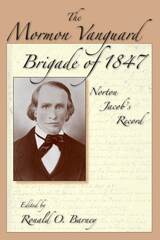 Mormon Vanguard Brigade Of 1847: Norton Jacob's Record
edited by Ronald O. Barney
Utah State University Press, 2005 There are no historical events that have more iconic significance for the people of Utah than the trek of the vanguard company of Mormons west in 1847. Its meaning may vary, but overall, the march has a highly symbolic and seminal historical importance for virtually all Utahns. While the journey has been widely celebrated, memorialized, and even sanctified and various books have been written about it, there is more that can be said and understood about the migration's place in western history; about its context, including events preceding and following it; and about the real experiences of its participants. Particularly lacking in most published accounts are the stories of the rank and file members, the individuals who, in contrast to the well-known leadership, with Brigham Young at the top, might fittingly be called foot soldiers. The 1847 company had a military-like organization, which is captured by Ronald Barney's term brigade in the title. Norton Jacob was such a man of the ranks in 1847. He had no special status in the Mormon Church, and there was little to make him stand out in the historical record than that he left what is regarded by many trail historians as one of the best and most informative journals of the early Mormon emigration. While the heart of Jacob's record concerns the 1847 journey, there is much more to it. The diary published here begins in 1844, the year of church founder Joseph Smith's murder. It continues through the crisis events that followed: the Mormons' flight from Nauvoo, their trudging journey across Iowa to Winter Quarters, and the beginnings of mass migration to Utah. After the apex of 1847, the arc of the narrative moves through accounts of Jacob's return to Nauvoo late that year and of the much larger Mormon emigration in 1848. It reaches denouement in a short record of his first years in Salt Lake Valley.
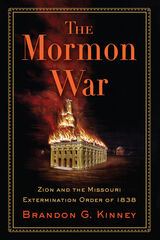 The Mormon War: Zion and the Missouri Extermination Order of 1838
Brandon G. Kinney
Westholme Publishing, 2011 How the Violent Expulsion of the Mormons from Missouri Changed the History of America and the West
In 1831, Joseph Smith, Jr., the founder of the Church of Christ—later to be renamed the Church of Jesus Christ of Latter Day Saints—revealed that Zion, or “New Jerusalem,” was to be established in Jackson County, Missouri. Smith sent some of his followers to begin the settlement, but they were soon expelled by locals who were suspicious of their religion and their abolitionist sympathies. Smith led an expedition to regain the settlement, but was unsuccessful. Seven years later, in January 1838, Smith fled to Missouri from Ohio to avoid a warrant for his arrest, and joined the Mormon community in the town of Far West, which became the new Zion. The same prejudices recurred and the Mormons found themselves subject to attacks from non-Mormons, including attempts to prevent them from voting. Despite his abhorrence of violence, Smith decided that it was necessary for Mormons to defend themselves, which resulted in a short and sharp conflict known as the Mormon War. A covert Mormon paramilitary unit, the Danites, was formed to pillage non- Mormon towns, while angry rhetoric rose from both sides. After the Missouri state militia was attacked at the Battle of Crooked River, Missouri governor Liburn William Boggs issued Executive Order 44, which called for Mormons to be “exterminated or driven from the State.” Non-Mormons responded by attacking a Mormon settlement at Haun’s Mill, killing men and boys and firing on the women. Following this massacre, the state militia surrounded Far West and arrested Smith and other Mormon leaders. Smith was tried for treason and narrowly avoided execution, but was allowed to go and join the rest of his followers who were forced from Missouri to Illinois, where they founded their next major town, Nauvoo. There, Smith would be murdered and the church would split into several factions, with Brigham Young leading the movement’s largest group to Utah. In The Mormon War: Zion and the Missouri Extermination Order of 1838, Brandon G. Kinney unravels the complex series of events that led to a religious and ideological war of both blood and words. The Mormon War not only challenged the protection afforded by the First Amendment, it foreshadowed the partisan violence over slavery and states’ rights that would erupt across Missouri and Kansas. The war also fractured Smith’s Church and led ultimately to the unexpected settlement of a vast area of the West as a Mormon homeland. By tracing the life of Joseph Smith, Jr. and his quest for Zion, the author reveals that the religion he founded was destined for conflict—both internal and external—as long as he remained its leader.
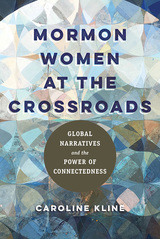 Mormon Women at the Crossroads: Global Narratives and the Power of Connectedness
Caroline Kline
University of Illinois Press, 2022 Winner of the Mormon History Association Best International Book Award The Church of Jesus Christ of Latter-day Saints continues to contend with longstanding tensions surrounding gender and race. Yet women of color in the United States and across the Global South adopt and adapt the faith to their contexts, many sharing the high level of satisfaction expressed by Latter-day Saints in general. Caroline Kline explores the ways Latter-day Saint women of color in Mexico, Botswana, and the United States navigate gender norms, but also how their moral priorities and actions challenge Western feminist assumptions. Kline analyzes these traditional religious women through non-oppressive connectedness, a worldview that blends elements of female empowerment and liberation with a broader focus on fostering positive and productive relationships in different realms. Even as members of a patriarchal institution, the women feel a sense of liberation that empowers them to work against oppression and against alienation from both God and other human beings. Vivid and groundbreaking, Mormon Women at the Crossroads merges interviews with theory to offer a rare discussion of Latter-day Saint women from a global perspective.
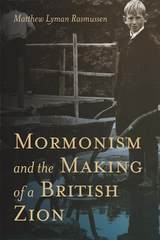 Mormonism and the Making of a British Zion
Matthew L. Rasmussen
University of Utah Press, 2016 Mormonism in Britain began in the late 1830s with the arrival of American missionaries from the Church of Jesus Christ of Latter-day Saints. Not long afterward, thousands of British converts emigrated to Utah and became a kind of lifeblood for the early Mormon Church. The English North West, where Mormonism had its strongest presence, has since become a place of profound significance to the church, both institutionally and internationally. Despite its importance to Mormonism, this history has never been fully explored. Matthew Rasmussen provides the first detailed account and examines how Mormonism has changed and endured in Britain.
After many British believers left for America, church membership in England fell so sharply that the movement in Britain seemed to be on the brink of collapse. Yet British Mormonism gradually resurged and continues today. How did this religious minority flourish when so many nineteenth-century revivalist movements did not? Rasmussen explains Mormonism’s inception, perpetuation, and maturation in Britain in a compelling case study of a “new religious movement” with staying power. From its establishment in 1837 to its maturation in 1998, the Mormon perspective of Britain shifted dramatically. This book chronicles that shift, and illustrates how doctrinal adaptation has enabled Mormonism in Britain to persist.
Mormonism: THE STORY OF A NEW RELIGIOUS TRADITION
Jan Shipps
University of Illinois Press, 1985 "Without fully and consciously realizing that they were doing so, the followers of Jesus established a new religious tradition. This book tells the story of yet another assembly of saints whose history, I believe, is in many respects analogous to the history of those early Christians who thought at first that they had found the only proper way to be Jews. Mormonism started to grow away from traditional Christianity almost immediately upon coming into existence. It began as a movement that understood itself as Christian, but. . . these nineteenth-century Latter-day Saints (as they came to be called) embarked on a path that led to developments that now distinguish their tradition from the Christian tradition as surely as early Christianity was distinguished from its Hebraic context."--From the preface
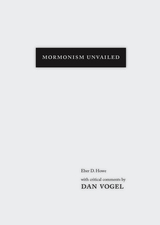 Mormonism Unvailed: Eber D. Howe, with critical comments by Dan Vogel
Eber Dudley Howe
Signature Books, 2015 Any Latter-day Saint who has ever defended his or her beliefs has likely addressed issues first raised by Eber D. Howe in 1834. Howe’s famous exposé was the first of its kind, with information woven together from previous news articles and some thirty affidavits he and others collected. He lived and worked in Painesville, Ohio, where, in 1829, he had published about Joseph Smith’s discovery of a “golden bible.” Smith’s decision to relocate in nearby Kirtland sparked Howe’s attention. Of even more concern was that Howe’s wife and other family members had joined the Mormon faith. Howe immediately began investigating the new Church and formed a coalition of like-minded reporters and detractors. By 1834, Howe had collected a large body of investigative material, including affidavits from Smith’s former neighbors in New York and from Smith’s father-inlaw in Pennsylvania. Howe learned about Smith’s early interest in pirate gold and use of a seer stone in treasure seeking and heard theories from Smith’s friends, followers, and family members about the Book of Mormon’s origin. Indulging in literary criticism, Howe joked that Smith, “evidently a man of learning,” was a student of “barrenness of style and expression.” Despite its critical tone, Howe’s exposé is valued by historians for its primary source material and account of the growth of Mormonism in northeastern Ohio.
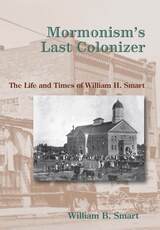 Mormonism's Last Colonizer: The Life and Times of William H. Smart
William B. Smart
Utah State University Press, 2008 Winner of the Evans Handcart Prize 2009
Winner of the Mormon History Assn Best Biography Award 2009
By the early twentieth century, the era of organized Mormon colonization of the West from a base in Salt Lake City was all but over. One significant region of Utah had not been colonized because it remained in Native American hands--the Uinta Basin, site of a reservation for the Northern Utes. When the federal government decided to open the reservation to white settlement, William H. Smart--a nineteenth-century Mormon traditionalist living in the twentieth century, a polygamist in an era when it was banned, a fervently moral stake president who as a youth had struggled mightily with his own sense of sinfulness, and an entrepreneurial businessman with theocratic, communal instincts--set out to ensure that the Uinta Basin also would be part of the Mormon kingdom. Included with the biography is a searchable CD containing William H. Smart's extensive journals, a monumental personal record of Mormondom and its transitional period from nineteenth-century cultural isolation into twentieth-century national integration.
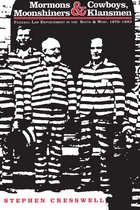 Mormons and Cowboys, Moonshiners and Klansman: Federal Law Enforcement in the South and West, 1870-1893
Stephen Cresswell
University of Alabama Press, 1991 In the decades immediately following the Civil War, the United States expanded rapidly. As the nation grew, so too did federal law, moving into areas of citizens’ lives previously regulated by local custom and state and territorial statutes. Drawing on contemporary accounts and the letters that flowed between the Washington office of the Justice Department and its attorneys and marshals throughout the states and territories, Cresswell uses a case-study approach to explore the enforcement of federal law in four regions. In northern Mississippi, the rights of freedmen to vote clashed with established rules of relations between blacks and whites. In Utah Territory, Mormon polygamy and economic dominance challenged the aspirations of non-Mormon settlers. In eastern Tennessee, desperate poverty lent enchantment to the easy money of moonshining. In Arizona Territory, frontier greed and violence threatened the lives of people and the chances of early admission to the Union of states. Mormons and Cowboys, Moonshiners and Klansmen moves beyond these local case studies to illuminate larger questions, including the evolution of the American criminal justice system, the relationship of the South and the West to the rest of the nation, the workings of the 19th-century American bureaucracy, and conflict of the local, state, and federal governments. Out of the efforts of these early federal marshals came the modern federal justice system, with its firm policy guidelines, its Federal Bureau of Investigation, and its broader powers over the country as a whole.
 Mormons and Mormonism: An Introduction to an American World Religion
Edited by Eric A. Eliason
University of Illinois Press, 2001 Mormons and Mormonism gathers key essays by leading scholars on the history, foundational ideas and practices, and worldwide expansion of the Church of Jesus Christ of Latter-day Saints. The ideal introduction to Mormonism, this choice sampler provides a selective overview of what many historians consider the most innovative and successful religion to emerge during the spiritual ferment of antebellum America.
This volume explains how the earliest Mormons viewed their religion and suggests that the Book of Mormon appeared to them as an exciting document of social protest. Contributors consider the history of persecution of the Mormons, the church's relationship with the state of Utah and with other divisions of Christianity, and culture clashes in the church's missionary efforts. Mormons and Mormonism also places beliefs such as vicarious baptism for the dead in a larger context of community and religious ideals.
The founding of Mormonism and its rapid emergence as a new world religion are among the most intriguing aspects of American religious history and among the most neglected in the religion classroom. This much-needed volume lays the groundwork for a better understanding of the LDS Church and its historical and potential impact on the United States and the world.
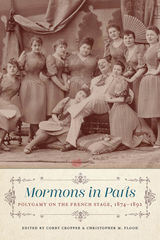 Mormons in Paris: Polygamy on the French Stage, 1874-1892
Corry Cropper
Bucknell University Press, 2021 Winner of the 2021 Best International Book Award from the Mormon History Association
In the late nineteenth century, numerous French plays, novels, cartoons, and works of art focused on Mormons. Unlike American authors who portrayed Mormons as malevolent “others,” however, French dramatists used Mormonism to point out hypocrisy in their own culture. Aren't Mormon women, because of their numbers in a household, more liberated than French women who can't divorce? What is polygamy but another name for multiple mistresses? This new critical edition presents translations of four musical comedies staged or published in France in the late 1800s: Mormons in Paris (1874), Berthelier Meets the Mormons (1875), Japheth’s Twelve Wives (1890), and Stephana’s Jewel (1892). Each is accompanied by a short contextualizing introduction with details about the music, playwrights, and staging. Humorous and largely unknown, these plays use Mormonism to explore and mock changing French mentalities during the Third Republic, lampooning shifting attitudes and evolving laws about marriage, divorce, and gender roles.
Published by Bucknell University Press. Distributed worldwide by Rutgers University Press.
Mormon's Map
John Sorenson
Foundation for Ancient Research and Mormon Studies, 2000 As the ancient prophet Mormon edited the scriptural texts that would become the Book of Mormon, he must have had a map in his mind of the places and physical features that comprised the setting for the events described in that book. Mormon’s Map is Book of Mormon scholar John Sorenson’s reconstruction of that mental map solely from information gleaned from the text after years of intensive study. He describes his method; establishes the overall shape of Book of Mormon lands; sorts out details of topography, distance, direction, climate, and civilization; and treats issues of historical geography. The resultant map will facilitate analysis of geography-related issues in the Book of Mormon narrative and also be of help in evaluating theories about where in the real world the Nephite lands were located.
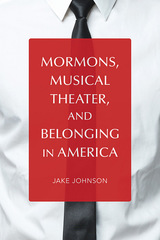 Mormons, Musical Theater, and Belonging in America
Jake Johnson
University of Illinois Press, 2019 The Church of Jesus Christ of Latter-day Saints adopted the vocal and theatrical traditions of American musical theater as important theological tenets. As Church membership grew, leaders saw how the genre could help define the faith and wove musical theater into many aspects of Mormon life. Jake Johnson merges the study of belonging in America with scholarship on voice and popular music to explore the surprising yet profound link between two quintessentially American institutions. Throughout the twentieth and twenty-first centuries, Mormons gravitated toward musicals as a common platform for transmitting political and theological ideas. Johnson sees Mormons using musical theater as a medium for theology of voice--a religious practice that suggests how vicariously voicing another person can bring one closer to godliness. This sounding, Johnson suggests, created new opportunities for living. Voice and the musical theater tradition provided a site for Mormons to negotiate their way into middle-class respectability. At the same time, musical theater became a unique expressive tool of Mormon culture.
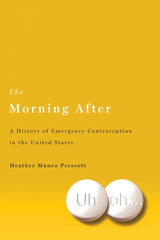 The Morning After: A History of Emergency Contraception in the United States
Prescott, Heather Munro
Rutgers University Press, 2011 Since 2006, when the “morning-after pill” Plan B was first sold over the counter, sales of emergency contraceptives have soared, becoming an $80-million industry in the United States and throughout the Western world. But emergency contraception is nothing new. It has a long and often contentious history as the subject of clashes not only between medical researchers and religious groups, but also between different factions of feminist health advocates. The Morning After tells the story of emergency contraception in America from the 1960s to the present day and, more importantly, it tells the story of the women who have used it. Side-stepping simplistic readings of these women as either radical feminist trailblazers or guinea pigs for the pharmaceutical industry, medical historian Heather Munro Prescott offers a portrait of how ordinary women participated in the development and popularization of emergency contraception, bringing a groundbreaking technology into the mainstream with the potential to alter radically reproductive health practices.
 Morning Dew and Roses: Nuance, Metaphor, and Meaning in Folksongs
Barre Toelken
University of Illinois Press, 1995 "A major academic work that is also brilliantly, clearly, humanely, and poetically written. It can be enjoyed not only by ballad and bawdry scholars but by everyone who picks it up." -- Kenneth S. Goldstein, University of Pennsylvania, former president of the American Folklore Society
"Toelken's insights . . . are unique. His study broadens and deepens scholarly appreciation of how folksong metaphors carry their own semantic weight. . . . One of the best expressions of the power of music in folksong that I have seen in recent years." -- James Porter, author of The Traditional Music of Britain and Ireland
In this lively exploration of folksongs and their meanings, Barre Toelken looks closely at riddle songs and other ambiguous folksongs, as well as the various "ballad commonplaces." Ranging through metaphors such as weaving, plowing, plucking flowers, and walking in the dew, Toelken shows how each contributes to meaning in vernacular song. He includes comparisons to German folksongs, medieval poetry, Italian folk lyrics, and a wide range of Euro-American vernacular expression.
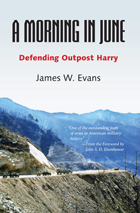 A Morning in June: Defending Outpost Harry
James W. Evans, with a foreword by John S. D. Eisenhower
University of Alabama Press, 2010 A first-hand account of the defense of Outpost Harry, a strategic position in Korea’s Chorwon Valley brutally contested by the US and Chinese armies as they jockeyed for advantageous positions in anticipation of peace negotiations in Panmunjom. Evans recounts these last days of the war and savage battles for control of important local terrain features against a determined Chinese assault.
By June 1953 the Korean War, marked at the outset by extremely fluid advances and retreats up and down the peninsula, had settled into position warfare very near the original pre-war demarcation line between North and South Korea. At this point both sides were fighting to win a peace, to achieve incremental advantages that could be translated into gains at the peace negotiations in Panmunjom. The battle at Outpost Harry devolved into hand-to-hand combat during a period of constant, intense fighting that lasted two days. The author, although seriously wounded that night, refused evacuation and remained on the hill to successfully lead his company in defense of the outpost. It wasn’t romantic; it wasn’t chivalrous; and many died or were badly wounded. Some of the survivors never fully overcame the mental and physical damage they suffered during the nightmare. With this book, one of those scarred by that experience recounts the events of the battle and his lifelong efforts to deal with the residual horrors. The Korean Conflict may be called "the forgotten war" by some, but not by those who were on the front lines.
 Morning Knowledge
Kevin Hart
University of Notre Dame Press, 2011
Kevin Hart is not only one of Australia's most important poets but a major figure in world poetry. He is a visionary writer who has taken his bearings as much from English Romanticism and European Modernism as from the Bible, Plato, and Meister Eckhart.
In Morning Knowledge, Hart grieves the passing of his father, while continuing his unique interlacing of the spiritual and the sensuous. These poems are dual in nature and inspiration, embracing the pain and passion of humanity at the same time as they evoke the immanence of God in the world. A book of elegies and love poems, prayers and lullabies, a book in which poems sing about a museum of shadows and about rats and afternoons, all wrapped in quatrains, Morning Knowledge is a major book by a poet read widely.
"The most outstanding Australian poet of his generation. . . . One of the major living poets in the English language. . . . Kevin Hart is an erudite poet, but converts his learning into passion. He is a visionary of desire and its limits." --Harold Bloom, Yale University
"This latest volume--in what must now be called the oeuvre of Kevin Hart--features a characteristically spare and yet richly evocative voice that reaches out to us and touches that place of silence within where poetry begins and often, in the hands of a master, ends. As in Thoreau's inflection of the phrase, 'morning knowledge' can entail mourning, but there is equally a celebration of life here that affirms the place of poetry in our world and the place of Kevin Hart in the world of poetry." --Paul Kane, Vassar College
"These poems, with a verbal music that is wonderfully sensuous, even entrancing, and a meaning that so purposefully evades the grasping mind it stimulates, are Kevin Hart's best so far. They reveal a poet deeply in tune with the mystical light and shadow playing over everyday experiences and leaving something of the same 'morning knowledge' that never quite faded for Wordsworth or Thoreau." --Geoffrey Hartman, Yale University
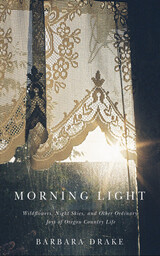 Morning Light: Wildflowers, Night Skies, and Other Ordinary Joys of Oregon Country Life
Barbara Drake
Oregon State University Press, 2014 When Barbara Drake and her husband left Portland and moved to a small farm in western Oregon’s Yamhill Valley in the late 80’s, they saw it as a temporary relocation—they would return to the city eventually. But as the couple’s experiences on the farm multiplied—training herding dogs, enlisting a pair of traveling dowsers to help them find a good well, and stargazing in a singular nighttime darkness—they decide to hang on to their rural life as long as possible.
Barbara Drake articulates the lessons she’s learned from her long stint of country living in her new book, Morning Light. Replete with records of native wildflowers, an encounter with an elderly man who lived on her farm eighty years ago, and an old family recipe for wild blackberry pudding, Morning Light is an appreciation and exploration of the landscape of western Oregon, and readers will come to know it better through the book.
As entertaining and instructive as it is personal and reflective, Drake’s writing will resonate with anyone who has experienced a convergence of family history with natural history, considered their place in the historical continuum, or wondered if their lifestyle can be sustained with age. In a world where even “the country” is becoming increasingly citified, Morning Light reminds us why we should care for our rural landscapes—while we still can.
The Morning Line: Poems
David Lehman
University of Pittsburgh Press, 2021 The Morning Line is David Lehman’s most ambitious book to date, combining wit, quotidian charm, and off-the-cuff spontaneity of poems written with candid and moving meditations on life, love, aging, disease, friendship, chance, and the possibility of redemption in a godless age.
Lehman is a poetic ventriloquist, and he expertly imitates Catullus and François Villon in new poems and offers his fresh translations of Mayakovsky’s “Cloud in Trousers” and Hölderlin’s “Half-Life.” The element of joie de vivre in Lehman’s work is distinctive and unusual in contemporary poetry.
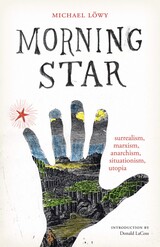 Morning Star: surrealism, marxism, anarchism, situationism, utopia
By Michael Löwy
University of Texas Press, 2009 An expanded edition of revered theorist Michael Löwy's Morning Star: Marxism and Surrealism (previously published in French, Portuguese, Spanish, Italian, and Greek), this masterwork collects the author's essays on the ways in which surrealism intersected with a variety of revolutionary political approaches, ranging from utopian ideals to Marxism and situationism. Taking its title from André Breton's essay "Arcane 17," which casts the star as the searing firebrand of rebellion, Löwy's provocative work spans many perspectives. These include surrealist artists who were deeply interested in Marxism and anarchism (Breton among them), as well as Marxists who were deeply interested in surrealism (Walter Benjamin in particular). Probing the dialectics of innovation, diversity, continuity, and unity throughout surrealism's international presence, Morning Star also incorporates analyses of Claude Cahun, Guy Debord, Pierre Naville, José Carlos Mariátegui and others, accompanied by numerous reproductions of surrealist art. An extraordinarily rich collection, Morning Star promises to ignite new dialogues regarding the very nature of dissent.
The Moro Morality Play: Terrorism as Social Drama
Robin Wagner-Pacifici
University of Chicago Press, 1986 On March 16, 1978, the former prime minister of Italy, Aldo Moro, was kidnapped by the Red Brigades, and what followed—the fifty-five days of captivity that resulted in Moro's murder—constitutes one of the most striking social dramas of the twentieth century. In this compelling study of terrorism, Robin Wagner-Pacifici employs methods from sociology, symbolic anthropology, and literary criticism to decode the many social "texts" that shaped the event: political speeches, newspaper reports, television and radio news, editorials, photographs, Moro's letters, Red Brigade communiques, and appeals by various international figures. The analysis of these "texts" calls into question the function of politics, social drama, spectacle, and theater. Wagner-Pacifici provides a dramaturgic analysis of the Moro affair as a method for discussing the culture of politics in Italy.
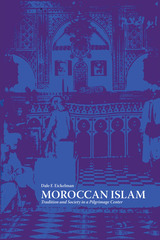 Moroccan Islam: Tradition and Society in a Pilgrimage Center
By Dale F. Eickelman
University of Texas Press, 1976 This book is one of the first comprehensive studies of Islam as locally understood in the Middle East. Specifically, it is concerned with the prevalent North African belief that certain men, called marabouts, have a special relation to God that enables them to serve as intermediaries and to influence the well-being of their clients and kin. Dale F. Eickelman examines the Moroccan pilgrimage center of Boujad and unpublished Moroccan and French archival materials related to it to show how popular Islam has been modified by its adherents to accommodate new social and economic realities. In the course of his analysis he demonstrates the necessary interrelationship between social history and the anthropological study of symbolism. Eickelman begins with an outline of the early development of Islam in Morocco, emphasizing the "maraboutic crisis" of the fourteenth through sixteenth centuries. He also examines the history and social characteristics of the Sherqawi religious lodge, on which the study focuses, in preprotectorate Morocco. In the central portion of the book, he analyzes the economic activities and social institutions of Boujad and its rural hinterland, as well as some basic assumptions the townspeople and tribesmen make about the social order. Finally, there is an intensive discussion of maraboutism as a phenomenon and the changing local character of Islam in Morocco. In focusing on the "folk" level of Islam, rather than on "high culture" tradition, the author has made possible a more general interpretation of Moroccan society that is in contrast with earlier accounts that postulated a marked discontinuity between tribe and town, past and present.
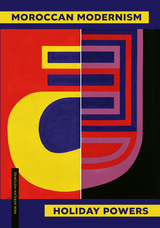 Moroccan Modernism
Holiday Powers
Ohio University Press, 2024 In the years after independence, new art forms and practices flourished at the Casablanca École des Beaux-Arts, transforming the colonial relic into a zeitgeist of Moroccan modernism. Casablanca School artists, including Farid Belkahia, Mohammed Chebaa, and Mohammed Melehi, defined the modernist movement in Morocco through their radical anticolonial pedagogy and their use of abstraction as a means of expanding the horizons of postcolonial national culture. Best known for their iconic outdoor exhibition in the large public plaza, Djemaa al Fna, in Marrakech, and for their collaborations with the cultural and political journal Souffles, the Casablanca School artists shaped the Moroccan experience of modernism through their visual arts activism. In Moroccan Modernism, Holiday Powers argues that the pedagogy and transnational solidarities of this generation of artists were intrinsic to their broader artistic projects. Powers advances a novel reading of Moroccan modernism that is rooted in its cosmopolitan national context and in the transnational anticolonial, pan-African, and pan-Arab intellectual movements that defined the era.
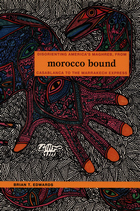 Morocco Bound: Disorienting America’s Maghreb, from Casablanca to the Marrakech Express
Brian T. Edwards
Duke University Press, 2005 Until attention shifted to the Middle East in the early 1970s, Americans turned most often toward the Maghreb—Morocco, Algeria, Tunisia, and the Sahara—for their understanding of “the Arab.” In Morocco Bound, Brian T. Edwards examines American representations of the Maghreb during three pivotal decades—from 1942, when the United States entered the North African campaign of World War II, through 1973. He reveals how American film and literary, historical, journalistic, and anthropological accounts of the region imagined the role of the United States in a world it seemed to dominate at the same time that they displaced domestic social concerns—particularly about race relations—onto an “exotic” North Africa. Edwards reads a broad range of texts to recuperate the disorienting possibilities for rethinking American empire. Examining work by William Burroughs, Jane Bowles, Ernie Pyle, A. J. Liebling, Jane Kramer, Alfred Hitchcock, Clifford Geertz, James Michener, Ornette Coleman, General George S. Patton, and others, he puts American texts in conversation with an archive of Maghrebi responses. Whether considering Warner Brothers’ marketing of the movie Casablanca in 1942, journalistic representations of Tangier as a city of excess and queerness, Paul Bowles’s collaboration with the Moroccan artist Mohammed Mrabet, the hippie communities in and around Marrakech in the 1960s and early 1970s, or the writings of young American anthropologists working nearby at the same time, Edwards illuminates the circulation of American texts, their relationship to Maghrebi history, and the ways they might be read so as to reimagine the role of American culture in the world.
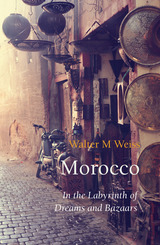 Morocco: In the Labyrinth of Dreams and Bazaars
Walter M. Weiss
Haus Publishing, 2016 While much of the Middle East is now engulfed in conflict and repression, Morocco remains a curious anomaly: peaceful and open to the West, it has provided refuge for artists and writers for generations, and it remains an exotic destination for many curious travelers. The country has been influenced by an incredible variety of peoples—Phoenicians, Romans, Arabs, Berbers, Muslims, Jews, and most of Europe’s colonizers have played a role—and modern Moroccan society is no less rich and varied.
In Morocco, Walter M. Weiss brings extensive knowledge of the region to bear as he travels the breadth and depth of the country’s social and geographical contrasts. Berber villagers of the mountains are for the most part still illiterate and consider their king to be divinely chosen, while businessmen in Casablanca’s towering offices dream of closer ties to the European Union. Weiss visits the settings of modern legends, such as Tangier, as well as the two medieval centres Fès and Meknès, and sees earthen kasbahs and Marrakech’s bazaar. On the way, he meets acrobats, Sufi musicians, pilgrims, craftsmen, beatniks, rabbis, and Berber farmers—a kaleidoscope of variety and cultural influence.
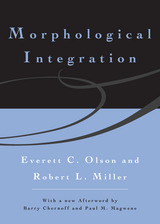 Morphological Integration
Everett C. Olson and Robert L. Miller
University of Chicago Press, 1999 Despite recent advances in genetics, development, anatomy, systematics, and morphometrics, the synthesis of ideas and research agenda put forth in the classic Morphological Integration remains remarkably fresh, timely, and relevant. Pioneers in reexamining morphology, Everett Olson and Robert Miller were among the first to explore the concept of the integrated organism in both living and extinct populations. In a new foreword and afterword, biologists Barry Chernoff and Paul Magwene summarize the landmark achievements made by Olson and Miller and bring matters discussed in the book up to date, suggest new methods, and accentuate the importance of continued research in morphological integration.
Everett C. Olson was a professor at the University of Chicago and at the University of California, Los Angeles. He was a former president of the Society of Vertebrate Paleontology. Robert L. Miller was associate professor of geology at the University of Chicago, associate scientist in marine geology at the Woods Hole Oceanographic Institution, and a member of the board of editors of the Journal of Geology.
Morphology and its Relation to Phonology and Syntax
Patrick Farrell
CSLI, 1998 Leading experts in the field have contributed to this volume which explores key issues in current morphology and the interactions of morphology with phonology and syntax. Included here are papers on compounding, argument structure, voice systems, agreement marking, movement of constituents in compounds and derived forms, haplology, affix realization, stem selection and allomorphy, levels in phonology- morphology interactions, and nonisomorphism across grammatical components. These topics are considered from a variety of theoretical perspectives, among them the theory of Lexical Conceptual Structure, the Principles and Parameters framework, Lexical Functional Grammar, Autolexical Syntax, Optimality Theory, Distributed Morphology, Paradigm-Based Realizational Morphology, and the theory of Cophonologies.
Morphology and the Web of Grammar: Essays in Memory of Steven G. Lapointe
Edited by C. Orhan Orgun and Peter Sells
CSLI, 2003 This collection presents papers in memory of Steven G. Lapointe, a distinguished professor of linguistics at the University of California, Davis, at the time of his death in 1999. Lapointe's work on morphology and its connection to other linguistic subfields was the basis of a workshop held at UC Davis in 2000. This selection of papers from that workshop discusses the relationship of morphology to phonology, syntax, and semantics, as well as the details of modern morphological theory—forming a natural continuation of the intellectual developments in Lapointe et al.'s Morphology and Its Relation to Phonology and Syntax.
Morrissey: Fandom, Representations and Identities
Edited by Eoin Devereux, Aileen Dillane, and Martin Power
Intellect Books, 2011 An influential star of British pop for more than three decades, Morrissey is known for his outspoken and often controversial views on class, ethnicity, and sexuality. Among critics and his many fans, he has long been seen as an anti-establishment figure who continues to provoke devotion, argument, and spirited debate.
This is the first collection of academic essays to focus exclusively on Morrissey’s solo career, and this important book offers a nuanced and rich reading of his highly influential creative and cultural output. Covering a broad range of academic disciplines and approaches, including musicology, ethnography, sociology, and cultural studies, these essays will be a must for fans of Morrissey or the Smiths, or those seeking to make sense of the many fascinating complexities of this global icon and controversial figure.
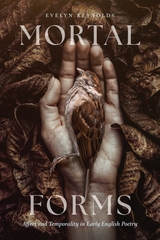 Mortal Forms: Affect and Temporality in Early English Poetry
Evelyn Reynolds
Ohio State University Press, 2026 In Mortal Forms, Evelyn Reynolds introduces the concept of the “absorption-denial dynamic” to explore how medieval English poetic forms simultaneously invite and resist imaginative and affective engagement. She thus offers a model for understanding how language engages audiences with that which is beyond language. This new methodology helps us understand how poetic forms communicate the unspeakable—especially of loss and grief, pain and disgust, joy and eternity—without circumscribing it. Connecting medieval English poetics to modern aesthetic theory and broader questions about the limits of representation, Reynolds considers Old and Middle English poems alongside one another and reads texts achronologically, thus revising standard histories of English poetics that insist on dramatic change from Old to Middle English. Overall, Reynolds deftly deploys her innovative theoretical framework to attend to how medieval poems, from Beowulf to Piers Plowman, navigate the limits of the unspeakable—and thus to develop an understanding of poetics that can enrich our capacity to meet the losses of our own time.
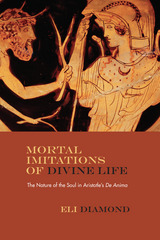 Mortal Imitations of Divine Life: The Nature of the Soul in Aristotle's De Anima
Eli Diamond
Northwestern University Press, 2015 In Mortal Imitations of Divine Life, Diamond offers an interpretation of De Anima, which explains how and why Aristotle places souls in a hierarchy of value. Aristotle’s central intention in De Anima is to discover the nature and essence of soul—the principle of living beings. He does so by identifying the common structures underlying every living activity, whether it be eating, perceiving, thinking, or moving through space. As Diamond demonstrates through close readings of De Anima, the nature of the soul is most clearly seen in its divine life, while the embodied soul’s other activities are progressively clear approximations of this principle. This interpretation shows how Aristotle’s psychology and biology cannot be properly understood apart from his theological conception of God as life, and offers a new explanation of De Anima’s unity of purpose and structure.
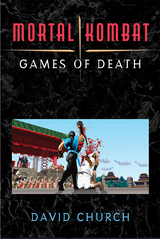 Mortal Kombat: Games of Death
David Church
University of Michigan Press, 2022 Upon its premiere in 1992, Midway’s Mortal Kombat spawned an enormously influential series of fighting games, notorious for their violent “fatality” moves performed by photorealistic characters. Targeted by lawmakers and moral reformers, the series directly inspired the creation of an industrywide rating system for video games and became a referendum on the wide popularity of 16-bit home consoles. Along the way, it became one of the world’s most iconic fighting games, and formed a transmedia franchise that continues to this day.
This book traces Mortal Kombat’s history as an American product inspired by both Japanese video games and Chinese martial-arts cinema, its successes and struggles in adapting to new market trends, and the ongoing influence of its secret-strewn narrative world. After outlining the specific elements of gameplay that differentiated Mortal Kombat from its competitors in the coin-op market, David Church examines the various martial-arts films that inspired its Orientalist imagery, helping explain its stereotypical uses of race and gender. He also posits the games as a cultural landmark from a moment when public policy attempted to intervene in both the remediation of cinematic aesthetics within interactive digital games and in the transition of public gaming spaces into the domestic sphere. Finally, the book explores how the franchise attempted to conquer other forms of media in the 1990s, lost ground to a new generation of 3D games in the 2000s, and has successfully rebooted itself in the 2010s to reclaim its legacy.
Mortal Men: Living with Asymptomatic HIV
Mac Intyre, Richard
Rutgers University Press, 1999 Narrative non-fiction. A novel-like collection of compelling conversations between an HIV-positive nurse and other gay men with asymptomatic HIV. This book transports the reader into an urban world where gay men negotiated their sexuality, mortality, and health care between the decades of heady liberation and AIDS. See "inside flap" below.
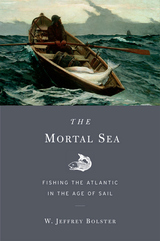 The Mortal Sea: Fishing the Atlantic in the Age of Sail
W. Jeffrey Bolster
Harvard University Press, 2012 Since the Viking ascendancy in the Middle Ages, the Atlantic has shaped the lives of people who depend upon it for survival. And just as surely, people have shaped the Atlantic. In his innovative account of this interdependency, W. Jeffrey Bolster, a historian and professional seafarer, takes us through a millennium-long environmental history of our impact on one of the largest ecosystems in the world.
While overfishing is often thought of as a contemporary problem, Bolster reveals that humans were transforming the sea long before factory trawlers turned fishing from a handliner's art into an industrial enterprise. The western Atlantic's legendary fishing banks, stretching from Cape Cod to Newfoundland, have attracted fishermen for more than five hundred years. Bolster follows the effects of this siren's song from its medieval European origins to the advent of industrialized fishing in American waters at the beginning of the twentieth century.
Blending marine biology, ecological insight, and a remarkable cast of characters, from notable explorers to scientists to an army of unknown fishermen, Bolster tells a story that is both ecological and human: the prelude to an environmental disaster. Over generations, harvesters created a quiet catastrophe as the sea could no longer renew itself. Bolster writes in the hope that the intimate relationship humans have long had with the ocean, and the species that live within it, can be restored for future generations.
The Mortal Storm
Phyllis Bottome
Northwestern University Press, 1998 A highly acclaimed anti-fascist novel, The Mortal Storm was Phyllis Bottome's dramatic warning against the warmongering, antisemitism, and misogyny of the Nazis. The story pits the developing political and feminist consciousness of Freya Roth against the Nazi machine that will destroy the fabric of her family and nation. In its combination of adventure and love story, political analysis and history, The Mortal Storm remains a powerful reminder of the greatest crisis of the twentieth century, as well as a riveting personal saga.
Mortality and Morality: A Search for Good After Auschwitz
Hans Jonas
Northwestern University Press, 1996 Mortality and Morality both consummates and demonstrates the basic thrust of Jonas's thought: the inseparability of ethics and metaphysics, the reality of values at the center of being.
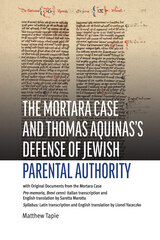 The Mortara Case and St. Thomas Aquinas's Defense of Jewish Parental Authority: with Original Documents from the Mortara Case: Pro-memoria, Syllabus, Brevi cenni
Matthew Tapie
Catholic University of America Press, 2024 The Mortara case refers to Pope Pius IX’s 1858 removal of a six-year-old Jewish boy, Edgardo Mortara, from his parents in Bologna, Italy. Six years after Edgardo was born, it was reported that the family’s Christian housekeeper had baptized the boy after he had fallen ill as an infant and was allegedly in danger of death. Since canon law and civil law stipulated that a baptized child must be raised Catholic, Pius IX used his power as head of the papal states to remove the boy.
In advocating for the return of the child, the Mortaras submitted to the Vatican a two-part document, which appealed to the teachings of Thomas Aquinas against baptism of Jewish children invitis parentibus (against the will of the parents). The papal counsel’s reply denied the request, citing Aquinas’s teaching to argue that Edgardo’s baptism was valid, and that he belonged to the Church. Today, some Catholic theologians defend or at least excuse the Pope’s decision with appeal to the works of Aquinas. Which side had the correct interpretation of Aquinas’s teaching? And how does this answer impact Catholic theology and Catholic Jewish-relations today?
The Mortara Case and St. Thomas Aquinas's Defense of Jewish Parental Authority adjudicates the claims of both sides of the debate through an analysis of Aquinas’s teaching as it is interpreted in the Italian and Latin original documents from the 1858 case, which are housed in the Vatican Apostolic Archives, and reproduced here, with facing English translations, for the first time. Tapie demonstrates that, for Aquinas, Jewish parental rights are an order of the natural law, which Aquinas likened to a spiritualis uterus (spiritual womb). Through the metaphor of the spiritual womb, Aquinas merged the Roman institution of parental rights with the theological concept of the natural law. Tapie concludes by examining baptism invitis parentibus in the current Code of Canon Law with attention to the Second Vatican Council’s teaching on religious freedom and the Jewish people.
Morte Darthur
Sir Thomas Malory
Northwestern University Press, 1968 The Morte Darthur is a superb story of adventure and love, honor and betrayal, and one of the classics of world literature. Malory perfected his art during the writing of the long and complex work and the earlier parts, though excellent, lack the dramatic power and pervasive tragic irony of the passion, war, and society that constitutes the last quarter of the book. By presenting the last quarter alone, this edition focuses on the greatness of Malory's achievement and allows the reader to see it and enjoy it more fully.
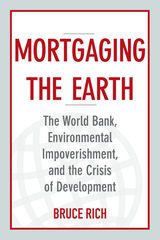 Mortgaging the Earth: The World Bank, Environmental Impoverishment, and the Crisis of Development
Bruce Rich
Island Press, 2013 The 1992 Rio Earth Summit was supposed to be a turning point for the World Bank. Environmental concerns would now play a major role in its lending—programs and projects would go beyond economic development to “sustainable development.” More than two decades later, efforts to green the bank seem pallid. Bruce Rich argues that the Bank’s current institutional problems are extensions of flaws that had been present since its founding. His new book, Foreclosing the Future, tells the story of the Bank from the Rio Earth Summit to today. For readers who want the full history of the Bank’s environmental record, Rich’s acclaimed 1994 critique, Mortgaging the Earth, is an essential companion.
Called a “detailed and thought-provoking look at an important subject” by The New York Times, Mortgaging the Earth analyzes the twenty year period leading up the Rio Summit. Rich offers not only an important history but critical insights about economic development that are ever-more relevant today.
 Mortuary Landscapes of the Classic Maya: Rituals of Body and Soul
By Andrew K. Scherer
University of Texas Press, 2015 From the tombs of the elite to the graves of commoners, mortuary remains offer rich insights into Classic Maya society. In Mortuary Landscapes of the Classic Maya: Rituals of Body and Soul, the anthropological archaeologist and bioarchaeologist Andrew K. Scherer explores the broad range of burial practices among the Maya of the Classic period (AD 250–900), integrating information gleaned from his own fieldwork with insights from the fields of iconography, epigraphy, and ethnography to illuminate this society’s rich funerary traditions. Scherer’s study of burials along the Usumacinta River at the Mexican-Guatemalan border and in the Central Petén region of Guatemala—areas that include Piedras Negras, El Kinel, Tecolote, El Zotz, and Yaxha—reveals commonalities and differences among royal, elite, and commoner mortuary practices. By analyzing skeletons containing dental and cranial modifications, as well as the adornments of interred bodies, Scherer probes Classic Maya conceptions of body, wellness, and the afterlife. Scherer also moves beyond the body to look at the spatial orientation of the burials and their integration into the architecture of Maya communities. Taking a unique interdisciplinary approach, the author examines how Classic Maya deathways can expand our understanding of this society’s beliefs and traditions, making Mortuary Landscapes of the Classic Maya an important step forward in Mesoamerican archeology.
Mortuary Practices and Social Differentiation at Casas Grandes, Chihuahua, Mexico
John C. Ravesloot
University of Arizona Press, 1988 The Anthropological Papers of the University of Arizona is a peer-reviewed monograph series sponsored by the School of Anthropology. Established in 1959, the series publishes archaeological and ethnographic papers that use contemporary method and theory to investigate problems of anthropological importance in the southwestern United States, Mexico, and related areas.
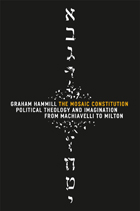 The Mosaic Constitution: Political Theology and Imagination from Machiavelli to Milton
Graham Hammill
University of Chicago Press, 2012 It is a common belief that scripture has no place in modern, secular politics. Graham Hammill challenges this notion in The Mosaic Constitution, arguing that Moses’s constitution of Israel, which created people bound by the rule of law, was central to early modern writings about government and state. Hammill shows how political writers from Machiavelli to Spinoza drew on Mosaic narrative to imagine constitutional forms of government. At the same time, literary writers like Christopher Marlowe, Michael Drayton, and John Milton turned to Hebrew scripture to probe such fundamental divisions as those between populace and multitude, citizenship and race, and obedience and individual choice. As these writers used biblical narrative to fuse politics with the creative resources of language, Mosaic narrative also gave them a means for exploring divine authority as a product of literary imagination. The first book to place Hebrew scripture at the cutting edge of seventeenth-century literary and political innovation, The Mosaic Constitution offers a fresh perspective on political theology and the relations between literary representation and the founding of political communities.
The Mosaic Decoration of San Marco, Venice
Otto Demus
University of Chicago Press, 1988 Decorated with the richest, most beautiful mosaics in the world, the Venetian church of San Marco is quite literally a treasure house of medieval art. The domes and walls of the church, encrusted with stone, glass, and gold, have been recognized, over the centuries, as a glorious historical and artistic record. Peopled with hundreds and figures—Adam and Eve, Noah and his progeny, Isaiah, Christ, Mark, of course, and other holy men and women of Venice—these mosaics create a cosmic panorama. The Mosaic Decoration of San Marco, Venice brings these unrivaled mosaics into breathtaking focus, combining a descriptive history of their creation and repair over the ages with close-up photographs revealing their iconographic detail.
A Mosaic of the Hundred Days: Personalities, Politics, and Ideas of 1898
Luke S. Kwong
Harvard University Press, 1984 This analysis of the interplay among people and of events leading up to the reform acts of 1898--the Hundred Days--and their abrupt termination presents a new interpretation of the late Ch'ing political scene. The Emperor, the Empress-Dowager, and high-court personalities are followed through the maze of motives and relationships that characterized the power structure in Peking.
Of special interest is Kwong's treatment of K'ang-Yu-Wei, often viewed as the Emperor's advisor during this period and a major source of reform policy, a promincence largely derived frm his own writings and those of Liange Ch'i-ch'ao. Those sources are here examined and show to be less than objective,and K'ang's role is assessed as far more peripheral than heretofore believed
Mosaics and other Anomalies among Ants
William M. Wheeler
Harvard University Press During 1935 Dr. Neal Albert Weber, a pupil of Professor Wheeler’s, collected in Trinidad, B. W. L, the entire personnel of two large ant-colonies which contained unprecedented numbers of anomalous individuals. The present volume deals with the smaller colony, which is that of a fungus-growing (Attine) ant, Acromyrmex octospinosus Reich. This contains only 164 anomalous individuals, but fifty-three of these are of unusual interest both because they are quite unlike any previously observed among ants or indeed among any other social insects, and because they contain the solutions of the problems of caste determination in ants which have been bothering students of ants for the past half century.
 Mosaics as History: The Near East from Late Antiquity to Islam
G. W. Bowersock
Harvard University Press, 2006 Over the past century, exploration and serendipity have uncovered mosaic after mosaic in the Near East--maps, historical images, mythical figures, and religious scenes that constitute an immense treasure of new testimony from antiquity. The stories these mosaics tell unfold in this brief, richly informed book by a preeminent scholar of the classical world.
G. W. Bowersock considers these mosaics a critical part of the documentation of the region's ancient culture, as expressive as texts, inscriptions on stone, and architectural remains. In their complex language, often marred by time, neglect, and deliberate defacement, he finds historical evidence, illustrations of literary and mythological tradition, religious icons, and monuments to civic pride. Eloquently evoking a shared vision of a world beyond the boundaries of individual cities, the mosaics attest to a persistent tradition of Greek taste that could embrace Judaism, Christianity, and Islam in a fundamentally Semitic land, and they suggest the extent to which these three monotheistic religions could themselves embrace Hellenism.
With copious color illustrations, Bowersock's efforts return us to Syrian Antioch, Arabia, Jewish and Samaritan settlements in Palestine, the Palmyrene empire in Syria, and the Nabataean kingdom in Jordan, and show us the overlay of Hellenism introduced by Alexander the Great as well as Roman customs imported by the imperial legions and governors. Attending to one of the most evocative languages of the ages, his work reveals a complex fusion of cultures and religions that speaks to us across time.
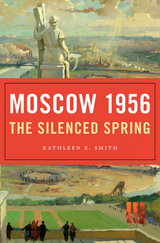 Moscow 1956: The Silenced Spring
Kathleen E. Smith
Harvard University Press, 2017 Joseph Stalin had been dead for three years when his successor, Nikita Khrushchev, stunned a closed gathering of Communist officials with a litany of his predecessor’s abuses. Meant to clear the way for reform from above, Khrushchev’s “Secret Speech” of February 25, 1956, shattered the myth of Stalin’s infallibility. In a bid to rejuvenate the Party, Khrushchev had his report read out loud to members across the Soviet Union that spring. However, its message sparked popular demands for more information and greater freedom to debate.
Moscow 1956: The Silenced Spring brings this first brief season of thaw into fresh focus. Drawing on newly declassified Russian archives, Kathleen Smith offers a month-by-month reconstruction of events as the official process of de-Stalinization unfolded and political and cultural experimentation flourished. Smith looks at writers, students, scientists, former gulag prisoners, and free-thinkers who took Khrushchev’s promise of liberalization seriously, testing the limits of a more open Soviet system.
But when anti-Stalin sentiment morphed into calls for democratic reform and eventually erupted in dissent within the Soviet bloc—notably in the Hungarian uprising—the Party balked and attacked critics. Yet Khrushchev had irreversibly opened his compatriots’ eyes to the flaws of monopolistic rule. Citizens took the Secret Speech as inspiration and permission to opine on how to restore justice and build a better society, and the new crackdown only reinforced their discontent. The events of 1956 set in motion a cycle of reform and retrenchment that would recur until the Soviet Union’s collapse in 1991.
 The Moscow Council (1917-1918): The Creation of the Conciliar Institutions of the Russian Orthodox Church
Hyacinthe Destivelle, O.P.
University of Notre Dame Press, 2015 By the early twentieth century, a genuine renaissance of religious thought and a desire for ecclesial reform were emerging in the Russian Orthodox Church. With the end of tsarist rule and widespread dissatisfaction with government control of all aspects of church life, conditions were ripe for the Moscow Council of 1917-1918 to come into being. The council was a major event in the history of the Orthodox Church. After years of struggle for reform against political and ecclesiastical resistance, the bishops, clergy, monastics, and laity who formed the Moscow Council were able to listen to one other and make sweeping decisions intended to renew the Russian Orthodox Church. Council members sought change in every imaginable area—from seminaries and monasteries, to parishes and schools, to the place of women in church life and governance. Like Vatican II, the Moscow Council emphasized the mission of the church in and to the world.
Destivelle’s study not only discusses the council and its resolutions but also provides the historical, political, social, and cultural context that preceded the council. In the only comprehensive and probing account of the council, he discusses its procedures and achievements, augmented by substantial appendices of translated conciliar documents. Tragically, due to the Revolution, the council's decisions could not be implemented to the extent its members hoped. Despite current trends in the Russian church away from the Moscow Council’s vision, the council’s accomplishments remain as models for renewal in the Eastern churches.
"Destivelle's study is a much needed and timely examination of the historic All-Russia Church Council of 1917-1918—a council that marked both the culmination and the beginning of a new epoch in modern Russian Orthodoxy. The English translation of the council's definitions and decrees, as well as the 'Statute of the Local Council of the Orthodox Church of All Russia,' along with Destivelle's exceptional commentary and annotations, will remain a foundational work for scholars and students of modern Christianity and Orthodoxy, as well as for scholars and students of Russian history for decades to come." —Vera Shevzov, Smith College
 Moscow Diary
Walter Benjamin
Harvard University Press, 1986 The life of the German-Jewish literary critic and philosopher Walter Benjamin (1892–1940) is a veritable allegory of the life of letters in the twentieth century. Benjamin’s intellectual odyssey culminated in his death by suicide on the Franco–Spanish border, pursued by the Nazis, but long before he had traveled to the Soviet Union. His stunning account of that journey is unique among Benjamin’s writings for the frank, merciless way he struggles with his motives and conscience.
Perhaps the primary reason for his trip was his affection for Asja Lācis, a Latvian Bolshevik whom he had first met in Capri in 1924 and who would remain an important intellectual and erotic influence on him throughout the twenties and thirties. Asja Lācis resided in Moscow, eking out a living as a journalist, and Benjamin’s diary is, on one level, the account of his masochistic love affair with this elusive—and rather unsympathetic—object of desire. On another level, it is the story of a failed romance with the Russian Revolution; for Benjamin had journeyed to Russia not only to inform himself firsthand about Soviet society, but also to arrive at an eventual decision about joining the Communist Party. Benjamin’s diary paints the dilemma of a writer seduced by the promises of the Revolution yet unwilling to blinker himself to its human and institutional failings.
Moscow Diary is more than a record of ideological ambivalence; its literary value is considerable. Benjamin is one of the great twentieth-century physiognomists of the city, and his portrait of hibernal Moscow stands beside his brilliant evocations of Berlin, Naples, Marseilles, and Paris. Students of this particularly interesting period will find Benjamin’s eyewitness account of Moscow extraordinarily illuminating.
 The Moscow Factor: U.S. Policy toward Sovereign Ukraine and the Kremlin
Eugene M. Fishel
Harvard University Press, 2022 In 2014, Russia illegally annexed Crimea, bolstered a separatist conflict in the Donbas region, and attacked Ukraine with its regular army and special forces. In each instance of Russian aggression, the U.S. response has often been criticized as inadequate, insufficient, or hesitant.
The Moscow Factor: U.S. Policy toward Sovereign Ukraine and the Kremlin is a unique study that examines four key Ukraine-related policy decisions across two Republican and two Democratic U.S. administrations. Eugene M. Fishel asks whether, how, and under what circumstances Washington has considered Ukraine’s status as a sovereign nation in its decision-making regarding relations with Moscow.
This study situates the stance of the United States toward Ukraine in the broader context of international relations. It fills an important lacuna in existing scholarship and policy discourse by focusing on the complex trilateral—rather than simply bilateral—dynamics between the United States, Ukraine, and Russia from 1991 to 2016. This book brings together for the first time documentary evidence and declassified materials dealing with policy deliberation, retrospective articles authored by former policymakers, and formal memoirs by erstwhile senior officials. The study is also supplemented by open-ended interviews with former and returning officials.
 Moscow: Governing the Socialist Metropolis
Timothy J. Colton
Harvard University Press, 1995 Once the hub of the tsarist state, later Brezhnev's "model Communist city"--home of the Kremlin, Red Square, and St. Basil's Cathedral--Moscow is for many the quintessence of everything Russian. Timothy Colton's sweeping biography of this city at the center of Soviet life reveals what such a position has meant to Moscow and ultimately to Russia itself.
Linchpin of the Soviet system and exemplar of its ideology, Moscow was nonetheless instrumental in the Soviet Union's demise. It was in this metropolis of nine million people that Boris Yeltsin, during two frustrating years as the city's party boss, began his move away from Communist orthodoxy. Colton charts the general course of events that led to this move, tracing the political and social developments that have given the city its modern character. He shows how the monolith of Soviet power broke down in the process of metropolitan governance, where the constraints of censorship and party oversight could not keep up with proliferating points of view, haphazard integration, and recurrent deviation from approved rules and goals. Everything that goes into making a city--from town planning, housing, and retail services to environmental and architectural concerns--figures in Colton's account of what makes Moscow unique. He shows us how these aspects of the city's organization, and the actions of leaders and elite groups within them, coordinated or conflicted with the overall power structure and policy imperatives of the Soviet Union. Against this background, Colton explores the growth of the anti-Communist revolution in Moscow politics, as well as fledgling attempts to establish democratic institutions and a market economy.
As it answers persistent questions about Soviet political history, this lavishly illustrated volume may also point the way to understanding Russia's future.
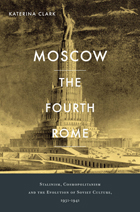 Moscow, the Fourth Rome: Stalinism, Cosmopolitanism, and the Evolution of Soviet Culture, 1931–1941
Katerina Clark
Harvard University Press, 2011 In the early sixteenth century, the monk Filofei proclaimed Moscow the “Third Rome.” By the 1930s, intellectuals and artists all over the world thought of Moscow as a mecca of secular enlightenment. In Moscow, the Fourth Rome, Katerina Clark shows how Soviet officials and intellectuals, in seeking to capture the imagination of leftist and anti-fascist intellectuals throughout the world, sought to establish their capital as the cosmopolitan center of a post-Christian confederation and to rebuild it to become a beacon for the rest of the world.
Clark provides an interpretative cultural history of the city during the crucial 1930s, the decade of the Great Purge. She draws on the work of intellectuals such as Sergei Eisenstein, Sergei Tretiakov, Mikhail Koltsov, and Ilya Ehrenburg to shed light on the singular Zeitgeist of that most Stalinist of periods. In her account, the decade emerges as an important moment in the prehistory of key concepts in literary and cultural studies today—transnationalism, cosmopolitanism, and world literature. By bringing to light neglected antecedents, she provides a new polemical and political context for understanding canonical works of writers such as Brecht, Benjamin, Lukacs, and Bakhtin.
Moscow, the Fourth Rome breaches the intellectual iron curtain that has circumscribed cultural histories of Stalinist Russia, by broadening the framework to include considerable interaction with Western intellectuals and trends. Its integration of the understudied international dimension into the interpretation of Soviet culture remedies misunderstandings of the world-historical significance of Moscow under Stalin.
Moscow to the End of the Line
Venedikt Erofeev, translated from the Russian by H. William Tjalsma
Northwestern University Press, 1992 In this classic of Russian humor and social commentary, a fired cable fitter goes on a binge and hopes a train to Petushki (where his "most beloved of trollops" awaits). On the way he bestows upon angels, fellow passengers, and the world at large a magnificent monologue on alcohol, politics, society, alcohol, philosophy, the pains of love, and, of course, alcohol.
 Moscow Yankee
Myra Page
University of Illinois Press, 1995 The Depression era closing
of a Ford plant sends Andy and two companions to Moscow to find work in
a Soviet automotive plant, where he meets Natasha, an exemplar of the
"new Soviet woman." Based on Myra Page's own experiences in Moscow during
the first Five-Year Plan, Natasha is a portrait of women's contradictory
social position in the early periods of socialist construction. At the
core of this novel is a firsthand look at the developing forces and changing
relations of production forces that bring about the conversion of Andy
into a "Moscow Yankee." While revealing the political and economic policies
that would inevitably lead to the demise of Soviet-style socialism, Moscow
Yankee refutes the notion that egalitarian societies cannot succeed
because they fail to take into account the individualism and greed of
"human nature." Barbara Foley's introduction analyzes the Soviet Socialist
construction in Page's novel and the politics of the novelistic form in
relation to Moscow Yankee.
Originally published in 1935
"A picture of Americans lured
to Moscow by hope in the 'great experiment,' and of others driven there
by the depression, and of still others attracted by the simple desire
to get good engineering jobs, Moscow Yankee; has a decided
value . . . a sense of life, stirring in the chaos of destruction and
reconstruction." -- The New York Times Book Review
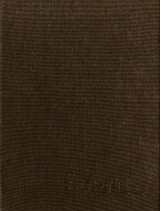 Mosè in Egitto: Azione tragico-sacra in Three Acts by Andrea Leone Tottola
Gioachino Rossini
University of Chicago Press, 2005 Gioachino Rossini's Mosè in Egitto is an opera that emerged from the eighteenth- and nineteenth-century Italian tradition of oratorios written to be performed during Lent. The three-act opera draws from the Biblical book of Exodus to chronicle the story of Moses liberating the Israelites from Pharaoh's rule and guiding them out of Egypt. The librettist, Andrea Leone Tottola, also borrowed from an eighteenth-century drama to add a love affair between Pharaoh's son and an Israelite girl that motivates Pharaoh's final, fatal refusal in the opera to free the Israelites.
This critical edition presents the version performed in 1820 after Rossini had revised the unsuccessful and now lost third act of 1818. The edition includes an appendix with the original aria for Pharaoh written by Michele Carafa, which was performed throughout the nineteenth century even after Rossini replaced it with one of his own. Also featured are vocal ornamentation used in Paris performances and detailed information on the Paris productions between 1822 and 1840. This comprehensive critical edition provides a reliable source for interpretation and study of a work that Rossini called "sublime."
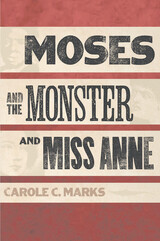 Moses and the Monster and Miss Anne
Carole C. Marks
University of Illinois Press, 2008 This engaging history presents the extraordinary lives of Patty Cannon, Anna Ella Carroll, and Harriet Tubman, three "dangerous" women who grew up in early-nineteenth-century Maryland and were vigorously enmeshed in the social and political maelstrom of antebellum America. The "monstrous" Patty Cannon was a reputed thief, murderer, and leader of a ruthless gang who kidnapped free blacks and sold them back into slavery, whereas Miss Anna Ella Carroll, a relatively genteel unmarried slaveholder, foisted herself into state and national politics by exerting influence on legislators and conspiring with Governor Thomas Holliday Hicks to keep Maryland in the Union when many state legislators clamored to join the Confederacy. And, of course, Harriet Tubman--slave rescuer, abolitionist, and later women's suffragist--was both hailed as "the Moses of her people" and hunted as an outlaw with a price on her head worth at least ten thousand dollars. All three women lived for a time in close proximity on the Eastern Shore of Maryland, an isolated region that thrived on tobacco and then lost it, procured slaves and then lost them, and produced strong-minded women and then condemned them. Though they never actually met, and their backgrounds and beliefs differed drastically, these women's lives converged through their active experiences of the conflict over slavery in Maryland and beyond, the uncertainties of economic transformation, the struggles in the legal foundation of slavery and, most of all, the growing dispute in gender relations in America. Throughout this book, Carole C. Marks gleans historical fact and sociological insight from the persistent myths and exaggerations that color the women's legacies, and she investigates the common roots and motivations of three remarkable figures who bucked the era's expectations for women. She also considers how each woman's public identity reflected changing ideas of domesticity and the public sphere, spirituality, and legal rights and limitations. Cannon, Carroll, and Tubman, each in her own way, passionately fought for the future of Maryland and the United States, and from these unique vantage points, Moses and the Monster and Miss Anne portrays the intersecting and conflicting forces of race, economics, and gender that threatened to rend a nation apart.
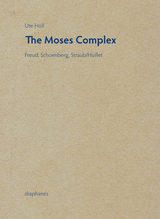 The Moses Complex: Freud, Schoenberg, Straub/Huillet
Ute Holl
Diaphanes, 2016 Moses has long been a source of modern fascination. For Sigmund Freud and psychoanalysis, Moses was a particularly fruitful subject for the study of memory and historiography. He also held great interest for the visual and performing arts. In the 1920s and ’30s, the composer Arnold Schoenberg wrote the three-act opera Moses and Aron. First performed just a few years before his exile to the United States, it required that its audiences distinguish voices from forceful background noise, just as Moses had to confront the burning bush before he could hear the voice of God. In 1974, filmmakers Jean-Marie Straub and Danièle Huillet created an avant-garde cinematic adaptation of Schoenberg’s opera that continued the composer’s examination of the established hierarchies of seeing and hearing.
In The Moses Complex, Ute Holl analyzes these major works in detail and deep historical context, synthesizing the complex models of resistance to explore the relationships among media, migration, and politics. Since Moses descended from Sinai with the tablets inscribed with the Ten Commandments, new media and new laws have often emerged simultaneously. Liberation, in particular, has been negotiated through many different cultural media, with psychoanalysis, music, and cinema all describing exodus and exile as a process of force. Offering a dynamic and comprehensive political and cultural theory of migration and violence, The Moses Complex speaks equally well to psychoanalytic, musical, and cinematic thinking as it does to our tendency toward violence in the treatment of migrants today.
Moses Maimonides and His Time
Eric L. Ormsby
Catholic University of America Press, 2018 A collection of essasys on the philosophy of Moses Maimonides.
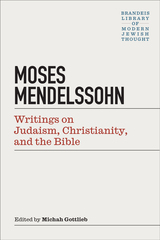 Moses Mendelssohn: Writings on Judaism, Christianity, and the Bible
Edited by Michah Gottlieb
Brandeis University Press, 2011 German Jewish philosopher Moses Mendelssohn (1729–1786) is best known in the English-speaking world for his Jerusalem (1783), the first attempt to present Judaism as a religion compatible with the ideas of the Enlightenment. While incorporating much of Jerusalem, Michah Gottlieb’s volume seeks to expand knowledge of Mendelssohn’s thought by presenting translations of many of his other seminal writings from the German or Hebrew originals. These writings include essays, commentaries, unpublished reflections, and personal letters. Part One includes selections from the three major controversies of Mendelssohn’s life, all of which involved polemical encounters with Christian thinkers. Part Two presents selections from Mendelssohn’s writings on the Bible. Part Three offers texts that illuminate Mendelssohn’s thoughts on a diverse range of religious topics, including God’s existence, the immortality of the soul, and miracles. Designed for class adoption, the volume contains annotations and an introduction by the editor.
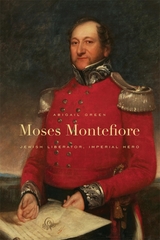 Moses Montefiore: Jewish Liberator, Imperial Hero
Abigail Green
Harvard University Press, 2010 Humanitarian, philanthropist, and campaigner for Jewish emancipation on a grand scale, Sir Moses Montefiore (1784–1885) was the preeminent Jewish figure of the nineteenth century—and one of the first truly global celebrities. His story, told here in full for the first time, is a remarkable and illuminating tale of diplomacy and adventure. Abigail Green’s sweeping biography follows Montefiore through the realms of court and ghetto, tsar and sultan, synagogue and stock exchange.
Interweaving the public triumph of Montefiore’s foreign missions with the private tragedy of his childless marriage, this book brings the diversity of nineteenth-century Jewry brilliantly to life—from London to Jerusalem, Rome to St. Petersburg, Morocco to Istanbul. Here we see the origins of Zionism and the rise of international Jewish consciousness, the faltering birth of international human rights, and the making of the modern Middle East. With the globalization and mobilization of religious identities now at the top of the political agenda, Montefiore’s life story is relevant as never before.
Mining materials from eleven countries in nine languages, Green’s masterly biography bridges the East-West divide in modern Jewish history, presenting the transformation of Jewish life in Europe, the Middle East, and the New World as part of a single global phenomenon. As it reestablishes Montefiore’s status as a major historical player, it also restores a significant chapter to the history of our modern world.
 Moses the Egyptian: The Memory of Egypt in Western Monotheism
Jan Assmann
Harvard University Press, 1997 Standing at the very foundation of monotheism, and so of Western culture, Moses is a figure not of history, but of memory. As such, he is the quintessential subject for the innovative historiography Jan Assmann both defines and practices in this work, the study of historical memory--a study, in this case, of the ways in which factual and fictional events and characters are stored in religious beliefs and transformed in their philosophical justification, literary reinterpretation, philological restitution (or falsification), and psychoanalytic demystification.
To account for the complexities of the foundational event through which monotheism was established, Moses the Egyptian goes back to the short-lived monotheistic revolution of the Egyptian king Akhenaten (1360-1340 B.C.E.). Assmann traces the monotheism of Moses to this source, then shows how his followers denied the Egyptians any part in the origin of their beliefs and condemned them as polytheistic idolaters. Thus began the cycle in which every "counter-religion," by establishing itself as truth, denounced all others as false. Assmann reconstructs this cycle as a pattern of historical abuse, and tracks its permutations from ancient sources, including the Bible, through Renaissance debates over the basis of religion to Sigmund Freud's Moses and Monotheism. One of the great Egyptologists of our time, and an exceptional scholar of history and literature, Assmann is uniquely equipped for this undertaking--an exemplary case study of the vicissitudes of historical memory that is also a compelling lesson in the fluidity of cultural identity and beliefs.
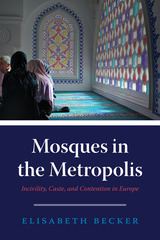 Mosques in the Metropolis: Incivility, Caste, and Contention in Europe
Elisabeth Becker
University of Chicago Press, 2021 Mosques in the Metropolis offers a unique look into two of Europe’s largest mosques and the communities they support. Elisabeth Becker provides a complex picture of Islam in Europe at a particularly fraught time, shedding light on both experiences of deep and enduring marginalization and the agency of Muslim populaces. She balances individual Muslim voices with the historical and structural forces at play, revealing, in all their complexity, the people for whom the mosques are centers of religion and community life. As her interlocutors come to life in the pages, the metropolis emerges as a space alternative to the nation in which they can contend with degrading images of Islam and Muslims. Ultimately Becker insists that caste is a crucial lens through which to view Muslims in Europe, and through this lens she critiques what she perceives as the failures of European pluralism. To amplify her point, she brings Jewish history and twentieth-century Jewish thought into the conversation directly, drawing on scholars such as Walter Benjamin, Zygmunt Bauman, and Hannah Arendt to describe both Jewish and Muslim life and marginality. By challenging Eurocentric notions, from “progress” to “civility,” “tolerance” to “freedom” and “equality, what is at stake, Becker insists, is the possibility of a truly plural Europe.
The Mosquito Bite Author
Baris Biçakçi, Translated by Matthew Chovanec
University of Texas Press, 2020 Originally published in 2011, The Mosquito Bite Author is the seventh novel by the acclaimed Turkish author Barış Bıçakçı. It follows the daily life of an aspiring novelist, Cemil, in the months after he submits his manuscript to a publisher in Istanbul. Living in an unremarkable apartment complex in the outskirts of Ankara, Cemil spends his days going on walks, cooking for his wife, repairing leaks in his neighbor’s bathroom, and having elaborate imaginary conversations in his head with his potential editor about the meaning of life and art. Uncertain of whether his manuscript will be accepted, Cemil wavers between thoughtful meditations on the origin of the universe and the trajectory of political literature in Turkey, panic over his own worth as a writer, and incredulity toward the objects that make up his quiet world in the Ankara suburbs.
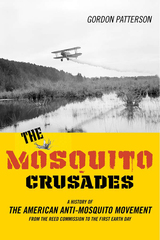 The Mosquito Crusades: A History of the American Anti-Mosquito Movement from the Reed Commission to the First Earth Day
Patterson, Gordon
Rutgers University Press, 2009 Among the struggles of the twentieth century, the one between humans and mosquitoes may have been the most vexing, as demonstrated by the long battle to control these bloodsucking pests. As vectors of diseases such as malaria, yellow fever, encephalitis, and dengue fever, mosquitoes forced open a new chapter in the history of medical entomology. Based on extensive use of primary sources, The Mosquito Crusades traces this saga and the parallel efforts of civic groups in New Jersey's Meadowlands and along San Francisco Bay's east side to manage the dangerous mosquito population. Providing readers with a fascinating exploration of the relationship between science, technology, and public policy, Gordon Patterson's narrative begins in New Jersey with John B. Smith's effort to develop a comprehensive plan and solution for mosquito control, one that would serve as a national model. From the Reed Commission's 1900 yellow fever experiment to the first Earth Day seventy years later, Patterson provides an eye-opening account of the crusade to curtail the deadly mosquito population.
Mosquitoes of the Southeastern United States
Nathan D. Burkett-Cadena
University of Alabama Press, 2013 , , , Mosquitoes of the Southeastern United States is a full-color, highly-illustrated guide to the 64 known species of mosquitoes in 11 genera that populate the South's main geographical area--from the Gulf Coastal states to the Carolinas. , ,
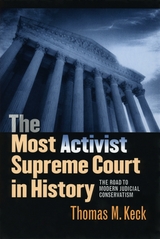 The Most Activist Supreme Court in History: The Road to Modern Judicial Conservatism
Thomas M. Keck
University of Chicago Press, 2004 When conservatives took control of the federal judiciary in the 1980s, it was widely assumed that they would reverse the landmark rights-protecting precedents set by the Warren Court and replace them with a broad commitment to judicial restraint. Instead, the Supreme Court under Chief Justice William Rehnquist has reaffirmed most of those liberal decisions while creating its own brand of conservative judicial activism.
Ranging from 1937 to the present, The Most Activist Supreme Court in History traces the legal and political forces that have shaped the modern Court. Thomas M. Keck argues that the tensions within modern conservatism have produced a court that exercises its own power quite actively, on behalf of both liberal and conservative ends. Despite the long-standing conservative commitment to restraint, the justices of the Rehnquist Court have stepped in to settle divisive political conflicts over abortion, affirmative action, gay rights, presidential elections, and much more. Keck focuses in particular on the role of Justices O'Connor and Kennedy, whose deciding votes have shaped this uncharacteristically activist Court.
 Most Adaptable to Change: Evolution and Religion in Global Popular Media
Alexander Hall
University of Pittsburgh Press, 2024 In a globalized and networked world, where media crosses national borders, contributors reveal how transnational processes have shaped popular representations of scientific and religious ideas in the United Kingdom, Argentina, Ecuador, India, Spain, Turkey, Israel, and Japan. Most Adaptable to Change demonstrates the varied and divergent ways evolutionary ideas and nonscientific traditions and ways of understanding life on Earth have transformed across the globe. By examining a range of popular media forms across a multitude of different geopolitical contexts from the 1920s to today, this book traces how different evolutionary traditions and figures have been championed or discredited by different religious traditions, their spiritual leaders, and politicians using the cultural authority of religion as leverage. It analyzes the ways in which evolutionary theory has been mobilized explicitly for the purposes of addressing wider sociopolitical questions, and it is the first collection of its kind to explicitly explore the role of popular media formats themselves as mediators in institutional debates on the relationship between evolution and religion.
 A Most Amazing Scene of Wonders: Electricity and Enlightenment in Early America
James Delbourgo
Harvard University Press, 2006 Benjamin Franklin's invention of the lightning rod is the founding fable of American science, but Franklin was only one of many early Americans fascinated by electricity. As a dramatically new physical experience, electricity amazed those who dared to tame the lightning and set it coursing through their own bodies. Thanks to its technological and medical utility, but also its surprising ability to defy rational experimental mastery, electricity was a powerful experience of enlightenment, at once social, intellectual, and spiritual.
In this compelling book, James Delbourgo moves beyond Franklin to trace the path of electricity through early American culture, exploring how the relationship between human, natural, and divine powers was understood in the eighteenth century. By examining the lives and visions of natural philosophers, spectacular showmen, religious preachers, and medical therapists, he shows how electrical experiences of wonder, terror, and awe were connected to a broad array of cultural concerns that defined the American Enlightenment. The history of lightning rods, electrical demonstrations, electric eels, and medical electricity reveals how early American science, medicine, and technology were shaped by a culture of commercial performance, evangelical religion, and republican politics from mid-century to the early republic.
The first book to situate early American experimental science in the context of a transatlantic public sphere, A Most Amazing Scene of Wonders offers a captivating view of the origins of American science and the cultural meaning of the American Enlightenment. In a story of shocks and sparks from New England to the Caribbean, Delbourgo brilliantly illuminates a revolutionary New World of wonder.
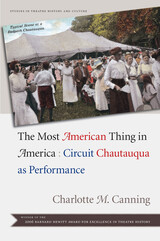 The Most American Thing in America: Circuit Chautauqua as Performance
Canning, Charlotte M.
University of Iowa Press, 2005 Winner of the 2006 Barnard Hewitt Award for Excellence in Theatre History
Between 1904 and the Great Depression, Circuit Chautauquas toured the rural United States, reflecting and reinforcing its citizens’ ideas, attitudes, and politics every summer through music (the Jubilee Singers, an African American group, were not always welcome in a time when millions of Americans belonged to the KKK), lectures (“Civic Revivalist” Charles Zueblin speaking on “Militancy and Morals”), elocutionary readers (Lucille Adams reading from Little Lord Fauntleroy), dramas (the Ben Greet Players’ cleaned-up version of She Stoops to Conquer), orations (William Jennings Bryan speaking about the dangers of greed), and special programs for children (parades and mock weddings).
Theatre historians have largely ignored Circuit Chautauquas since they did not meet the conventional conditions of theatrical performance: they were not urban; they produced no innovative performance techniques, stage material, design effects, or dramatic literature. In this beautifully written and illustrated book, Charlotte Canning establishes an analytical framework to reveal the Circuit Chautauquas as unique performances that both created and unified small-town America.
One of the last strongholds of the American traditions of rhetoric and oratory, the Circuits created complex intersections of community, American democracy, and performance. Canning does not celebrate the Circuit Chautauquas wholeheartedly, nor does she describe them with the same cynicism offered by Sinclair Lewis. She acknowledges their goals of community support, informed public thinking, and popular education but also focuses on the reactionary and regressive ideals they sometimes embraced. In the true interdisciplinary spirit of Circuit Chautauquas, she reveals the Circuit platforms as places where Americans performed what it meant to be American.
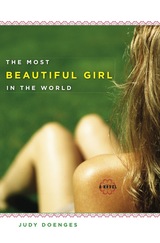 The Most Beautiful Girl in the World
Judy Doenges
University of Michigan Press, 2006 Judy Doenges's brilliant first novel is the deeply affecting story of Robin Simonsen, a girl growing up in the 1960s and 70s on the wrong side of a Chicago suburb. After the death of her young mother, Robin is left with her kind but irresponsible father-a junkman turned drug dealer-and her grandmother, a retired Vegas showgirl, both of whom draw local fixers and ex-cons into the Simonsens' increasingly shady home. Bright, wise, and observant, Robin is the quiet outsider to her hedonistic family, struggling to come to terms with her ardent love for girls.
Trapped in a house scarily alive with a rogues gallery of hapless and often hilarious crooks, misfits, and hangers-on, Robin must look elsewhere for stability, befriending the son of the neighborhood's only African American family-a boy whose unimpeachable manners and flawless grades mask his own sexuality-while falling in love with the high school beauty.
Wry, edgy, and smart, The Most Beautiful Girl in the World offers a new kind of young heroine, one who stands fearlessly at the precipice of her family and her town's self-destruction, defiantly fighting to save herself.
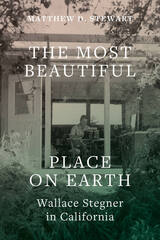 The Most Beautiful Place on Earth: Wallace Stegner in California
Matthew D. Stewart
University of Utah Press, 2021 As author of the “Wilderness Letter” and major award-winning novels, histories, essays, and biographies, Wallace Stegner worked throughout his life to protect western lands, places, and peoples. His writing was and remains an inspiration and guide for countless people attempting to cultivate a sense of place in the American West while tacking their way through uncertain times.
This book tells the story of Stegner and his family as they made a home just outside of Palo Alto, California, during its transition from the Valley of Heart’s Delight (known for its rolling hills and orchards) to Silicon Valley. In this thoughtful study of the novels Stegner wrote in California—including his Pulitzer Prize–winning Angle of Repose—readers are invited to consider with Stegner what the practice of place requires in the American West. Specialists in the literature and history of the American West will find new analyses of Stegner and his influential work. Other readers will be guided through Stegner’s work in concrete and accessible prose, and anyone who has longed for home and a sense of place will encounter a powerful, beautiful, and at times tragic attempt to build and preserve it.
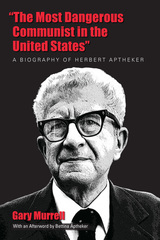 “The Most Dangerous Communist in the United States”: A Biography of Herbert Aptheker
Gary Murrell
University of Massachusetts Press, 2015 When J. Edgar Hoover declared Herbert Aptheker "the most dangerous Communist in the United States," the notorious FBI director misconstrued his true significance. In this first book-length biography of Aptheker (1915–2003), Gary Murrell provides a balanced yet unflinching assessment of the controversial figure who was at once a leading historian of African America, radical political activist, literary executor of W. E. B. Du Bois, and lifelong member of the American Communist Party. Although blacklisted at U.S. universities, Aptheker published dozens of books, including the groundbreaking American Negro Slave Revolts (1943) and the monumental seven-volume Documentary History of the Negro People (1951–1994). He also edited four volumes of the correspondence and unpublished writings of Du Bois, an achievement that Eric Foner, writing in the New York Times Book Review, called "a milestone in the coming of age of Afro-American history."
As Murrell shows, Aptheker the historian was inseparable from Aptheker the leading Communist Party intellectual, polemicist, and agitator. During the 1960s, his ability to rouse and inspire both black and white student radicals made him one of the few Old Leftists accepted by the New Left. Aptheker had joined the CPUSA during its heyday in the 1930s, convinced that only through the party's leadership could fascism be defeated and true liberation be achieved: he ended his affiliation five decades later in 1991 after the collapse of socialism in the Soviet Union and Eastern Europe.
In an afterword, Bettina Aptheker adds to Murrell's narrative by illuminating her mother Fay's vital contributions to her father's work and by affirming the particularly devastating challenges of life in a family dedicated to radical political and social change.
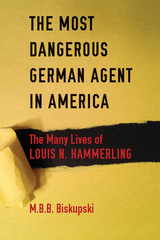 The Most Dangerous German Agent in America: The Many Lives of Louis N. Hammerling
M. B. B. Biskupski
Northern Illinois University Press, 2015 On the morning of April 27, 1935, Louis N. Hammerling fell to his death from the nineteenth floor of an apartment in New York City, where he lived alone. Hammerling was one of the most influential Polish immigrants in turn-of-the-century America and the leading voice and advocate of the Eastern Europeans who had come to the country seeking a better life. He was also a pathological liar, a crook, a swindler, a ruthless entrepreneur, and a patriot—of which nation he could never decide.
In the United States, Hammerling rose from the poverty of his youth to the heights of wealth and power. He was a timberman and mule driver in the Pennsylvania coal mines, an indentured worker in the Hawaiian sugar fields, one of the major behind-the-scenes powers in the United Mine Workers, an employee of the Hearst newspaper chain, an influential figure in the Republican Party, the owner of an advertising agency that made him a millionaire, a correspondent of Theodore Roosevelt and William Howard Taft, and a senator of the Polish Republic. A Jew whose conversion to Catholicism did not protect him from anti-Semitism, Hammerling was monitored by state and federal agencies and was, in the words of his pursuers, “the most dangerous German agent in America.”
M. B. B. Biskupski consulted more than forty archives in four countries, using trial testimony, intelligence reports, and blackmail correspondence to reconstruct Hammerling’s story. The life of this mysterious man offers a window through which to see larger themes: labor and immigration politics in late nineteenth- and early twentieth-century America, espionage during World War I, the birth of modern Polish politics, and the tragic struggle of a poor immigrant striving for success in America. Scholars and general readers alike will be interested in this fascinating book.
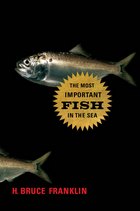 The Most Important Fish in the Sea: Menhaden and America
H. Bruce Franklin
Island Press, 2008 In this brilliant portrait of the oceans’ unlikely hero, H. Bruce Franklin shows how menhaden have shaped America’s national—and natural—history, and why reckless overfishing now threatens their place in both. Since Native Americans began using menhaden as fertilizer, this amazing fish has greased the wheels of U.S. agriculture and industry. By the mid-1870s, menhaden had replaced whales
as a principal source of industrial lubricant, with hundreds of ships and dozens of factories along the eastern seaboard working feverishly to produce fish oil. Since the Civil War, menhaden have provided the largest catch of any American fishery.
Today, one company—Omega Protein—has a monopoly on the menhaden “reduction industry.” Every year it sweeps billions of fish from the sea, grinds them up, and turns them into animal feed, fertilizer, and oil used in everything from linoleum to health-food supplements. The massive harvest wouldn’t be such a problem if menhaden were only good for making lipstick and soap. But they are crucial to the diet of bigger fish and they filter the waters of the Atlantic and Gulf coasts, playing an essential dual role in marine ecology perhaps unmatched anywhere on the planet. As their numbers have plummeted, fish and birds dependent on them have been decimated
and toxic algae have begun to choke our bays and seas. In Franklin’s vibrant prose, the decline of a once ubiquitous fish becomes an adventure story, an exploration of the U.S. political economy, a groundbreaking history of America’s emerging ecological consciousness, and an inspiring vision of a growing alliance between environmentalists and recreational anglers.
 The Most Important Fish in the Sea: Menhaden and America
H. Bruce Franklin
Island Press, 2008 In this brilliant portrait of the oceans’ unlikely hero, H. Bruce Franklin shows how menhaden have shaped America’s national—and natural—history, and why reckless overfishing now threatens their place in both. Since Native Americans began using menhaden as fertilizer, this amazing fish has greased the wheels of U.S. agriculture and industry. By the mid-1870s, menhaden had replaced whales as a principal source of industrial lubricant, with hundreds of ships and dozens of factories along the eastern seaboard working feverishly to produce fish oil. Since the Civil War, menhaden have provided the largest catch of any American fishery. Today, one company—Omega Protein—has a monopoly on the menhaden “reduction industry.” Every year it sweeps billions of fish from the sea, grinds them up, and turns them into animal feed, fertilizer, and oil used in everything from linoleum to health-food supplements.
The massive harvest wouldn’t be such a problem if menhaden were only good for making lipstick and soap. But they are crucial to the diet of bigger fish and they filter the waters of the Atlantic and Gulf coasts, playing an essential dual role in marine ecology perhaps unmatched anywhere on the planet. As their numbers have plummeted, fish and birds dependent on them have been decimatedand toxic algae have begun to choke our bays and seas. In Franklin’s vibrant prose, the decline of a once ubiquitous fish becomes an adventure story, an exploration of the U.S. political economy, a groundbreaking history of America’s emerging ecological consciousness, and an inspiring vision of a growing alliance between environmentalists and recreational anglers.
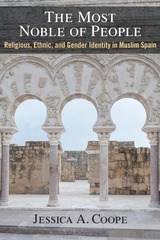 The Most Noble of People: Religious, Ethnic, and Gender Identity in Muslim Spain
Jessica A. Coope
University of Michigan Press, 2017 The Most Noble of People presents a nuanced look at questions of identity in Muslim Spain under the Umayyads, an Arab dynasty that ruled from 756 to 1031. With a social historical emphasis on relations among different religious and ethnic groups, and between men and women, Jessica A. Coope considers the ways in which personal and cultural identity in al-Andalus could be alternately fluid and contentious.
The opening chapters define Arab and Muslim identity as those categories were understood in Muslim Spain, highlighting the unique aspects of this society as well as its similarities with other parts of the medieval Islamic world. The book goes on to discuss what it meant to be a Jew or Christian in Spain under Islamic rule, and the degree to which non-Muslims were full participants in society. Following this is a consideration of gender identity as defined by Islamic law and by less normative sources like literature and mystical texts. It concludes by focusing on internal rebellions against the government of Muslim Spain, particularly the conflicts between Muslims who were ethnically Arab and those who were Berber or native Iberian, pointing to the limits of Muslim solidarity.
Drawn from an unusually broad array of sources—including legal texts, religious polemic, chronicles, mystical texts, prose literature, and poetry, in both Arabic and Latin—many of Coope’s illustrations of life in al-Andalus also reflect something of the larger medieval world. Further, some key questions about gender, ethnicity, and religious identity that concerned people in Muslim Spain—for example, women’s status under Islamic law, or what it means to be a Muslim in different contexts and societies around the world—remain relevant today.
 Most of the Stars: An American Song
Pietro Federico
St. Augustine's Press, 2024 The muse of Pietro Federico’s most recent collection of poems, La Maggioranza delle Stelle (Most of the Stars), is the United States of America, her people and landscapes. In fifty poems (one for each state), Federico plumbs the depths of the historic, geographic, political, emotional, psychological, and metaphysical realms through a variety of voices of these fifty states. Translated from Italian into English by the author with American poet John Poch, this book is unlike any other collection of poems. Federico is fascinated by the American spirit, to use the words of Giancarlo Pontiggia, "an America made up of stories as raw, rough, endless and inconclusive as the immense landscapes in which they took place."
In Most of the Stars the linguistic power of the Italian literary tradition and the contemporary vernacular combine to articulate an idiosyncratic understanding of the New World—the breadth of its cities, its towns, its frontiers and interiors. Federico’s deeply spiritual understanding of our own American personalities and histories offers us a gift of beautiful objectivity. Students of poetry, linguistics, and cultural anthropology will be grateful to Federico and Poch for the wonder offered in this bilingual collection.
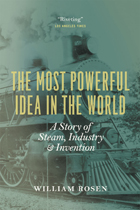 The Most Powerful Idea in the World: A Story of Steam, Industry, and Invention
William Rosen
University of Chicago Press, 2012 Hardly a week passes without some high-profile court case that features intellectual property at its center. But how did the belief that one could own an idea come about? And how did that belief change the way humankind lives and works?
William Rosen, author of Justinian's Flea, seeks to answer these questions and more with The Most Powerful Idea in the World. A lively and passionate study of the engineering and scientific breakthroughs that led to the steam engine, this book argues that the very notion of intellectual property drove not only the invention of the steam engine but also the entire Industrial Revolution: history’s first sustained era of economic improvement. To do so, Rosen conjures up an eccentric cast of characters, including the legal philosophers who enabled most the inventive society in millennia, and the scientists and inventors—Thomas Newcomen, Robert Boyle, and James Watt—who helped to create and perfect the steam engine over the centuries. With wit and wide-ranging curiosity, Rosen explores the power of creativity, capital, and collaboration in the brilliant engineering of the steam engine and how this power source, which fueled factories, ships, and railroads, changed human history.
Deeply informative and never dull, Rosen's account of one of the most important inventions made by humans is a rollicking ride through history, with careful scholarship and fast-paced prose in equal measure.
|
|
